Native

An Important Private Belgian Collection
21 October 2023 - Brussels


An Important Private Belgian Collection
21 October 2023 - Brussels
Preview & Auction
Rue Américaine, 26-28 1060 Brussels
Office and depot Ruisbroeck Galerij 5
Galerie de Ruysbroeck 5 1000 Brussels
info@native-auctions.com
T +32 (0) 2 514 04 42
Nicolas Paszukiewicz
n.paszukiewicz@native-auctions.com
Sébastien Hauwaert
s.hauwaert@native-auctions.com
Gilles Marquenie
g.marquenie@native-auctions.com
One’s destination is never a place but rather a new way of looking at things.
Henry MillerWhen starting a collection – regardless of its focus – one tends to embark on a quest where the journey becomes more important than the destination. For the collection we are proud to present in this sale, the history of its genesis started with a passion for photographs. Not any kind of photographs, but exceptional pieces: Man Ray’s Mathematical Object that was used for the "Cahiers d’Art" magazine of May 1936 – not just a vintage print, but that very copy - a Brancusi photograph that captures the unfathomable elegance of Oiseau dans l’espace in a way that only his creator could have done it, a Drtikol Nude staged in a wavy Art Deco scene that minted the photographer’s reputation, but also vintage prints by Diane Arbus, a unique Mapplethorpe Polaroid, an iconic Bernd & Hilla Becher grain elevator, etc.
Unsurprisingly, this search for outstanding pieces was fueled by a curiosity that could not be withheld by boundaries, resulting over the years in an expansion of the collection into fields as diverse as haute epoque furniture, design, tribal art, oriental art, old master paintings, modern art, and the occasional quirky oddity.
Great care was taken to present these diverse objects and art pieces in a sophisticated mix. On a Phillip Lloyd Powell side table a small Bena Lulua sculpture and an Ado Chade vide poche could be nonchalantly placed alongside each other, with on the wall the aforementioned photograph by Brancusi, and a fantastic Grebo mask to its side. It takes the soul of a poet to blend such diverse elements into an ensemble that feels effortlessly natural. As a result, this bold approach invigorated each piece, accentuating their individual qualities: stark graphic lines are counterbalanced by organic and undulating forms, smooth and shiny surfaces resound with the velvety mattness of others. For lack of a better word, the collection as a whole is not a self-centered ensemble, reflecting an ego, but is profoundly rooted. Art is not considered as standing on its own: we find a quintessentially romantic connection with life, with
nature, transpiring through it all. It can be found in the depiction of exotic birds in a painting by Jan van Kessel or a wildlife photograph by Peter Beard enhanced with an eloquent quote by Karen Blixen about the grandeur of wildlife, but also in an outspoken predilection for objects where the natural character of the materials is brought to the fore. In the aforementioned Phillip Lloyd Powell side table we understand both the designer’s, as the collector’s, deep appreciation of the beauty that can be found in nature. In a greater part of the African works, the patina obtained through time and manipulation strikes exactly that same note. Man and art are inextricably linked, and few collections express this concept so beautifully as this one.
The Grebo mask mentioned here comes from the Armand Trampitsch collection and is without doubt the highlight of this sale. Probably the most famous among African mask types because of its direct influence on Picasso – among collectors sometimes called simply "Picasso-masks" – its reputation is inversely proportional to the number of such masks that are known or available on the market.
Among the classical African art pieces, let us also mention the powerful Suku sculpture that used to belong to Robert Jacobsen and was exhibited at the landmark show "Arts primitifs dans les ateliers d’artistes" in Paris in 1967.
Modern art is to be found in all its diversity with works ranging from a delicate sheet with studies for sculptures by Henry Moore or a dancingly elegant Georges Vantongerloo gouache, to an impressively big Michel Frère painting and a trademark Prison by Peter Halley, to name but a few.
Cherished by their owner who has spent over thirty years to bring them together, this collection is full of surprises, reflecting in all its choices an openness of mind, a curiosity for all things of beauty, and a desire for excellence.
It is our privilege to be able to share it with you.
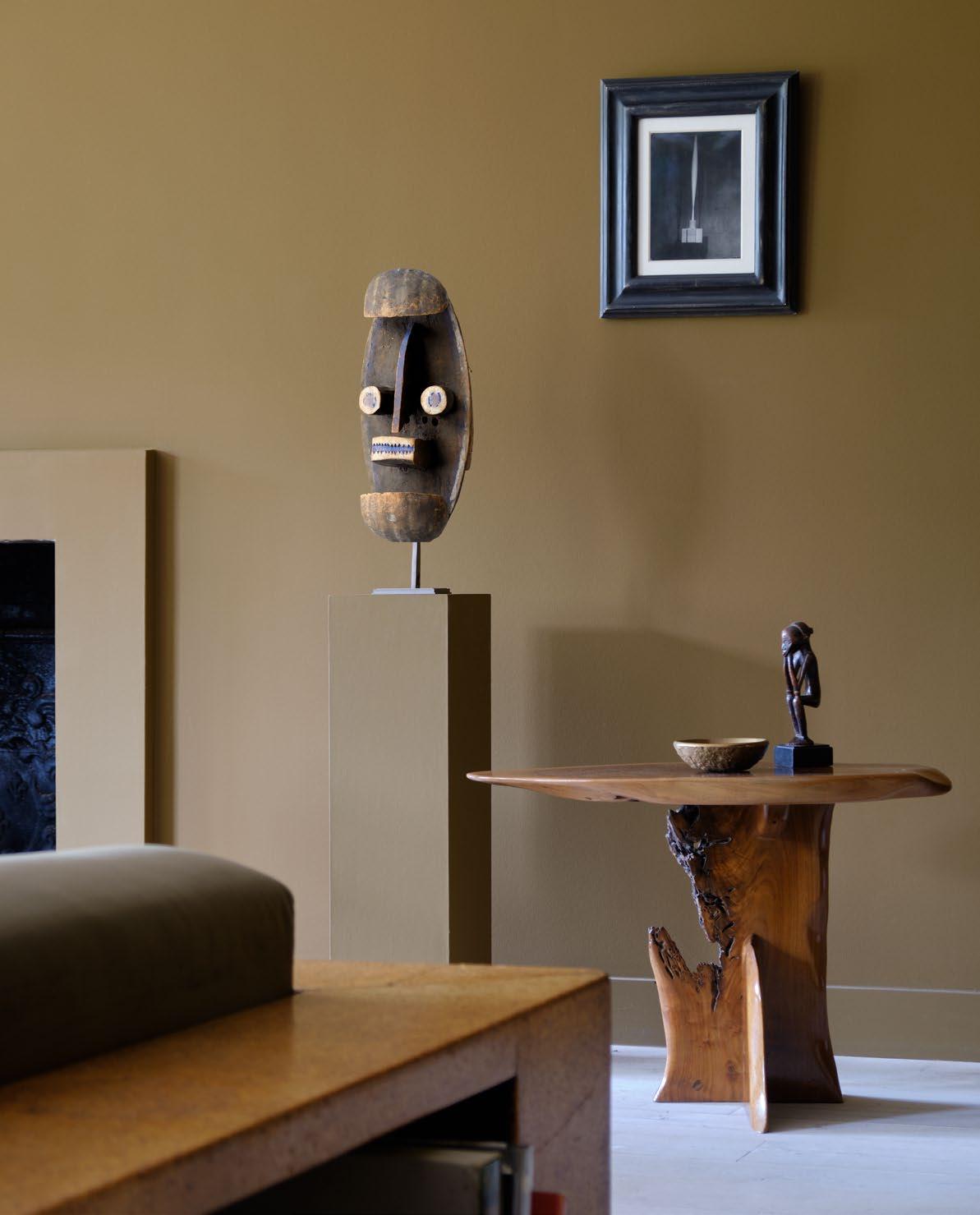
001 . Jan Van Kessel (Flemish, 1626 - 1679)
Landscape with Exotic Birds Oil on panel, 40 x 36 cm

Provenance:
Costermans Fine Art, Brussels
€ 15 000 - 20 00
With certificate of authenticity by Laetitia Bolle.
(American, 1879 - 1973)
Mother and Child - Sunlight - 1906
Photogravure, 12,8 x 15,8 cm
Original laid paper mount, 29,7 x 21 cm
Published:
Camera Work, n°14, April 1906
€ 3000 - 5000
Photogravure published in "Camera Work" n° 14, published in April 1906, that included nine plates by Edward Steichen. The photographic journal "Camera Work" was published by Alfred Stieglitz from 1903 to 1917 and Edward Steichen’s photographs were published over the run of its publication more than any by other photographers.
According to Stieglitz, Steichen was "the greatest photographer that ever lived" . "Camera Work" showcased works by the foremost photographers of the time with as goal to establish photography as a fine art form in its own right.
This photogravure is tipped to its original mount, and it is known that Stieglitz - who would settle for nothing less than perfect - dotted with glue every picture to the mount for "Camera Work" himself. Other copies of the photogravure "Mother and Child – Sunlight" by Edward Steichen can be found in major museum collections such as those of the Minneapolis Institute of Art, the Cleveland Museum of Art, the Philadelphia Museum of Art, and the Musée d’Orsay among many other.
 002 . Edward Steichen
002 . Edward Steichen
Pair of Armchairs - c.1920

Wood and velvet upholstery
110 x 70 x 60,5 cm
Provenance:
Morentz Gallery, Waalwijk
€ 1000 - 1500
003 . Angelo Sello (Italian, 1881–1973)004 . Greek relief
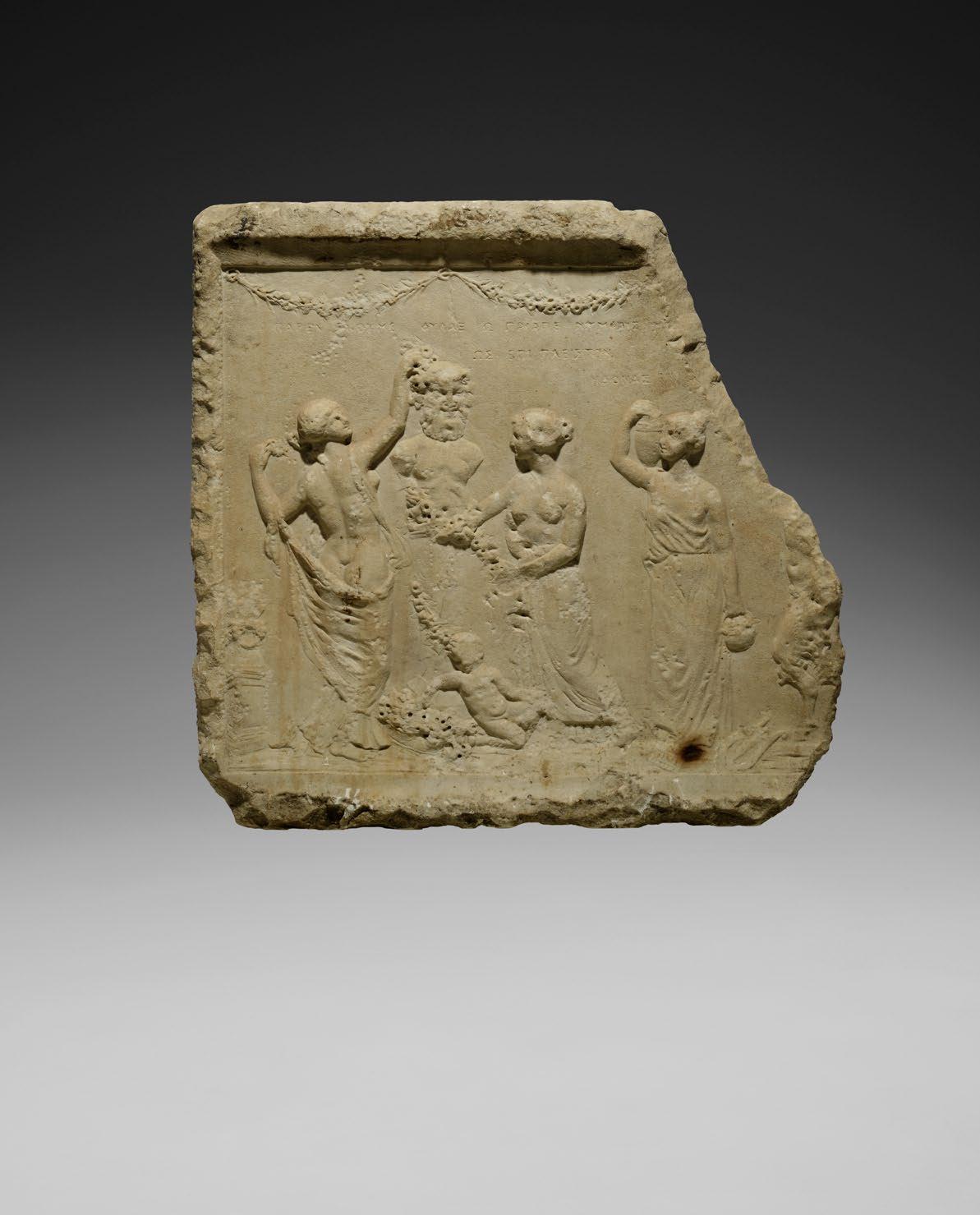
Marble, 78 x 78 cm
Provenance:
Paul de Grande Antiques, Jabbeke, Belgium
Nana Philips Collection, The Netherlands
€ 15 000 - 25 000
005 Church Seat
Neo-Gothic, 19 th c. Wood, 108 x 62 x 49 cm
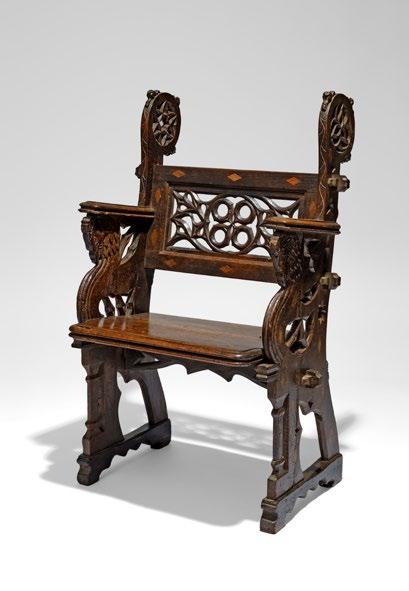
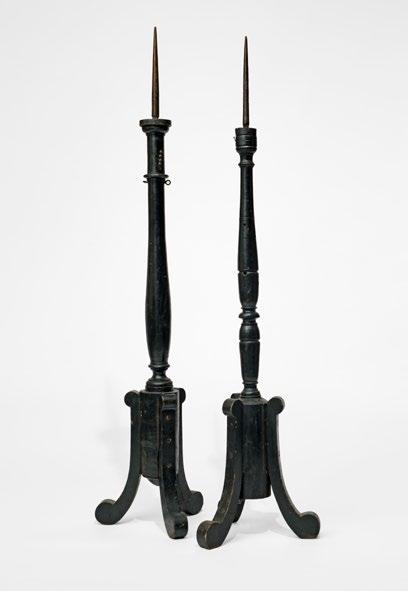
Proveance: Ad De Bruyn Antiques, The Netherlands
€ 2000 - 3000
006 Two Paschal Candlesticks
Wood and metal 166 and 160,5 cm
Provenance: Emil Fonfoneata, Gent
€ 600 - 800
007 Sepik Mask

Papua New Guinea Wood, 50 cm
Provenance: Jolika collection of John and Marcia Friede, Rye, San Francisco / New York Adrian Schlag Tribal Art Classics, Brussels
€ 10 000 - 15 000
008 . Torsaded Romanesque Column France, 12th - 13th c. Stone, 102 cm
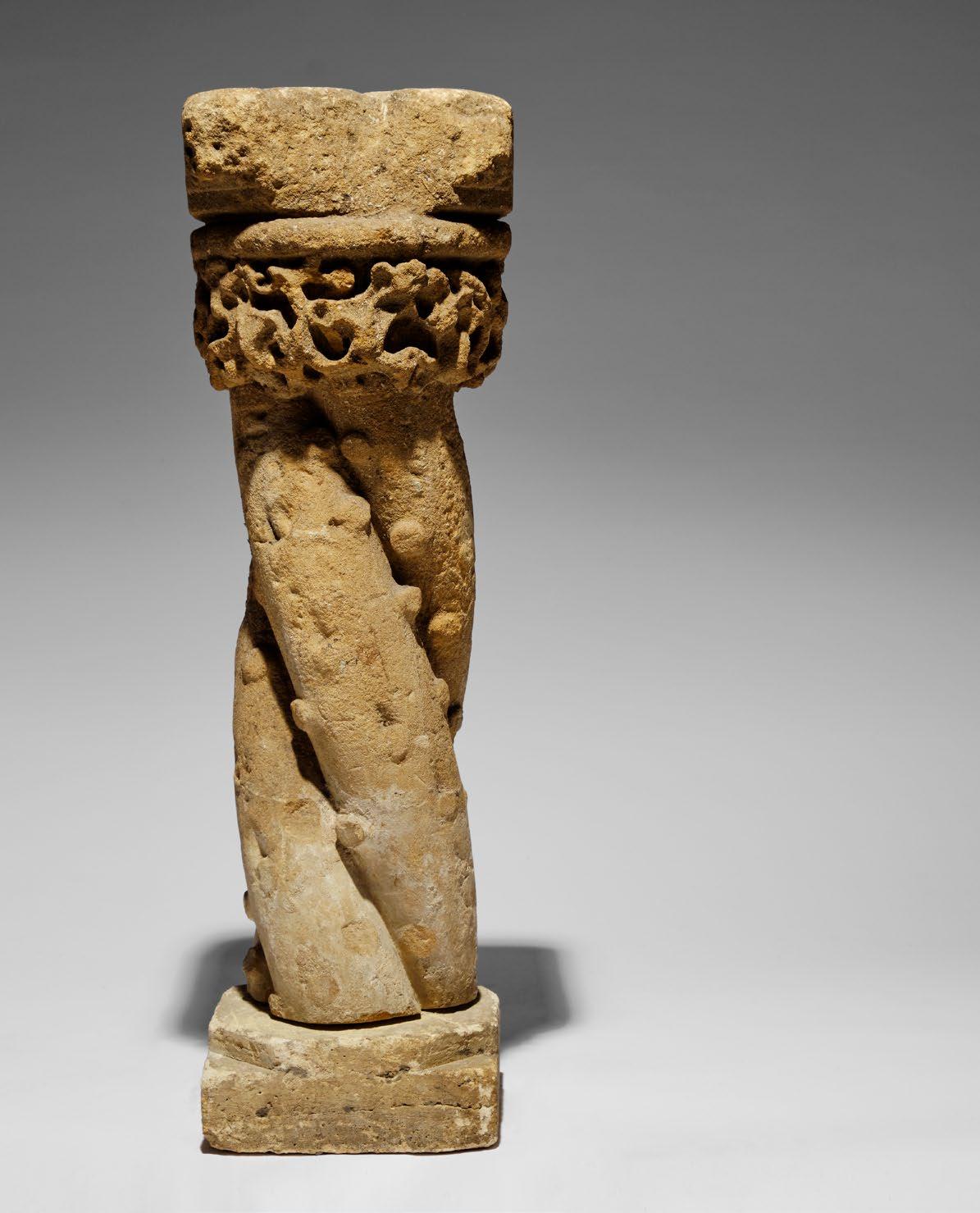
Provenance: Emil Fonfoneata, Gent
€ 2500 - 3500
009 Henry Moore
(British, 1898 - 1986)
Drawings for Sculpture - 1937
Watercolor, pastel, color pencil, and ink on paper, 25,7 x 20,3 cm
Signed lower left
Provenance:
Private collection, Sweden
Galerie Harold t'Kint de Roodenbeke, Brussels (with certfificate)
Published:
Ann Garrould, Henry Moore: Complete Drawings, Volume 2, 1930-39, Lund Humphries Publishers, London, no. AG37.2 (HMF 1334a), p.182 (ill.)
€ 10 000 - 15 000
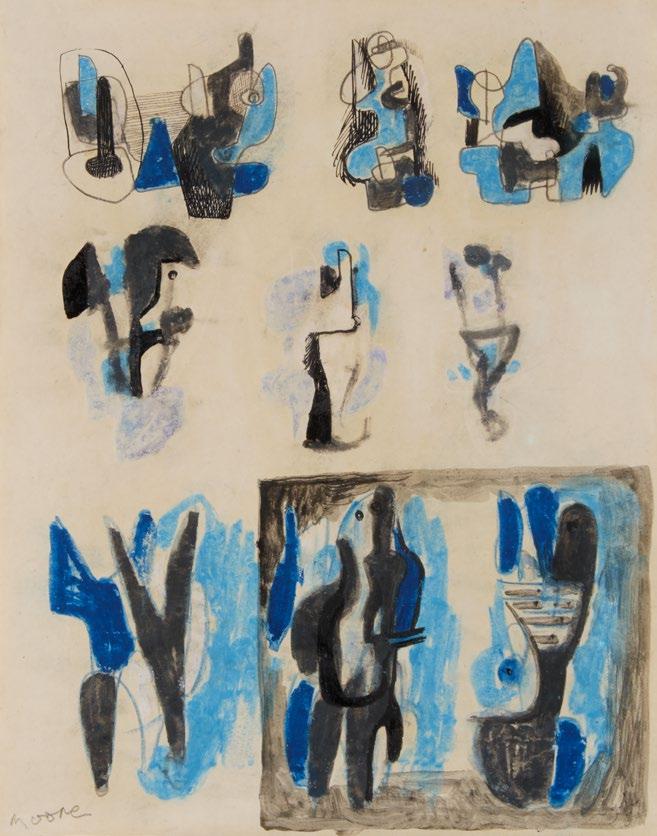
010
Attributed to Pietro Longhi
.
(Italian, 1702 - 1785)
Portrait of a Young Venetian Lady Oil on canvas, 50,5 x 42 cm
In 19th century aedicular frame with Renaissance decor

Provenance:
Count Ottaviano Venier Collection, Milan
Published:
Luigi Coletti, Tito Spini, Collezione Ottaviono Venier, Edizioni La Rotonda, Bergamo, 1954, pp.36-37, 48, 58, ill.52
€ 15 000 - 20 000
Punu Mask
23,5 x 18 cm (mount window)
Stamped on verso
Provenance: Young Gallery, Brussels
€ 1500 - 2000
"Walker Evans was commissioned by the Museum of Modern Art New York to photograph the 603 sculptures on loan from European and American museums and private collections that would be exhibited in 1935 in their landmark show African Negro Art. Evans produced an edition of 17 portfolios with 477 images in each. These portfolios found their way to colleges and institutions in America and Europe that had an interest in African art."
Virginia-Lee Webb in "Perfect Documents. Walker Evans and African Art, 1935, p.15
 011 Walker Evans (American, 1903 - 1975)
011 Walker Evans (American, 1903 - 1975)
012 . Corpus of Christ

Spain, 14th c.
Polychromed wood, 93 cm
Provenance:
Ad De Bruyn Antiques, The Netherlands
€ 8000 - 12 000
Guatemala, Maya
700 - 900 AD
Stone, 27 x 20 cm
Provenance:
Emile Deletaille, Brussels
Galerie Joaquin Pecci, Brussels
€ 10 000 - 15 000
Sculpted and painted images of the Mesoamerican ballgame show players wearing several items of protective gear called hachas, palmas, and yokes, including some form of padding around their torsos to lessen the impact of the solid rubber ball to protect their hips and abdomens from the impact. Those used during active play were most likely made of wood or some other light material; stone versions such as this one were worn, if at all, during ballgamerelated rituals, or placed on display. Given the distinctive design of each hacha, both those worn and those carved in stone may have served to identify teams or individuals.
This hacha represents a monkey’s head. Among the Maya, the howler monkey god is a great deity of the arts, including music, and a patron of artisans, especially scribes and sculptors.
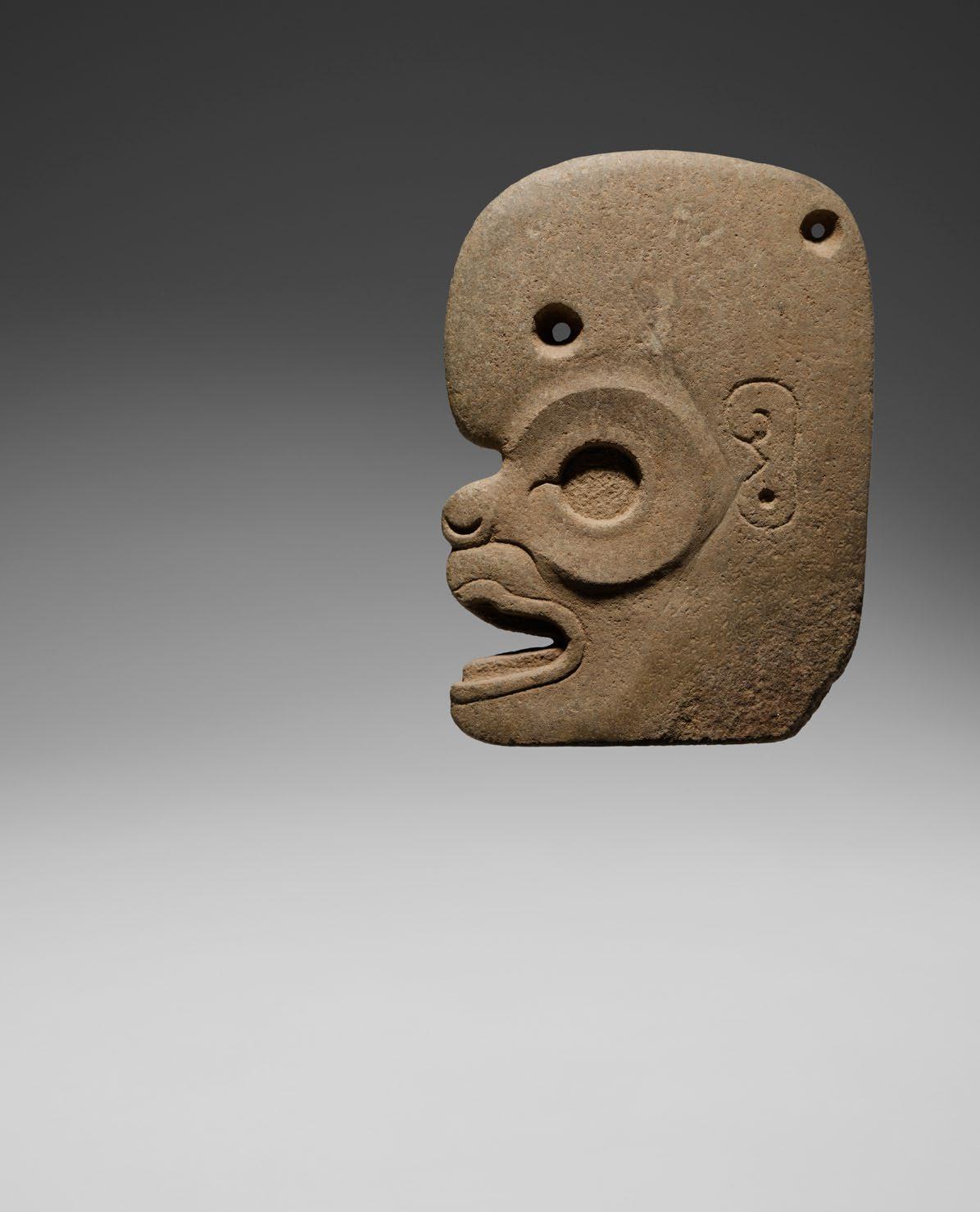
014 . Art Nouveau Vase
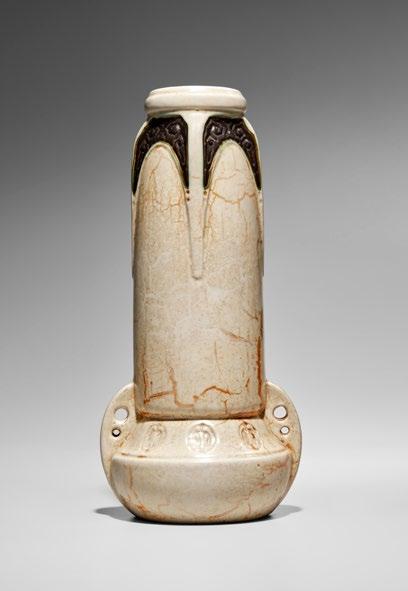
Glazed ceramic, 39 cm
Numbered underneath: 1816
€ 600 - 800
015 . Floorlamp
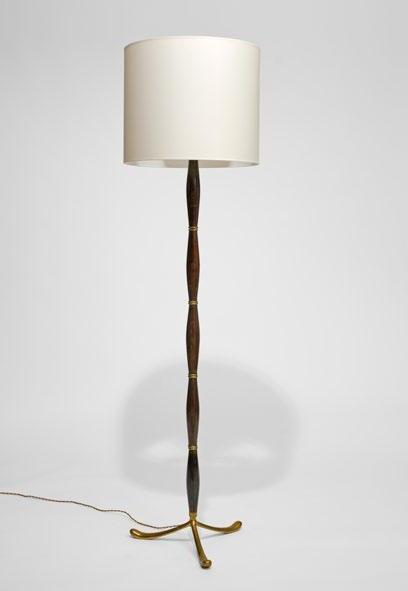
Italy - c.1950
Wood, brass, and lacquered metal 185 cm
Provenance: Raphaël Dierick, Brussels
€ 1500 - 2000
016 . Buddha
Thailand, Ayudhia - 16th c.
Bronze, 57,5 cm
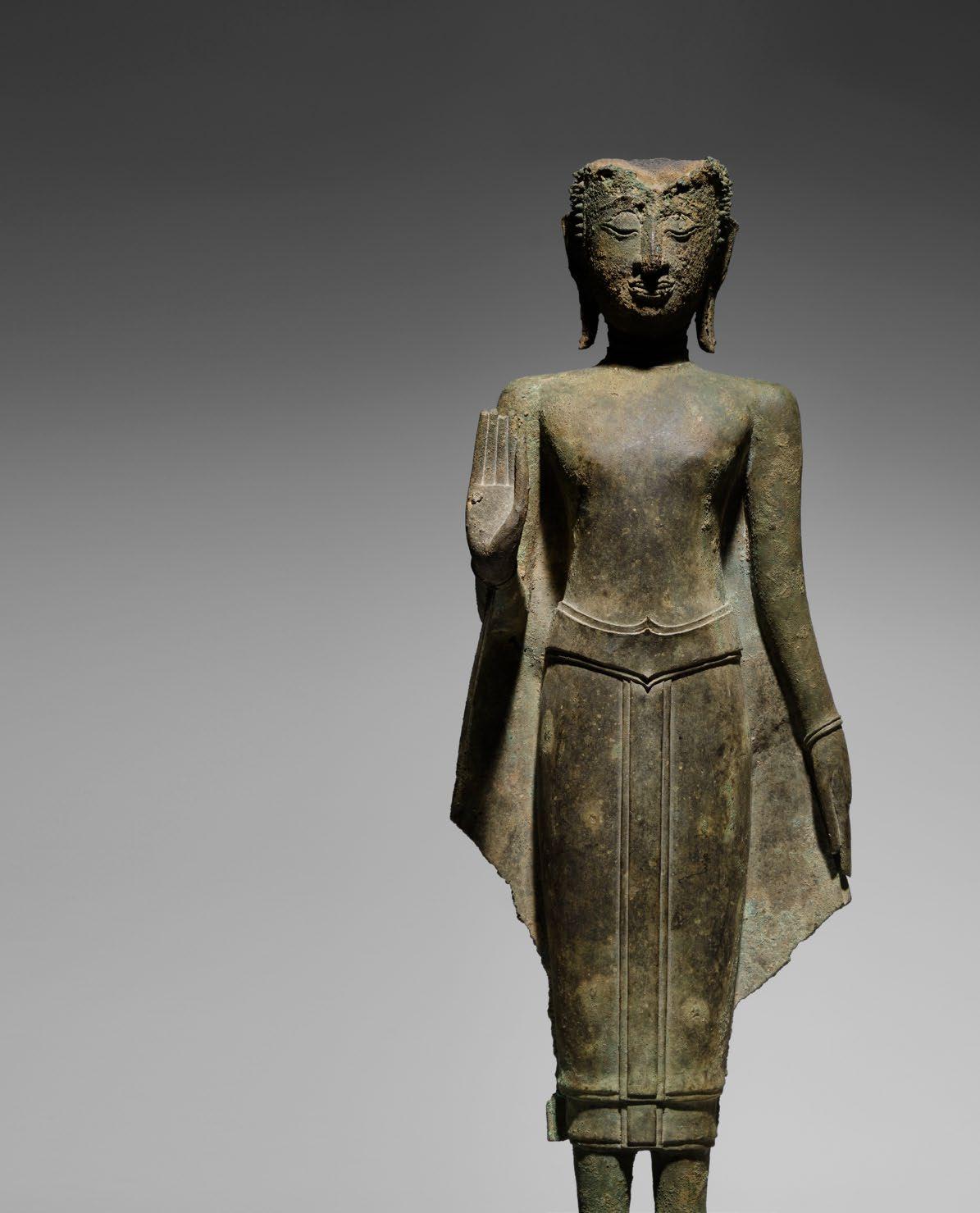
Provenance:
Nana Philips Collection, The Netherlands
€ 3000 - 5000
017 . Chamunda
India, Rajastan
Chandella, 11th c. Sandstone, 110 x 49 x 15,5 cm
Provenance:
N. Vrielink Collection, Netherlands (2001 - 2012)
Marcel Nies Oriental Art, Antwerp (2012 - 2019)
E. J. Philips Collection, Netherlands
Published:
M. Nies, Immortal Image. Art of India, The Himalayan Regions, Indonesia and Southeast Asia, Antwerp, 2001, pp.18-19
M. Nies, Dance of the Gods. Sculpture from India, the Himalayas and Southeast Asia, Antwerp, 2012, pp.22-23
€ 20 000 - 30 000
Chamunda is a fearsome form of Chandi, the Hindu mother goddess. According to some texts, Chamunda sprang from Durga's forehead, emerging in the terrifying shape of an emaciated crone, to fight and destroy the demon brothers Chanda and Munda. In order to accomplish her mission, Chamunda was given eight arms, and the attributes with which she is depicted all refer to her destructive power: a trident, a mace topped with a skull, a dagger, a snake…
This largely preserved high-relief is made in a reddish sandstone that was typically used for sculptures from the Dungarpur region in Rajasthan. The style corresponds to the prevalent one that can be observed in the medieval schools of Central India. It is the work of a sculptor who managed to capture the fearsome figure of Chamunda in an elaborate composition wherein movement and rich detail convey a striking image of the goddess.
The shape of the karanda-mukuta headdress and the proportions of the central image are typical of the Chandella style and the relief can be dated from the 11th century.
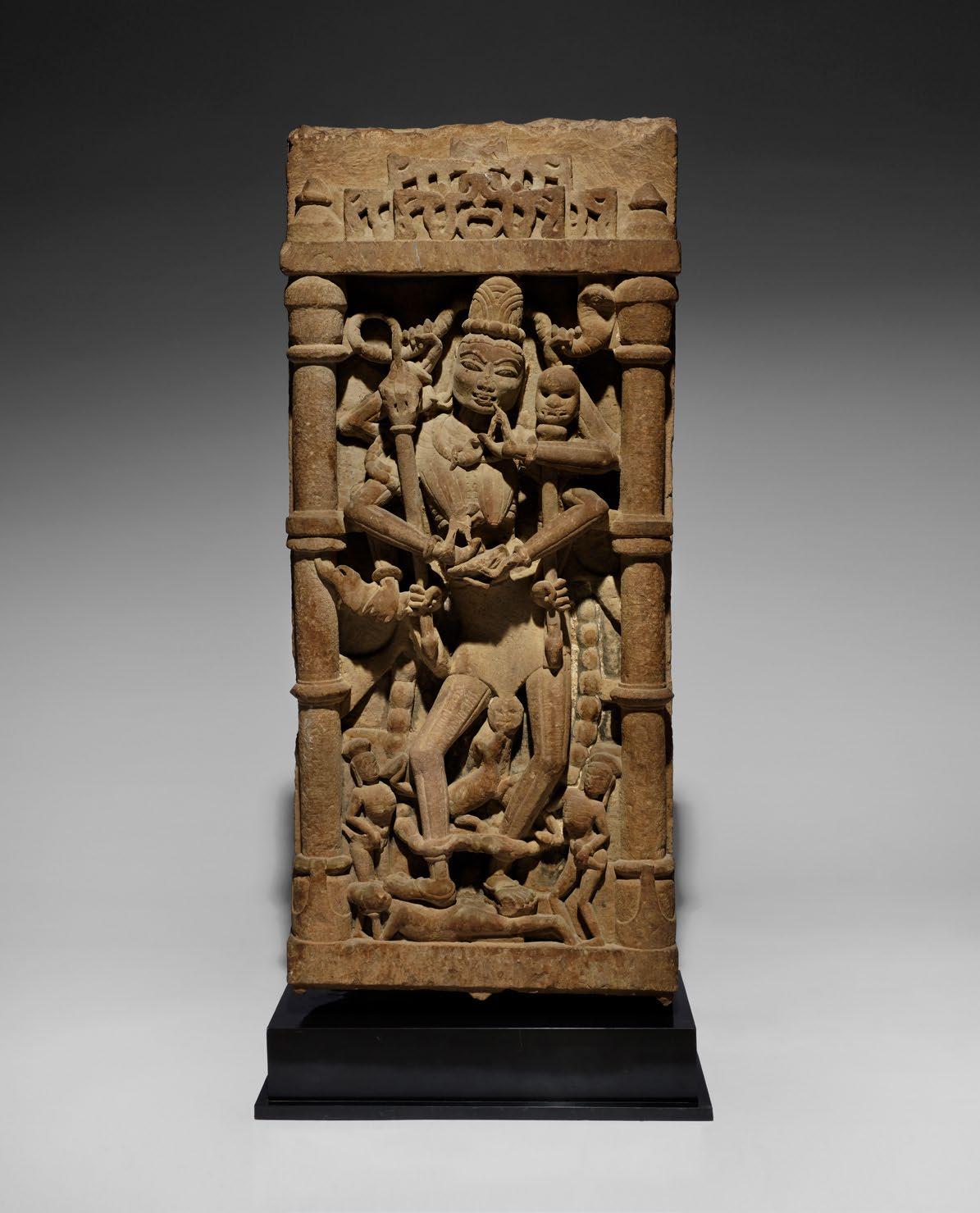
018 Constantin Brancusi (Roumanian, 1876 - 1957)
Oiseau dans l'espace - 1925-1926
Gelatin silver print, 23,8 x 18 cm
Provenance:
Private collection, Roumania
Private collection
Galerie Hopkins-Custot, Paris
Galerie Harold t'Kint de Roodenbeke, Brussels
Published:
C. Brancusi. Photographe [exhibition catalog], Galerie Hopkins-Custot, Paris, 2003, pp.44-45, cat.19 (ill.)
Exhibited:
Paris, Galerie Hopkins-Custot, C. Brancusi. Photographe, March - April 2003, pp.44-45, cat.19 (ill.)
€ 30 000 - 50 000
With a certificate of authenticity by Harold t'Kint
From 1905 on, sculpture and photography evolved simultaneously in the artistic practice of Constantin Brancusi. The photographs of his sculptures were always taken in the intimate surroundings of his studio and served a double purpose: on the one hand, it was a means to document his sculptures, on the other hand, he was convinced that only their creator, himself, could accurately capture their essence.
A telling anecdote relates to this conviction: upon seeing the photographs Alfred Stieglitz made of his studio, Brancusi said "The photograph is beautiful, but it does not represent my work."
After meeting with Man Ray in the twenties, Brancusi’s photographs took an even more important place in his work.
In the process, photography allowed Brancusi to better comprehend his sculptures, leading to even more stylized and abstract forms, perhaps best epitomized exactly by "Oiseau dans l’espace" , depicted here.
We see a marble version of the sculpture – Brancusi made no less than 27 variants of the subject in marble, bronze, and stone – shot in the studio at night. On the back wall, a double shadow is cast by the sculpture, framing its impossibly elegant and pure shape. By shooting the sculpture at night, a sense of silence, solitude, and mystery is created that makes one agree with the sculptor that only he was able to grasp a sculpture like this one in all its elegance and complexity.

019 Georges Vantongerloo
(Belgian, 1886 - 1965)
Study for Variant "Curves" - 1939
Gouache sur papier, 17,6 x 17,8 cm Titled, located, dated, and signed on verso: "Paris 1939"
Provenance:
Max Bill Estate
Max Bill - Georges Vantongerloo Foundation
Annely Juda Fine Art, London Private collection, New York
Galerie Harold t'Kint de Roodenbeke, Brussels
Published:
Jan Ceuleers, Georges Vantongerloo, Ronny Van de Velde - Pandora, Antwerp, 1996, p. 200
Naum Gabo, Georges Vantongerloo, Friedrich Vordemberge-Gildewart, [exhibition catalog], Annely Juda Fine Art, London, cat.57 (ill.)
Angela Thomas Schmid, Georges Vantongerloo: A Retrospective [exhibition catalog], Annely Juda Fine Art, London, cat.59 (ill.)
Exhibited:
Antwerp, Ronny Van de Velde, Georges Vantongerloo, 15 December 1996 - 21 March 1997, p. 200
London, Annely Juda Fine Art, Naum Gabo, Georges Vantongerloo, Friedrich Vordemberge-Gildewart, 25 October - 15 December 2001, cat.57 (ill.)
London, Annely Juda Fine Art, Georges Vantongerloo. A Retrospective, 1 March - 22 April 2006, cat.59 (ill.)
€ 30 000 - 40 000
Gouache project for a painting with the same title, now in the collection of the Max Bill - Georges Van Tongerloo Foundation, Zumikon (Switzerland).

020 . Nok Head
Nigeria
Terracotta, 28 cm
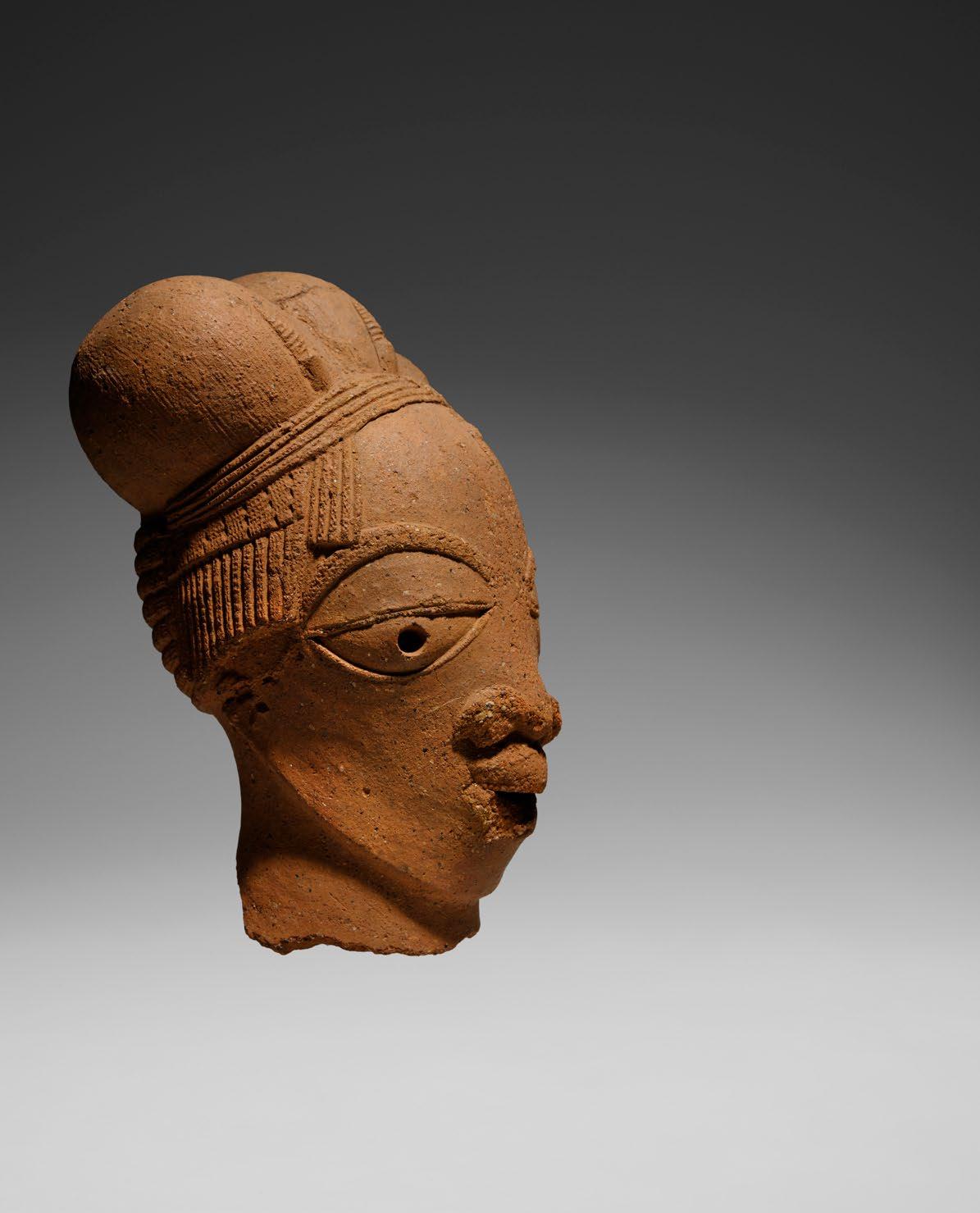
Provenance: Marc Leo Felix, in the 1980’s
€ 1000 - 1500
Provenance:
E. J. Philips Collection, Netherlands (collector’s label on verso) Thence by descent
€ 2000 - 3000
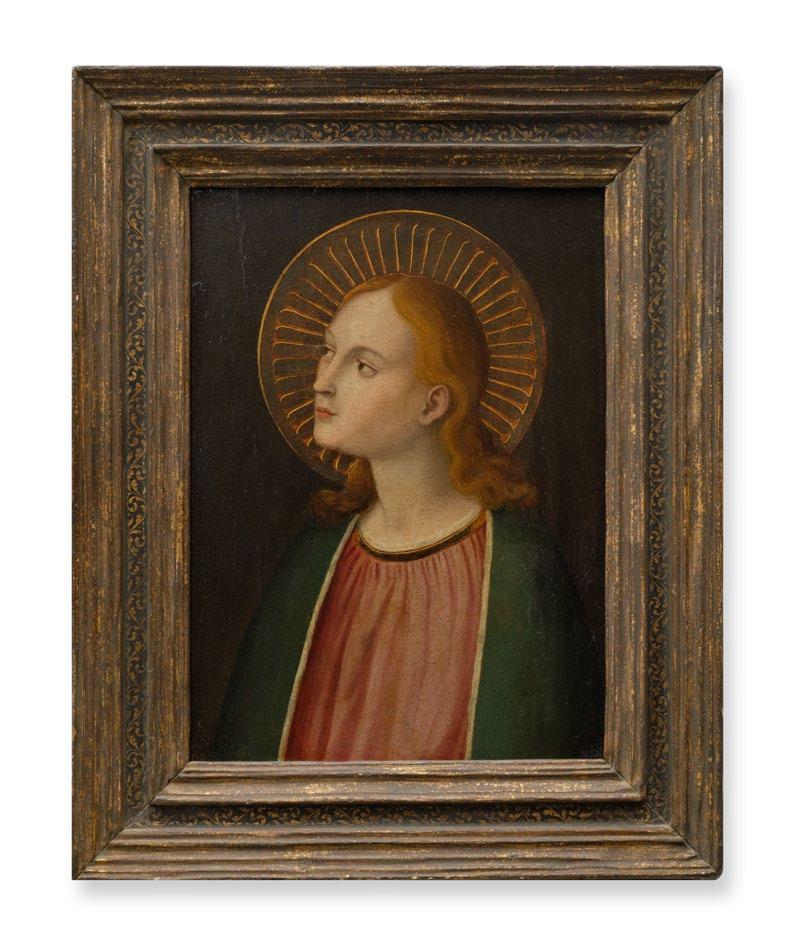 021 . Portrait of a Saint East European School - c. 1500 Oil on wooden panel, 44 x 32,5 cm
021 . Portrait of a Saint East European School - c. 1500 Oil on wooden panel, 44 x 32,5 cm
022 . Armchair
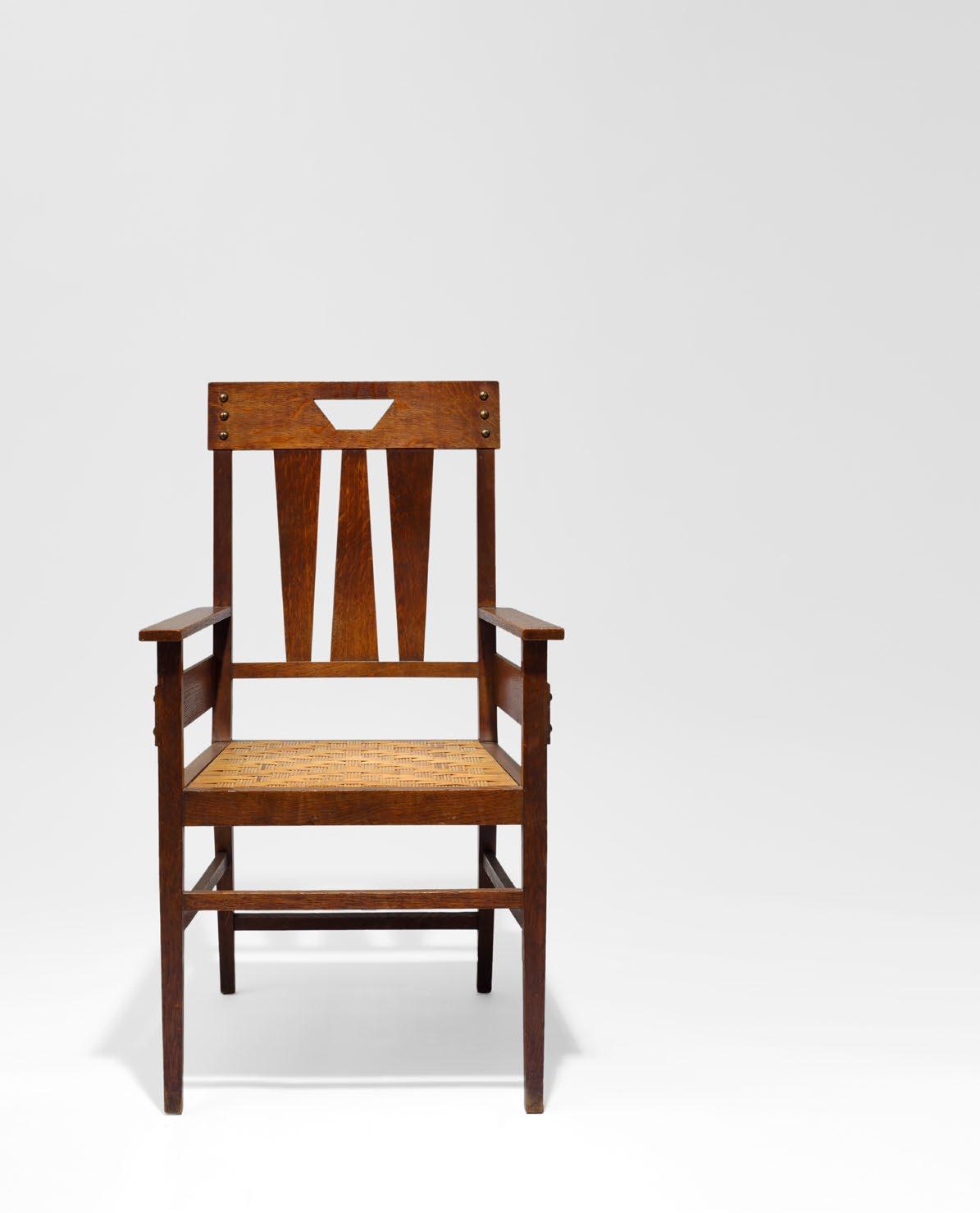
Probably Austria, circa 1900 Wood, wickerwork and brass screws 106 x 58 x 60 cm
Provenance: Olivier Biltereyst, Brussels
€ 1500 - 2000
(American, 1921 - 2017)
Untitled - 1948-1953
Gelatin silver print, 33,8 x 26,5 cm (mount window)
Signed on verso
Provenance: Nomad Gallery, Brussels
€ 1000 - 2000
From 1948 to 1953 Hector Acebes undertook several travels throughout Africa, resulting in a corpus of images that has been widely acclaimed for the personal contact he managed to make with his subjects while portraying them. According to Acebes himself, this was due to his choice of camera: a Rolleiflex that he held at belt level, framing his subject while looking down. It allowed him to make eye contact with the person and capture that intimate moment of personal contact between two people – a far cry from the other photographs of that era made by 35 mm cameras that were pointed almost like a gun at the subject - "shooting" the image.
 023 Hector Acebes
023 Hector Acebes
024 . Romeo Miracoli & Figlio Argenteria (Founded in 1912) Vase - 1940's Silver, 23 cm Silver and silversmith's mark underneath Provenance: Raphaël Dierick, Brussels
€ 600 - 800
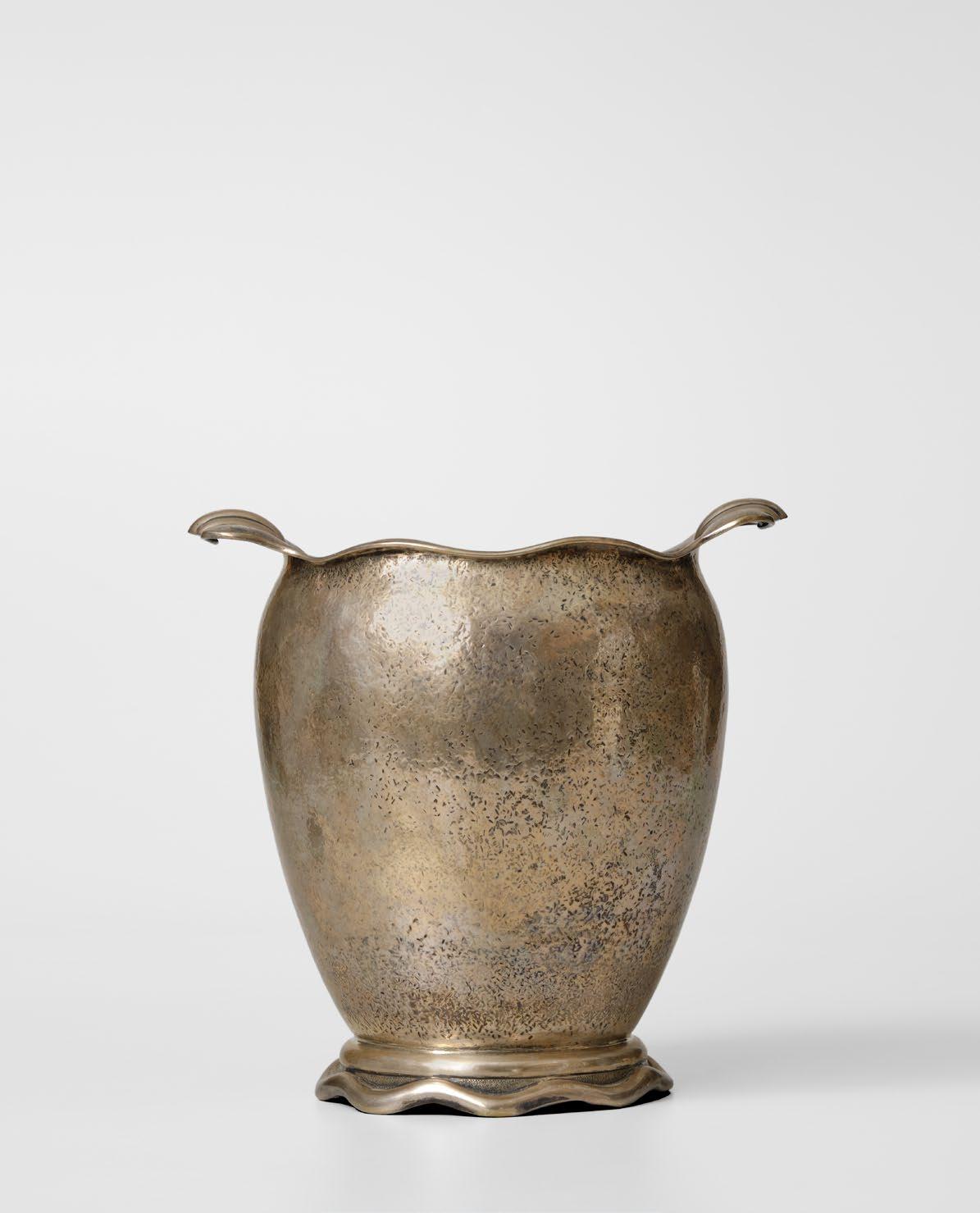
Nigeria Terracotta, 17 cm
Provenance: Galeria Raquel y Guilhem Montagut, Barcelona
 025 . Seated Nok Figure
€ 2500 - 3500
025 . Seated Nok Figure
€ 2500 - 3500
026 Processional Cross With Crucified Christ
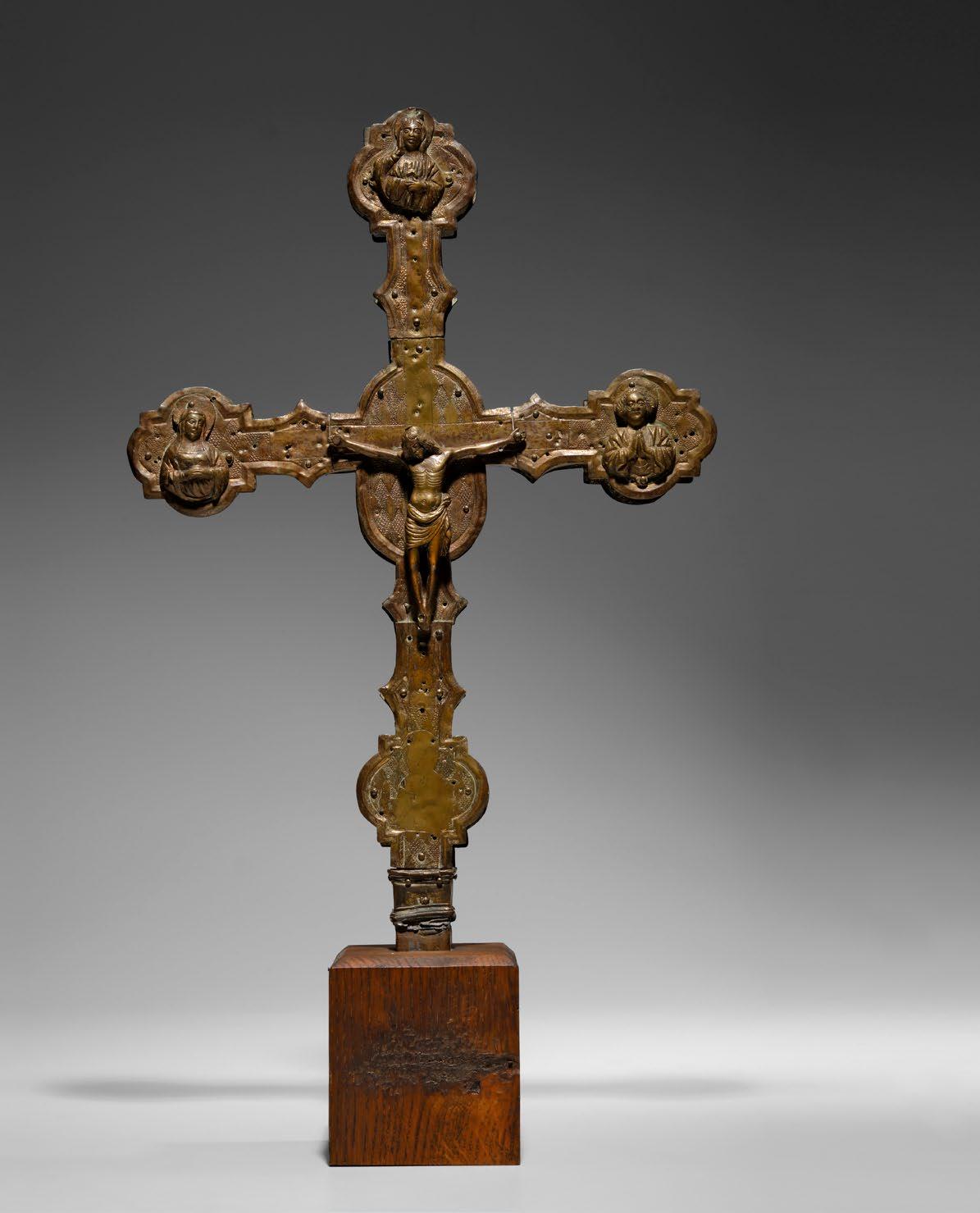
Italy, c.16th c. Brass and wood, 44 cm
Provenance: Ad De Bruyn Antiques, The Netherlands
€ 8000 - 15 000
Provenance:
Nana Philips Collection, The Netherlands Ad De Bruyn Antiques, The Netherlands
€ 10 000 - 15 000
In the collection of the Galleria di Palazzo Bianco in Genoa, we find a painting representing St Francis de Sales by Giuseppe Antonio Pianca that shares exactly the same composition, but in a very different painterly style and with a flaming heart in the top left part of the painting.
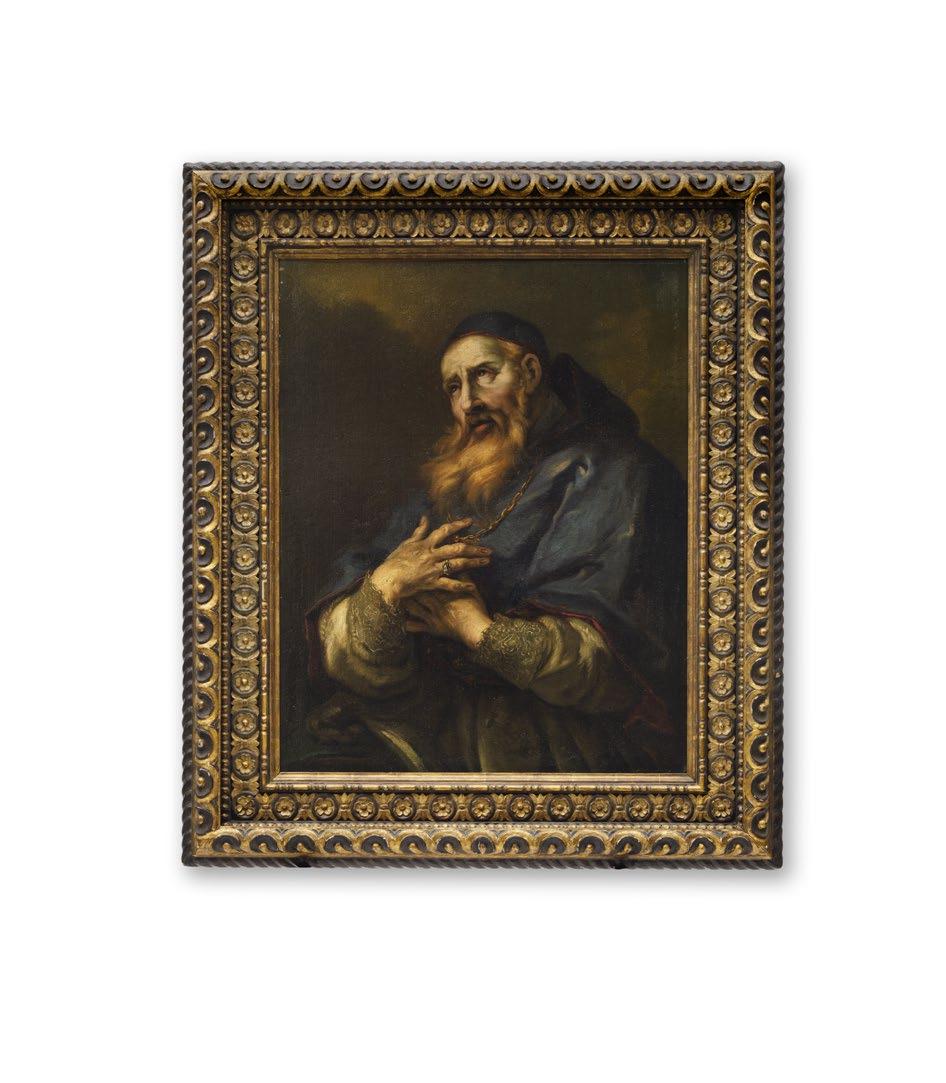 027 After Giuseppe Antonio Pianca (Italian, 1703 - c.1760) Man in Prayer Oil on canvas, 91,5 x 73 cm
027 After Giuseppe Antonio Pianca (Italian, 1703 - c.1760) Man in Prayer Oil on canvas, 91,5 x 73 cm
028 . Italian Cabinet

1960s
Lacquered wood and glass
125,5 x 70 x 36,5 cm
€ 1500 - 2000
- 1635)
Panoramic Landscape Oil on canvas, 81,5 x 208 cm
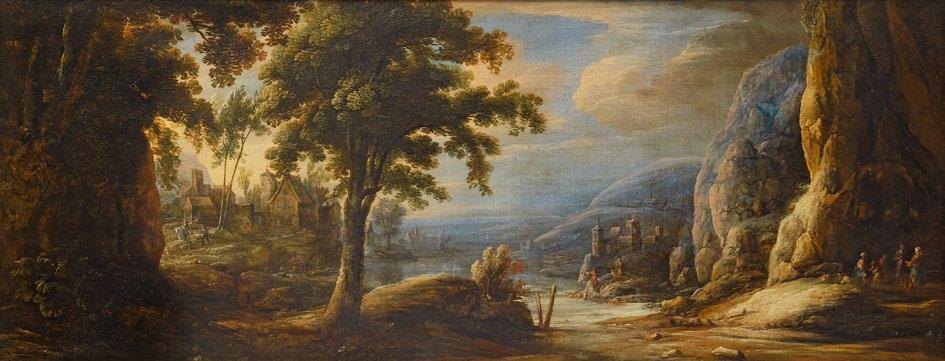
Provenance:
López de Aragón Gallery, Madrid
€ 15 000 - 20 000
029 . Joos de Momper (attrib.) (Antwerp, 1564Klausenpass, Switzerland - 2010
Baryta print on Hahnemuhle paper

105 x 80 cm
Signed, titled, dated, and numbered with the artist's stamp on the backboard Edition 1/5
Provenance:
Acquired directly from the artist
€ 2500 - 4000
030 Mart Engelen (Dutch, 1960)031
Mali Terracotta, 17 cm

Provenance: Marc Leo Felix, in the 1980’s
€ 2000 - 3000
Djenne Seated FigurePortrait of a Young Woman and Portrait of a Young Man Italy, c.1490 - 1500
Tempera on gessoed panel
61 x 42,5 cm and 60,5 x 43 cm
Provenance
Private collection, New Jersey Freeman's Auctions, Philadelphia, 5 December 2010, lot 2
The author of this intriguing pair of portraits remains unknown, but similarities between known masters of the late 15th C. Florentine school can be easily found. At the National Gallery of Art in Washington D.C. we find a Portrait of a Youth from c.1485 by Filippino Lippi (1457 - 1504, inv. 1937.1.20) that was formerly attributed to Sandro Botticelli that is astonishingly close to the portrait presented here. The pose of the sitter, red hat, hairstyle, and clothes are almost identical. The background however could not be more different: in the Washington painting the sitter is portrayed against a stark stone window looking out to a blue sky, as opposed to our portrait where we find the rendition of a detailed landscape, possibly betraying northern influences.
For the Portrait of a Young Woman, an equally, but differently similar portrait can be found at the Gemäldegalerie in Berlin (inv.80): Portrait of a Young Woman from c.1485 - 1490 by Agnolo di Domenico del Mazziere (Florentine, 1466 – 1513) - formerly known as the Master of Santo Spirito. Although the sitters look very different and the position of the Berlin painting’s sitter is more turned, we recognize the same dress, red pearled necklace (albeit with a cross on the Berlin panel), and background with a landscape.
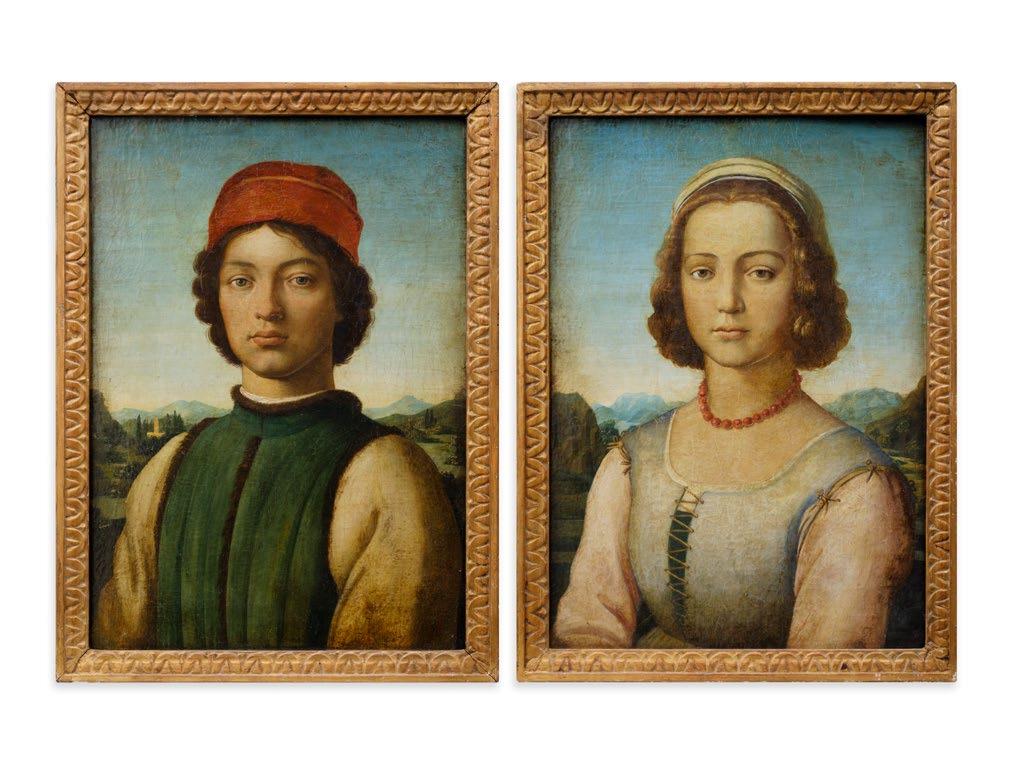
Ivory Coast Wood and pigments, 29 cm
Provenance:
Private collection, France
Alberto Costa de Tejada, Barcelona, Spain
Javier Lentini, Sant Cugat del Vallés, Spain
Galeria Raquel y Guilhem Montagut, Barcelona
Published:
Romero de Tejada (Costa), Coleccionable La Vanguardia: Arte del Africa Negra, Barcelona: La Vanguardia, 1988 Africa; la figura imaginada. Spain, 2004:92 Imaginaire tribal 2015, Barcelona: Etnic Kumbi Saleh, 2015
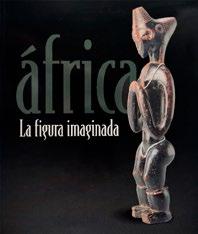

X Masques de Côte d'Ivoire, Barcelona: Guilhem Montagut, September 2017:23-24
Exhibited: Spain: "Africa la figura imaginada", 8 June 2004 - 5 April 2005, Palma, Tarragona, Valencia and Saragossa
€ 8000 - 12 000
033 . Bete Mask034 Kissi Nomoli
Sierra Leone
Soapstone, 10,3 cm
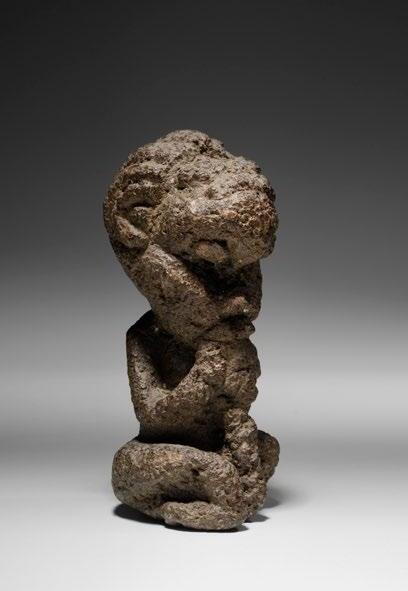
Provenance: Bruce Frank, New York
€ 3000 - 5000
035 Kissi Nomoli
Sierra Leone
18th c.
Soapstone, 16,5 cm
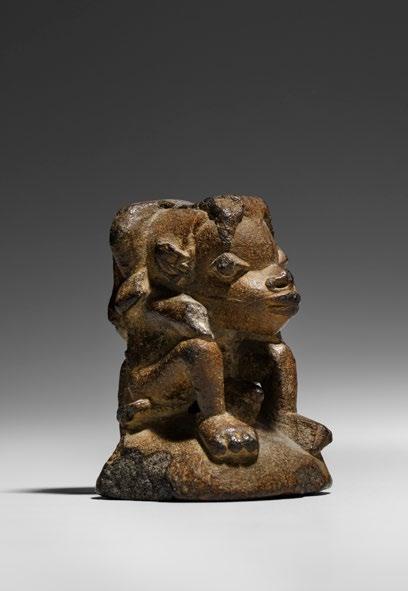
Provenance:
Franco Monti Collection, Italy
Galerie Joaquin Pecci, Brussels
€ 1000 - 1500
Gesloten Ketting - 1975
Iron wire and collage on cardboard
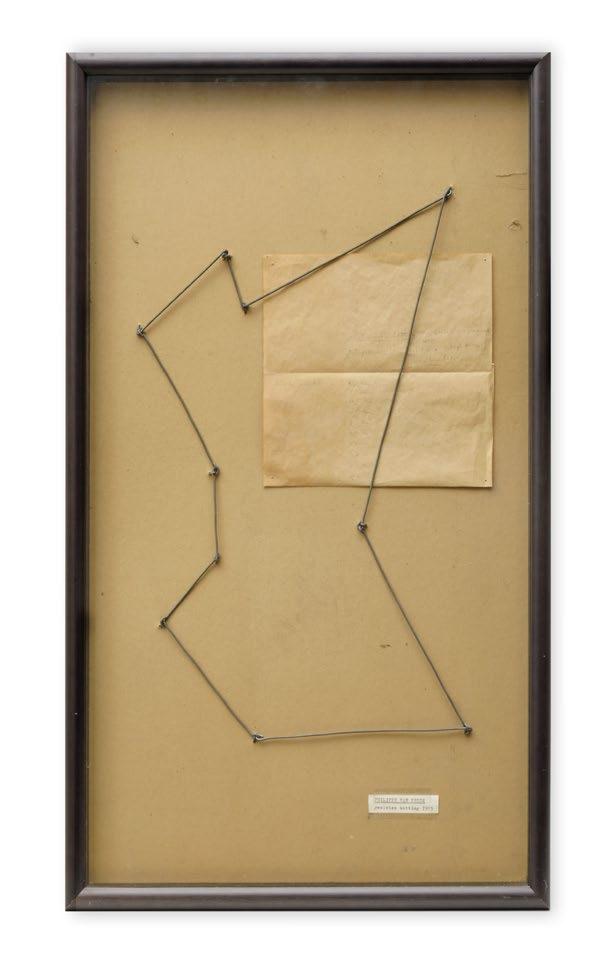
66 x 40,5 cm
Typewritten name, title, and date lower right
€ 1000 - 1500
036 Philippe Van Snick (Belgian, 1946 - 2019)037 Boli
Mali
Wood, organic and inorganic materials
48 x 63 cm
Provenance:
Galerie Jean Pierre Laprugne, Paris, aquired in the 1990’s
€ 20 000 - 30 000
Boliw played a crucial role in Bamana rituals. They are predominantly made of a wooden core structure, sometimes including bones, around which clay and diverse materials are applied, resulting in bulbous, quite anamorphic figures, bearing a vague resemblance to a four-legged animal that can not be exactly identified. The continuous offering of sacrificial fluids and both organic and inorganic materials obscure the original shape of the boli. With each added layer of sacrificial materials, the spiritual power of the boli increases, and the rich layering and cracks of this boli testify to its age and extensive use.
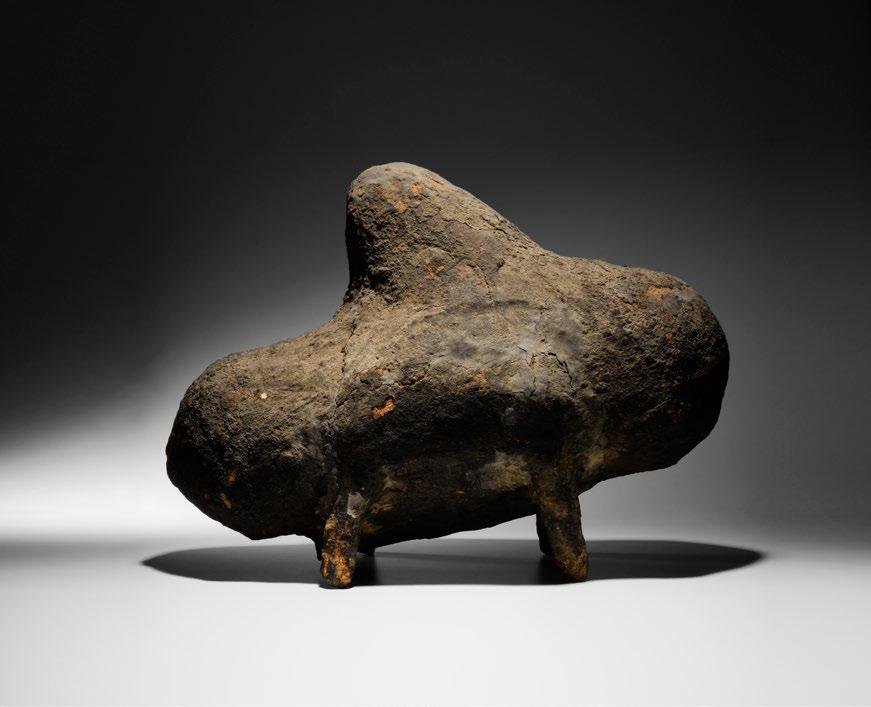

038 Dogon Head
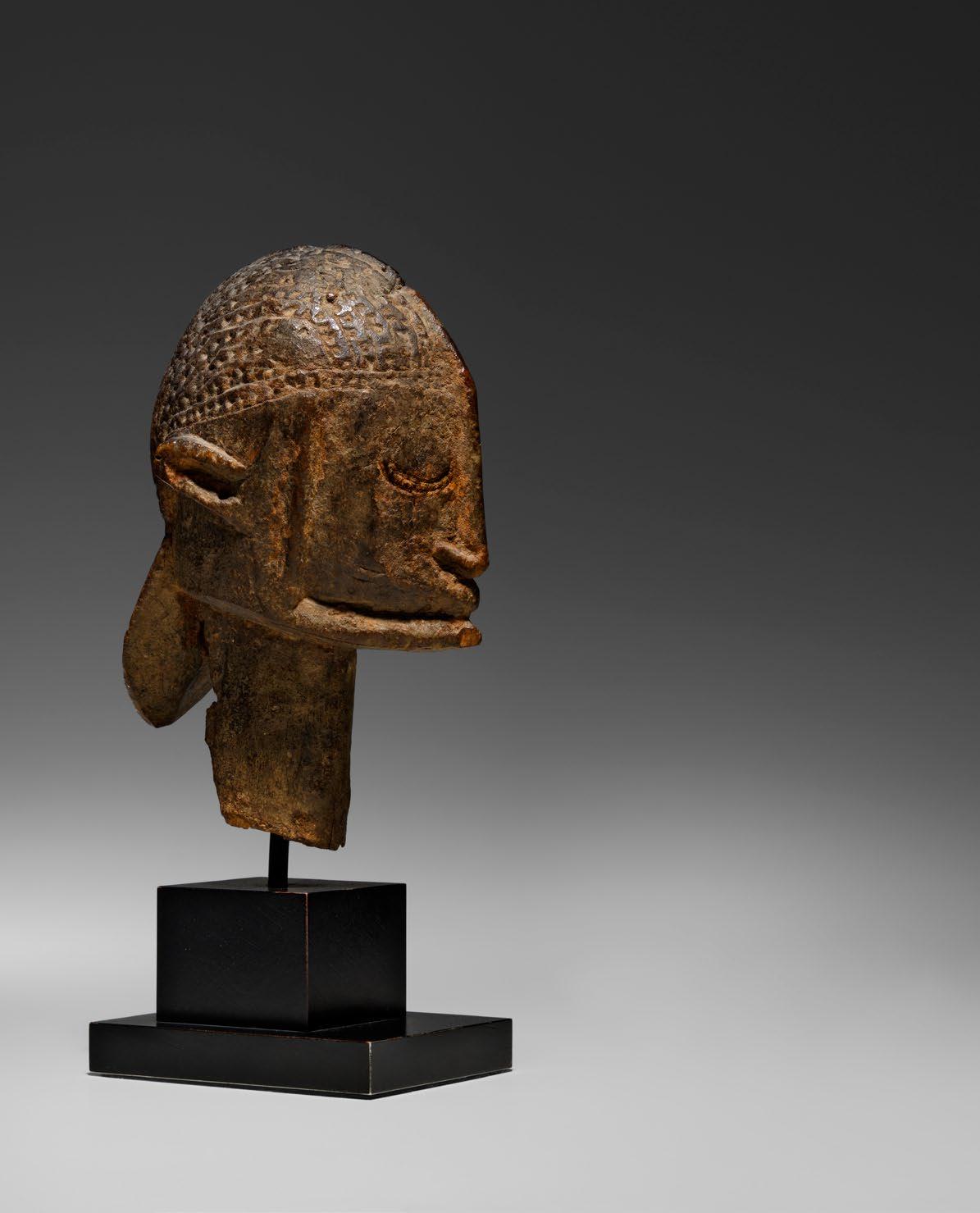
Mali - Bandiagiara Plateau, N'Duleri Region 17th - 18th c. Wood, 18 cm
Provenance: Charles Ratton, Paris Christie's, Paris, 10 December 2003, lot 230
Leslie Sacks Collection, Los Angeles Native Auctions, Brussels, African Art from the Leslie Sacks collection, 22 October 2016, lot 4
Galeria Raquel y Guilhem Montagut, Barcelona (2017)
Published:
Amanda M. Maples, African Art from the Leslie Sacks Collection, Refined Eye, Passionate Heart, Skira 2013, p.272
€ 5000 - 7000
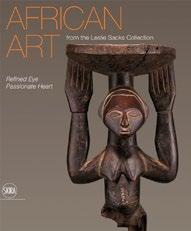
Amboselli Elephants - 1989
Bromoil gelatin silver print, blood, paint, paper, feather 50 x 60,5 cm
Signed, annotated 'Salaams + Regards' and 'Box 47616 Nairobi,' and inscribed with a quotation from Karen Blixen's "Out of Africa" in ink on the image: 'In very old days the elephant, upon the roof of the world, led an existence deeply satisfying to himself and fit to be set up as an example to the rest of creation.'
Provenance:
Sotheby's New York, 6 April 2011, lot 147
€ 30 000 - 40 000
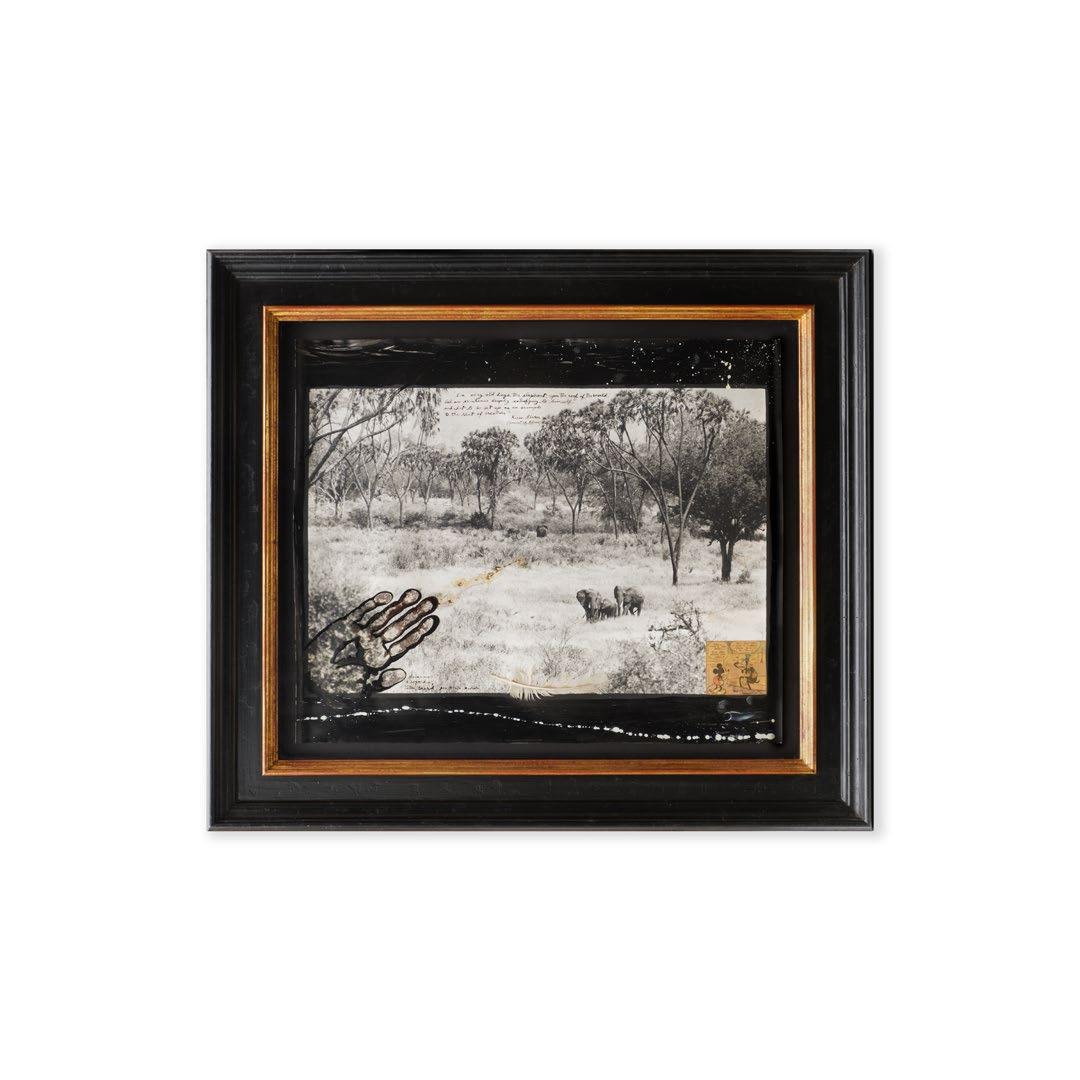 039 Peter Beard (American, 1938 - 2020)
039 Peter Beard (American, 1938 - 2020)
Nigeria
Wood, 23 cm
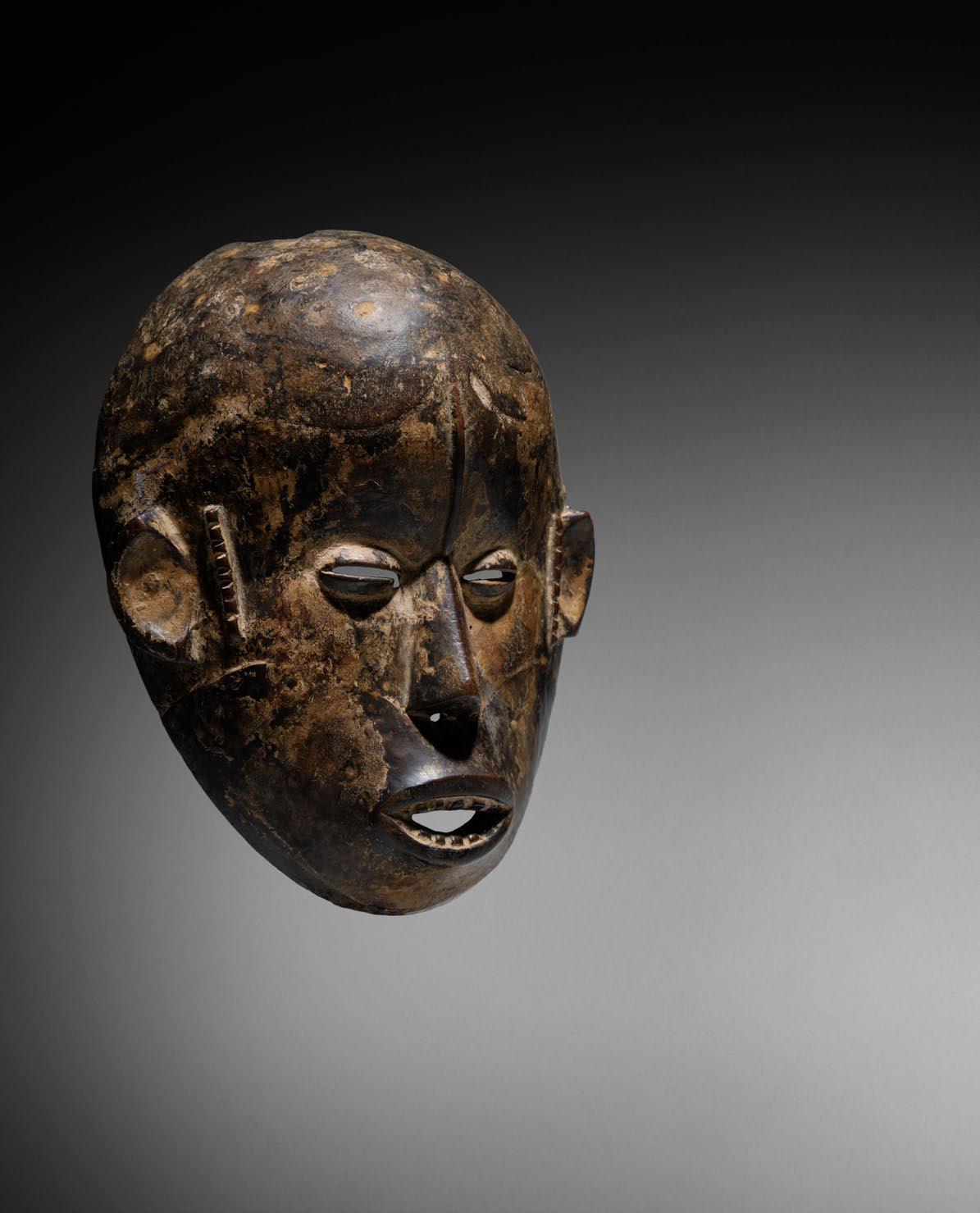
Inventory number painted on verso on the rim: FN 95 001
Provenance: Felix Van Heuvel
With certificate by Marc Leo Felix
€ 10 000 - 15 000
040 Idoma Mask041 Chair (American Unknown Designer)
American - 1960s
Wood and metal, 79 x 45 x 54 cm
Published:
Marc Hotermans, Furniture from Architects and Artists. Collection Marc Hotermans, Editions M.M.MH., s.l., 2016, ill. pp.86-87
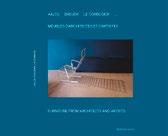
€ 2500 - 4000
Attributed to a student from the New Bauhaus in Chicago which was founded in 1937 by Laszlo Moholy-Nagy. We recognize the influence of both Marcel Breuer and Isamu Noguchi in the construction and rounded shapes of this chair.
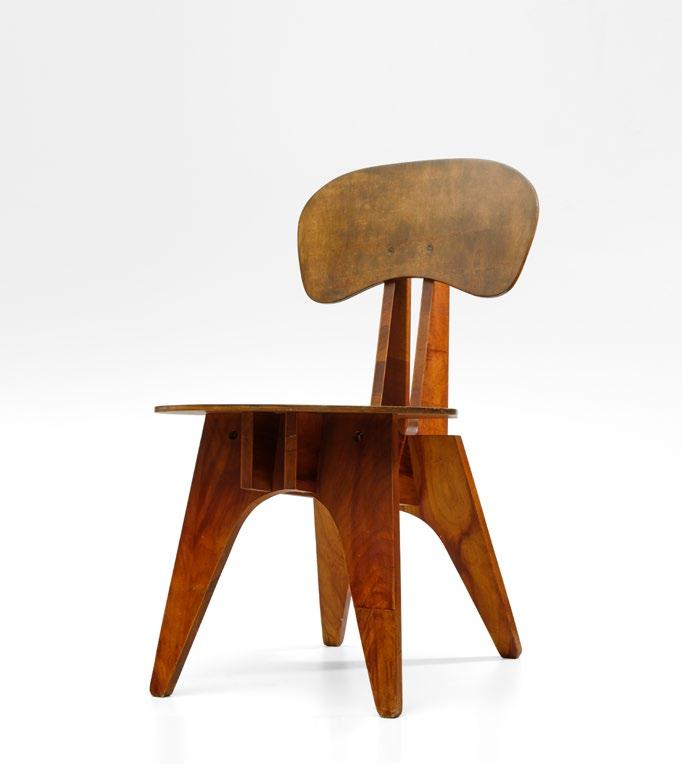
Untitled - 1963

Mixed media on paper, mounted on canvas
46,4 x 73 cm
Signed and dated lower right: 8/5/63
Published:
Manuela de Kerchove d'Ousselghem, Serge Goyens de Heusch, René Guiette, Fonds Mercator, Antwerp, 1991, p.314, cat.1732 (ill.)
Exhibited:
Galerie Numaga 2, Auvernier, René Guiette, 10 March - 15 April 1979
€ 1000 - 1500
042 René Guiette (Belgian, 1893 - 1976)Mali Wood, 19,3 and 19,5 cm
Provenance: Private collection, Gelsenkirchen Adrian Schlag Tribal Art Classics, Brussels

€ 2000 - 3000
Ivory Coast Wood, 30 cm
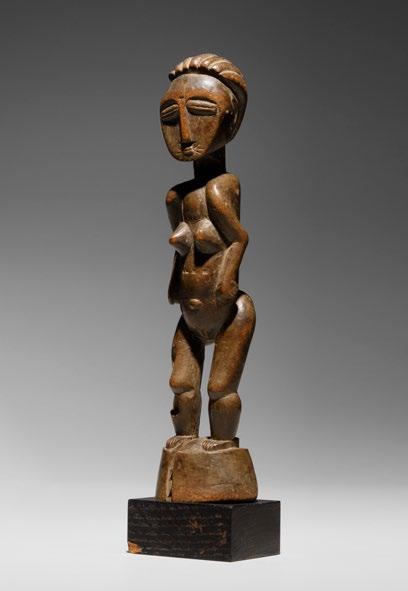
Provenance: Adrian Schlag Tribal Art Classics, Brussels
€ 1500 - 2000
043 Senufo Couple 044 KulangoCongolese Woman in Profile Oil on panel, 60,5 x 50 cm
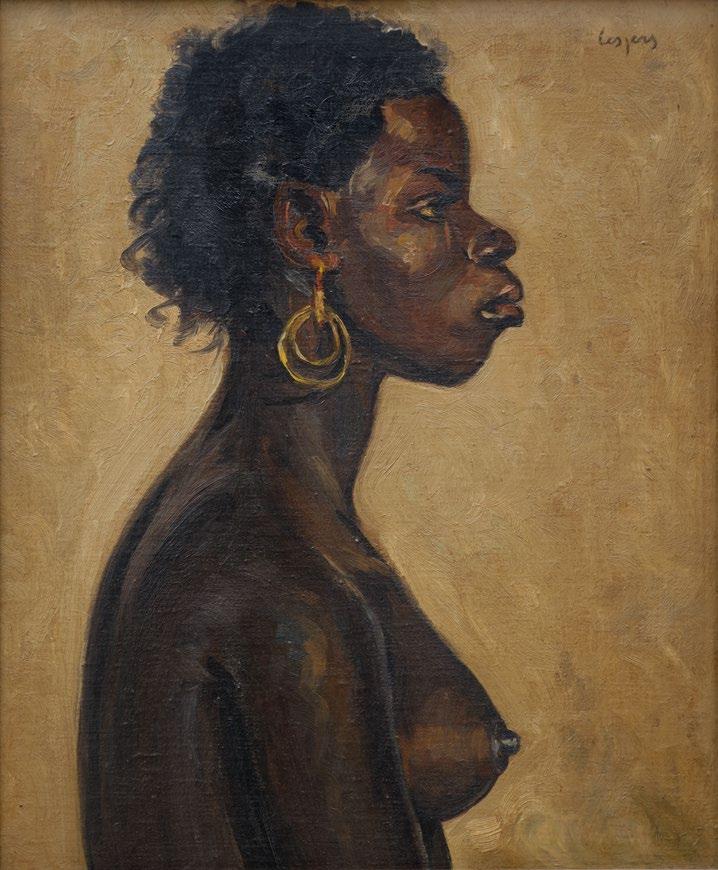
Signed top right
Provenance: Ad De Bruyn Antiques, The Netherlands
€ 1500 - 2500
045 Floris Jespers (Belgian, 1889 - 1965)Provenance: Franco Monti Collection, Milan (1960s) Galerie Joaquin Pecci, Brussels
€ 6000 - 8000
 046 . Lobi Burkina Faso Wood, 77 cm
046 . Lobi Burkina Faso Wood, 77 cm
Kussharo Lake Tree, Study 1, Kotan, Hokkaido, Japan - 2002
Silverprint, 19,4 x 20 cm
Signed and dated lower right on the mount, edition number lower left on the mount: 10/45
Provenance:
Box Galerie, Brussels
€ 1000 - 2000
"In the winter of 2002, I was most fortunate to have a serendipitous meeting with a glorious Japanese Oak on the banks of Kussharo Lake in Hokkaido, Japan. That particular morning was brutally cold, and heavy snow fell relentlessly. The lake was completely frozen over and white. I remember the muffled silence of this place, broken only by the piercing calls of hungry swans as they slid across the ice.
I have photographed countless trees, but this one had a special character, like an oversized bonzai – elegant, and graphically powerful. There was something quintessentially Japanese in its shape, reminiscent of a woodblock print…" M. Kenna.
 047 Michael Kenna (British, 1953)
047 Michael Kenna (British, 1953)
048
Coffee Table - 1960s
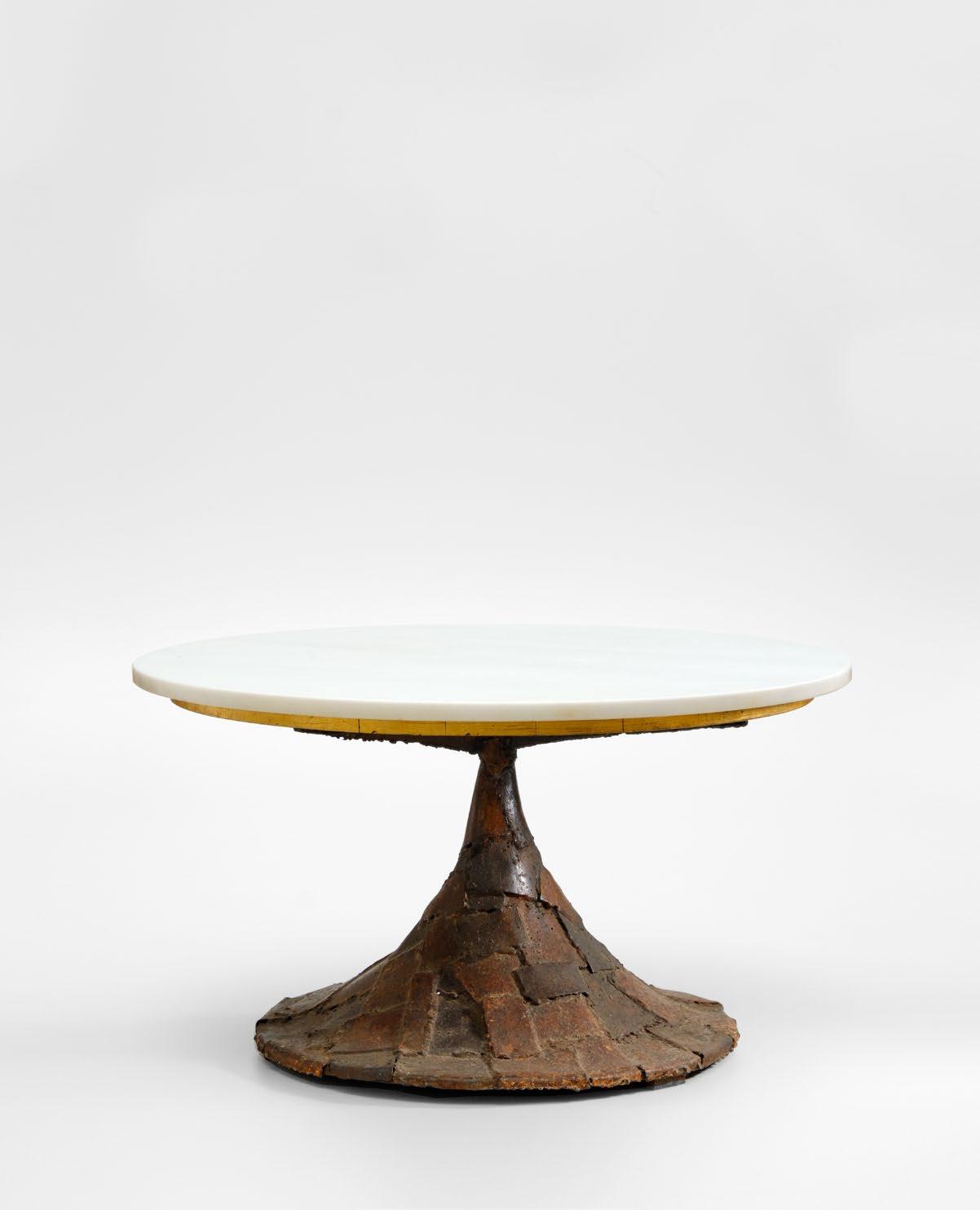
Torch cut, welded, and polychromed steel, marble, and gilt wood
42 x 76 cm
Paul Evans Studio
Provenance:
Jérôme Sohier, Brussels
€ 8000 - 12 000
Paul Evans (American, 1931 - 1987)049 Märta Blomstedt
(Finnish, 1899 - 1982)
Lounge Chair - (1939) 1940s
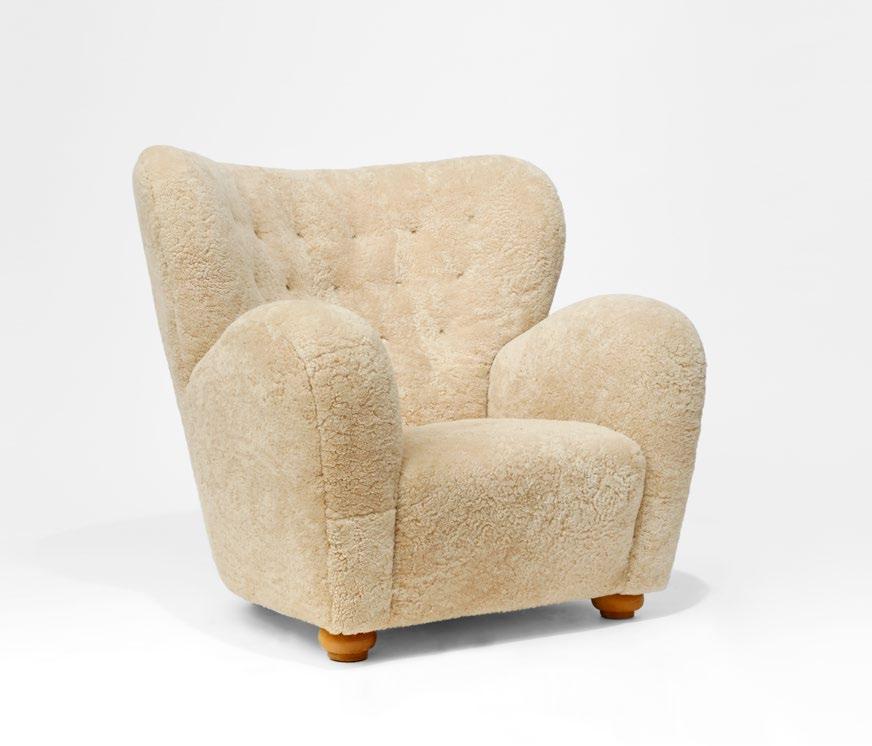
Sheepskin and birch
89 x 106 x 105 cm
Originally designed for the Aulanko Hotel’s lounge area in 1939, these armchairs by Märta Blomstedt embody the functionalism and modernism for which Finnish designers became famous. The hotel’s construction in the city of Hämeenlinna at the shore of Lake Vanajavesi was entrusted to Blomstedt & Lampén, and conceived as a total artwork where the design of the functional architecture, its interplay with the natural setting, as well as the furniture, artworks, tableware, and textile, were treated as an ensemble. The armchairs designed for the hotel had tubular steel feet, but after the outbreak of the war, steel could no longer be used for furniture, and a model – like the one presented here – was subsequently designed with round feet in tainted elm wood. This chair dates from the 1940s.
€ 8000 - 12 000
050 Paola Pezzi (Italian, 1963)
Formazione - 2011
Felt and wood, 110 Ø x 8 cm Signed, titled and dated on verso
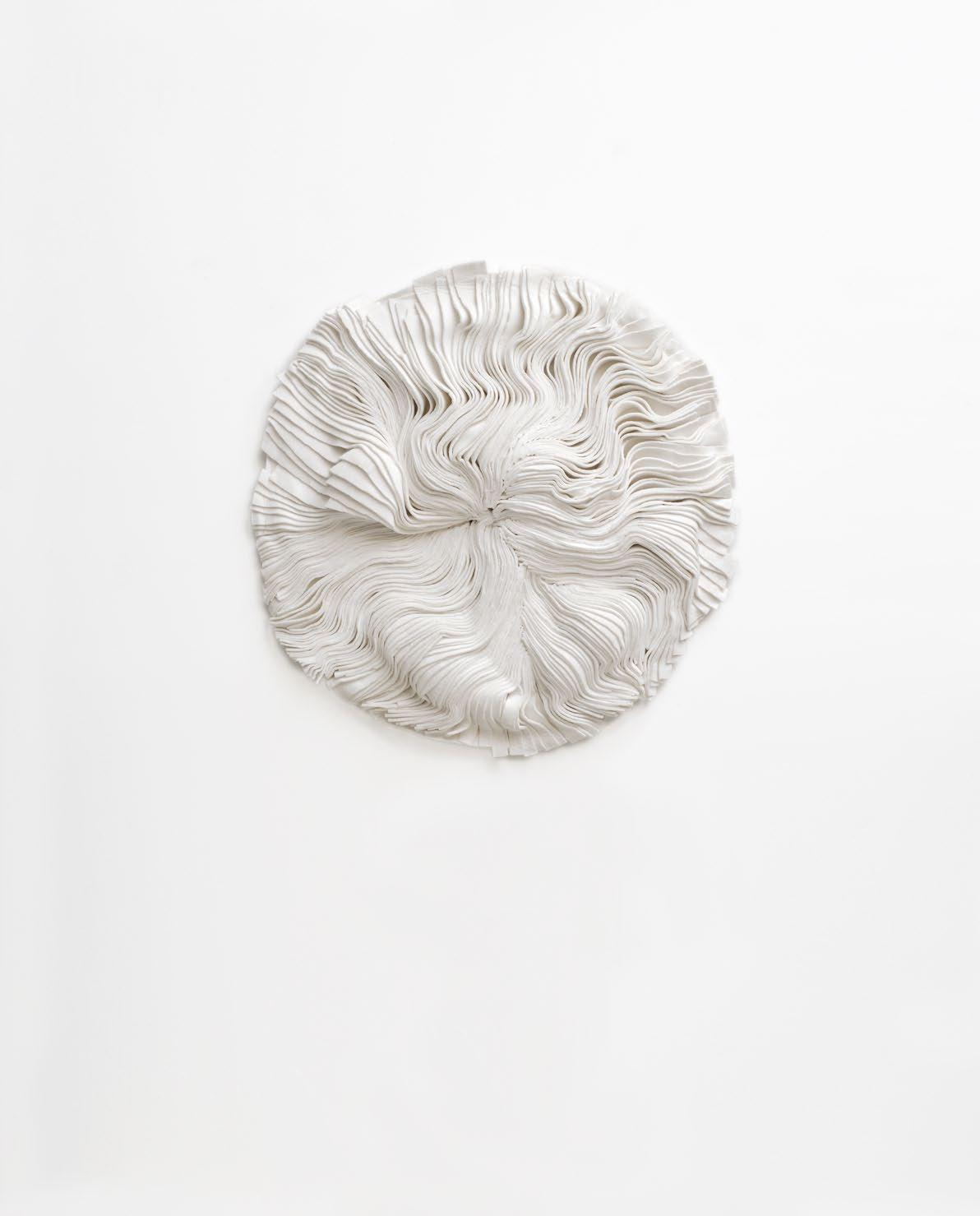
Provenance: Art'Loft, Brussels
€ 3000 - 5000
051
František Drtikol
(Czech, 1883 - 1961)
Composition - 1925
Vintage pigment print, 28,1 x 22,2 cm
Signed and dated on the mount, lower right
Provenance:
Grisebach, Berlin, 30 May 2018, lot 2042
€ 40 000 - 60 000
The nude studies from 1925 - 1929 are undoubtedly amongst the most original and groundbreaking images made by František Drtikol. Using sets from the National Theater in Prague as the decor in which he staged his models – often dancers at the theater – he created a body of photographs that refers to the aesthetics of the Art Deco period and Cubism, as well as the imagery of expressionist movies.
By placing the female nude in a theater set with undulating forms, a composition is created where two-dimensional and three-dimensional elements complement and contrast with one another, in a visual rhyme. For this photograph, Drtikol used an elaborate pigment-based printing process resulting in a warm sepia-colored image with a soft, velvety texture that only accentuates the qualities of its subject: at the same time a hyperstylized formal study and a presentation of the female body that is athletic and strong - representing the "modern" woman – but also powerful and dominating in her erotic appeal.

052 . Nam Tchun Mo (Korean, 1961)
Beam - Strokeline - 2016
Waxed canvas and oil stick on canvas
135 x 65 x 5,5 cm

Title, signature, date, and dimensions on verso
Provenance:
Art'Loft, Brussels
€ 12 000 - 15 000
With certificate of authenticity by the artist, dated 5 February 2019
Liberia Wood and copper, 26 cm
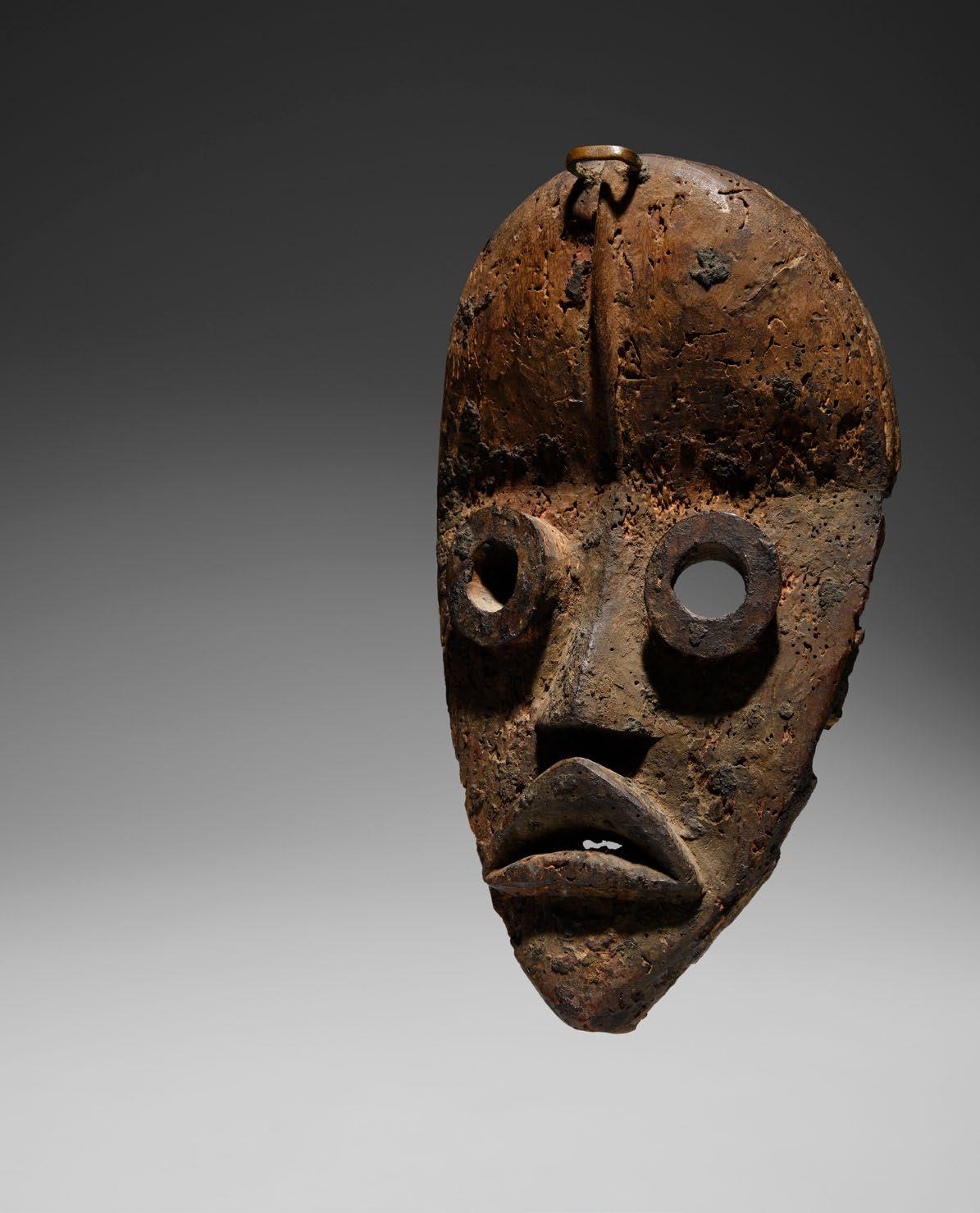
Provenance:
Fily Keita, Los Angeles
Robert Van Den Heyden Collection, Netherlands
Renaud Riley Gallery, Brussels
€ 4000 - 6000
053 . Dan Mask With an old label on the back: Maske Dan Guere Elfenbein-Kuste054 Man Ray (French, 1890 - 1976)
Mathematical Object. Perspective d'un cube, d'une sphère, d'un cône et d'un cylindre - 1936
Vintage gelatin silver print, 29,8 x 22,9 cm Man Ray stamp lower right on verso
Pencil annotation on verso: "6 / Perspective d'un cube, d'une / sphère, d'un cône et / d'un cylindre" Stamp "Editions Cahiers d'Art" with date on verso, top right: 18 SEP 1936
Provenance:
Robert Miller Gallery, New York
Published:
Christian Zervos, Mathématiques et art abstrait, in Cahiers d'Art, Paris, n°1-2, May 1936, p.7 (ill.)
Merry A. Foresta, Perpetual Motif: The Art of Man Ray, Abeville Pr, 1988, ill.197
Isabelle Fortune, Man Ray et les objets mathématiques, in Etudes Photographiques, n°6, May 1999, pp.100-117
Wendy A. Grossman, Andrew Strauss, Adina Kamien-Kazhdan, Edouard Sebline, Man Ray - Human Equations: A Journey from Mathematics to Shakespeare [exhibition catalog: Washington, The Phillips Collection, 7 February 2015 - 10 May 2015; Copenhagen, Ny Carlsberg
Glyptotek, 11. June 2015 - 20 September 2015; Jerusalem, The Israel Museum, 20 October 2015 - 23 January 2016], Hatje Cantz, Ostfildern, 2015, p.28 (ill.)
€ 15 000 - 25 000
Man Ray discovered (allegedly through Max Ernst or Marcel Duchamp) the collection of threedimensional mathematical models at the Institute Henri Poincaré in Paris in 1934. These were made in the late 19th and early 20th centuries to illustrate mathematical equations.
Between 1934 and 1936 Man Ray would return to the Institute to make a series of photographs in which he carefully staged these discarded plaster models in dramatic compositions, with heavily contrasted light, and leaving the background as nondescript as possible. This way, he managedin a quintessentially surrealist approach - to bring to the fore the contrast between these objects’ physical strangeness and the rational, mathematical equation they represented.
Eventually, Man Ray agreed to have a dozen of these photographs published in the famous 1936 issue n°1-2 of Cahiers d’art to illustrate the article by Christian Zervos "Mathématiques et art abstrait" , which also included André Breton’s "Crise de l’objet" .
The print offered here for sale is the very one that was used for this publication, bearing the stamp of "Cahiers d’Art" on the verso.
Another print of this photograph belongs to the collection of the Centre Pompidou in Paris (inv. AM 1982-166).
 Cahiers d'Art, May 1936, with its famous cover "Cœurs Volants" by Marcel Duchamp
Cahiers d'Art, May 1936, with its famous cover "Cœurs Volants" by Marcel Duchamp

055 . Grebo Mask
Liberia
Wood and natural pigments, 50 cm
Provenance:
Armand Trampitsch (1893 - 1975) Collection, Nancy Mrs. Fogel Collection, New York Entwistle Gallery, London/Paris, 2011 Private collection, Paris
Charles-Wesley Hourdé, Paris
Published:
Alain Jacob, "Statuaire de l'Afrique noire", in ABC Décor, n° hors série, Paris, 1976, p.68 (ill.left)
C. Wesley-Hourdé, V.G. Dufournier, L'Emprise des masques, Paris, 2017, pp. 30-33, cat.8 (ill.) and back cover
Exhibited:
Maastricht, MECC, Entwistle Gallery, TEFAF, The European Fine Art Fair, 18 - 27 March, 2011
Paris, Parcours des Mondes, Galerie Charles-Wesley Hourdé, L'emprise des masques, 12 - 17 September 2017, cat.8 (ill.)
€ 300 000 - 500 000
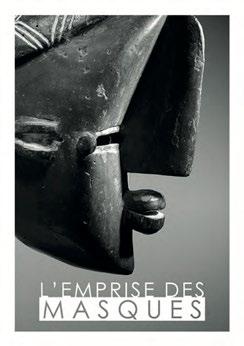
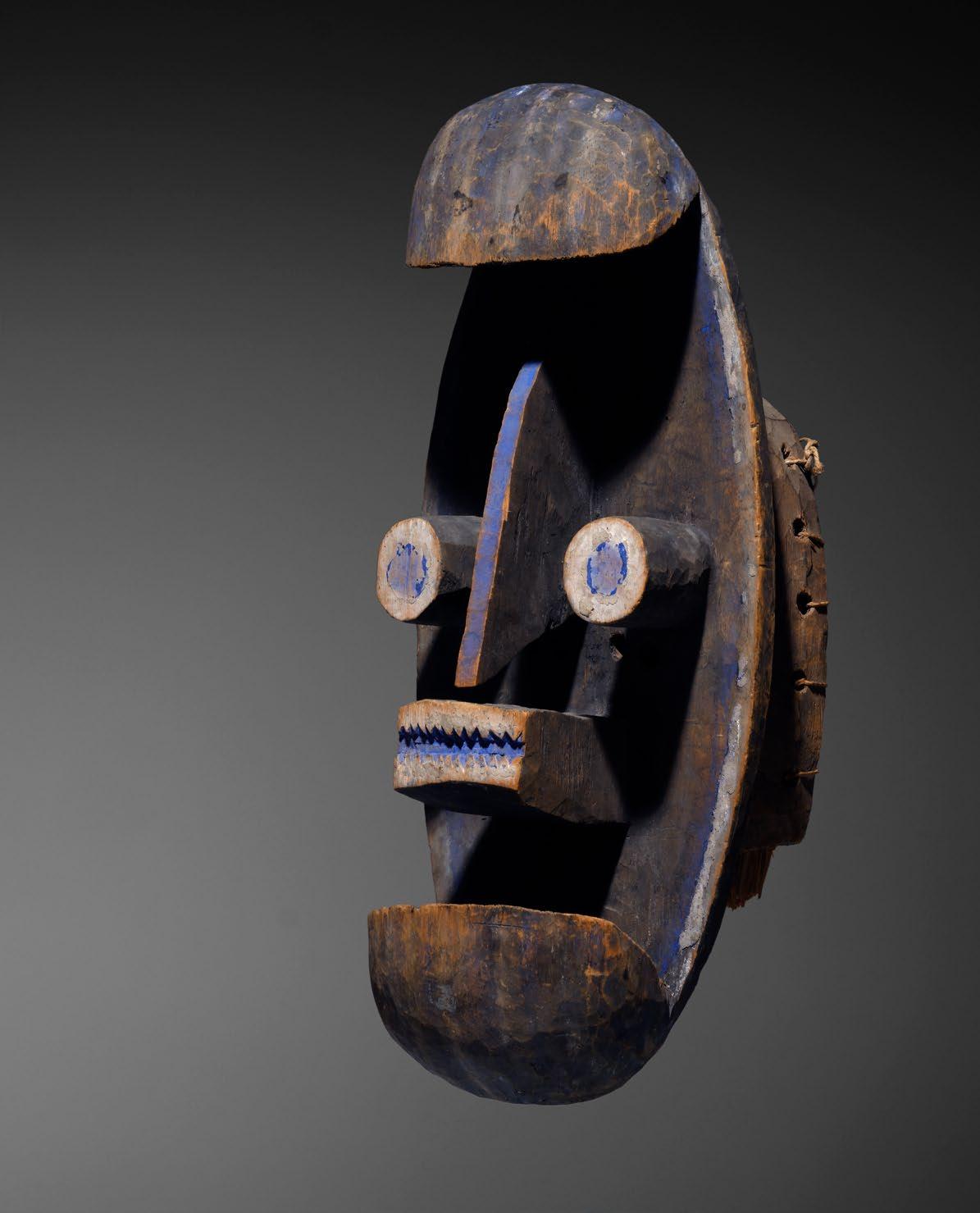
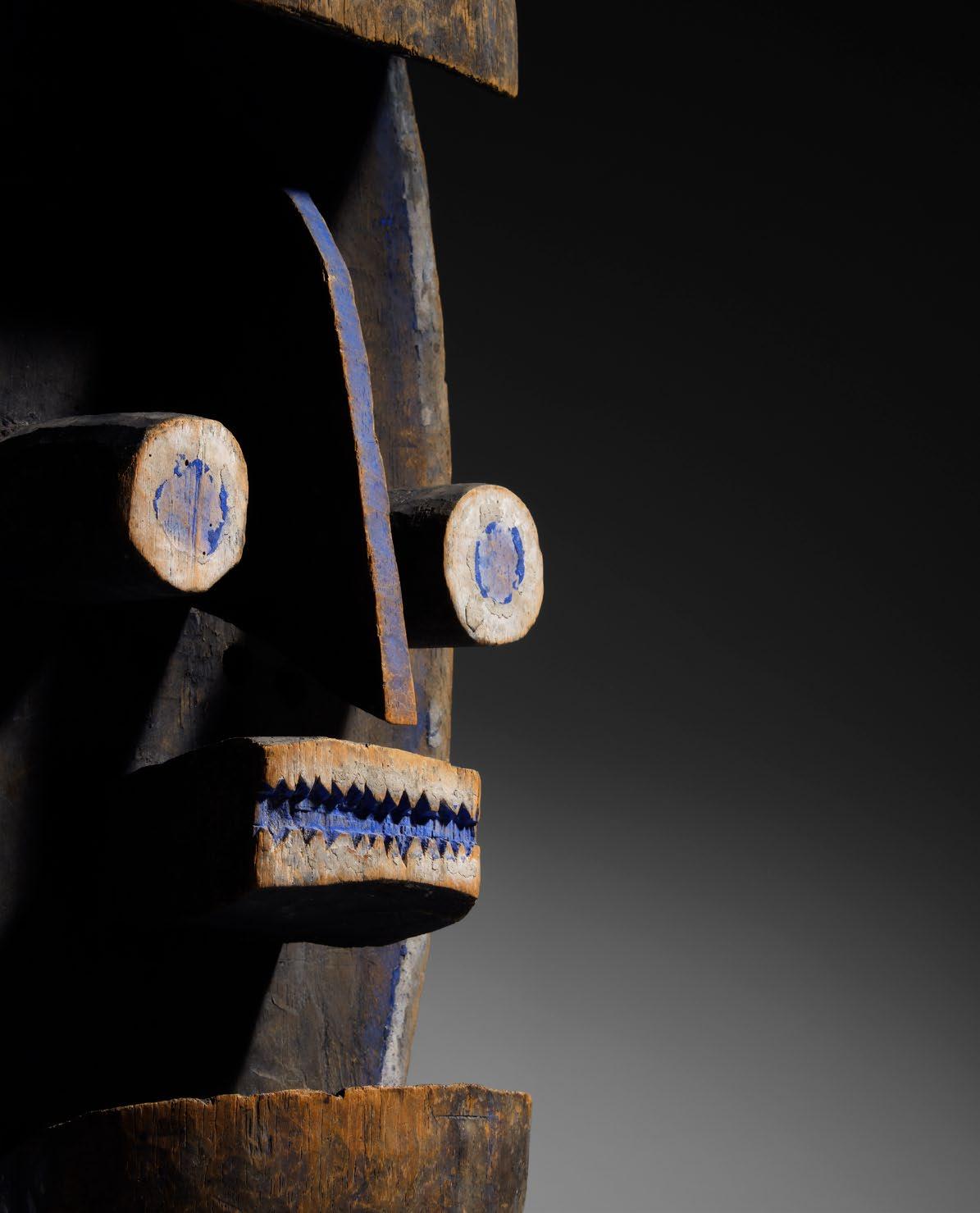
As famous as they are enigmatic, masks like the one presented here with their instantly recognizable "cubist" structure were attributed to the Grebo and Krou populations settled in southeastern Liberia and southwestern Côte d'Ivoire.
Very little is known about the original context and use of these "geometric-style" masks, but generally, it is believed that their cylindrical, protruding eyes reflected their all-seeing power.
For Pierre Boutin, "the information we have [on these masks] is inversely proportional to their artistic celebrity. Unlike those of other south-western Ivorian ethnic groups (Wè, Bété, Niabwa, etc.), [...] we know [...] nothing about their function - play, funerary, initiatory, judicial -, the frequency of their performances - regular or exceptional - or the target audience allowed to see them - open, extended or restricted audience, with or without age or gender selection." (1)
Grebo masks of the type as the one presented here, are part of a very limited corpus. They are worn tilted backward and are characterized by a sometimes large, flat surface on which one or more pairs of cylindrical eyes, a parallelepiped mouth, and generally a protrusion on the forehead – and in this case chin - are projected into space.
Typically, artificial ultramarine blue - so-called "bleu Guimet" - was applied on certain planes of the mask. In the case of our mask, the slender front part of the nose, the inside of the mouth, and the pupils of the eyes are painted with this vivid blue. Some traces can also be found alongside the edges of the frontal plane. In doing so, the sculptor managed to further emphasize the dynamic play of the mask’s contrasting volumes.


In some cases, the influence of African or non-European art on Western art has been disputed or turned out to be the result of all too-interpreted readings. The major (formal) influence of Grebo masks on modern Western art however cannot be disputed. The creation of Picasso’s "Guitare" from 1912 (now at MoMA, New York) which revolutionized modern sculpture of the 20th century, is inextricably linked to his discovery of this type of mask. It is known that by the time Picasso made his famous Guitare sculptures, he owned at least one Grebo mask (another one was bought on the flea market in Marseille in October 1912). Furthermore, he was undoubtedly familiar with the Grebo Mask that belonged to the Musée de l’Homme in Paris, which he visited in 1907. The fact remains that Picasso himself related to Henri Kahnweiler, and later to William Rubin, that the idea of representing the sound hole of the Guitare sculpture was directly inspired by the way the protruding cylinders in Grebo masks suggested (2).
It should be noted that this "influence" of Grebo masks on Western sculpture is a onedirection influence. We can safely assume that the concerns of the Grebo artists were far removed from any artistic challenge that Western avant-garde artists were tackling. Nevertheless, it is no exaggeration to state that Picasso’s "Guitare" from 1912 would have never existed without the epiphany he got by studying the Grebo masks.
It is interesting to note that at the time Picasso drew on the Grebo masks to radically free himself from a – albeit abstracted – mimetic representation, Ferdinand de Saussure had laid the foundation of his semiology, wherein language is presented as a closed system of signs. Signs are defined by their relation to others, by differences, and context. The use of a protruding cylinder to represent a hollow volume, the way Picasso did for the sound hole of his "Guitare" is actually the equivalent of de Saussure’s theory in a visual "language" . It is a striking example of synchronicity in the Western world, but for Picasso, it was the Grebo masks that triggered him to understand the same underlying idea as de Saussure’s semiology.
(1) BOUTIN Pierre, "Les masques "krou" de Côte d’Ivoire" in Afrique, Archéologie, Arts, n° 5, 2007-2009 (2) William Rubin, "Le primitivisme moderne : une introduction", Le primitivisme dans l’art du 20e siècle. Les artistes modernes devant l’art tribal, vol. I, 1991, Paris, Flammarion, p. 19 Installation shot of the exhibition "Primitivism" in 20th Century Art: Affinity of the Tribal and the Modern at the MoMA in New York in 1984-1985, where we see a Grebo mask alongside Picasso’s "Guitare" from 1912.
056 Diane Arbus (American, 1923 - 1971)
A Widow in her Bedroom, NY - 1963 Gelatin silver print, 22,8 x 22,6 cm
Provenance: Robert Miller Gallery, New York
€ 50 000 - 70 000
With a certificate of authenticity by Doon Arbus for the Estate of Diane Arbus dated 21 October 1986. This print is included in the archives of the estate under number 1896-7-2U-1114.
According to this certificate, this photograph was printed between 1966 and 1969. Very few prints were made during Diane Arbus' life, making this an exceptional exemplar.
"Her subjects – that is, the human beings who posed for her – were more varied, as I've said, than most critics have noted. But her subject – her central concern – was unvarying. It was not so much loneliness or alienation, but the range of our attempted defenses against them: the widow in her bedroom, for instance, subtly distanced from the amazingly ornate desk crammed with her obviously treasured collection of objets d'art, which look to the camera like junk, completely incapable of assuaging the unnamable pain we sense in their owner's pose and gaze. All her portraits of individuals suggest an alienation from their possessions, from the very furnishings of their homes, from the things they hoped would console them."
Richard Schickel, in Commentary, March 1973.
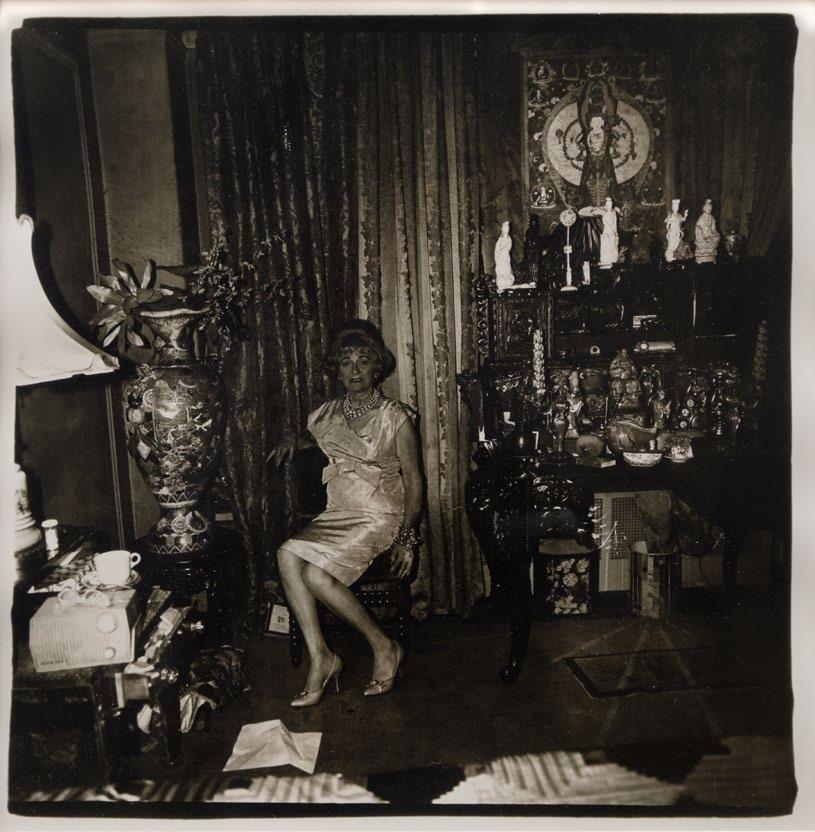
Untitled - 1963 - 1976
Polaroid, 9,5 x 7,3 cm / 10,7 x 8,5 cm
Provenance: Private collection, Italy
Galerie Italienne, Paris (stamp on verso)
Exhibited:
Paris, Galerie Italienne, Carlo Mollino Polaroids - Clichés érotiques, 2011
€ 5000 - 7000
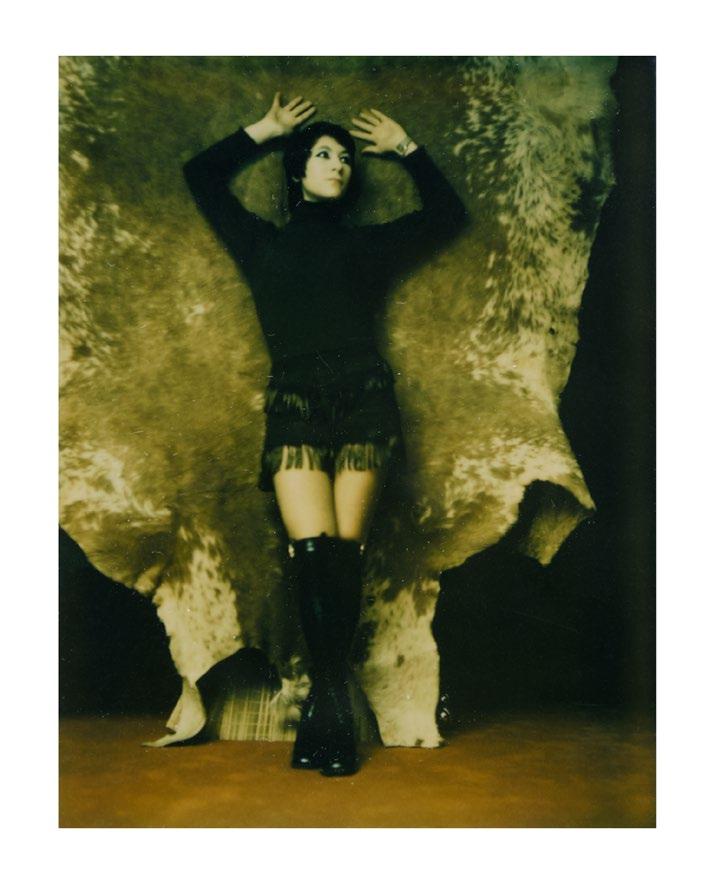 057 Carlo Mollino (Italian, 1905 - 1973)
057 Carlo Mollino (Italian, 1905 - 1973)
Untitled - 2014
Ceramic, 20 x 62,5 x 12 cm
Initials underneath the tray and each vase
Provenance: Pierre Marie Giraud, Brussels

Exhibited:
Brussels, Pierre Marie Giraud, Kristin McKirdy. Natures Mortes, April 26 - May 17, 2014
€ 2000 - 3000
059 . Igbo Alusi Figure Nigeria
Late 19th - early 20th c. Wood, 170 cm
Provenance: Private collection, Paris Berry De Bruyn, Hilvarenbeek
Adrian Schlag Tribal Art Classics, Brussels
€ 8000 - 12 000
Imposing male Igbo Alusi figure with scarification marks on the face and torso, and elaborate headdress. Alusi are deities that play a key role in Igbo belief: they are tutelary or guardian spirits, representing either the founders of a community or are associated with the earth, rivers, or markets. Statues of Alusi were placed in shrines against a wall in groups of six up to twelve figures, and regarded as a family – also symbolically being considered as family members of the Igbo themselves.
Typically, as in this sculpture, the summarily sculpted hands are upturned, as a sign of openhandedness and generosity of the deities, as well as willingness to receive offerings.
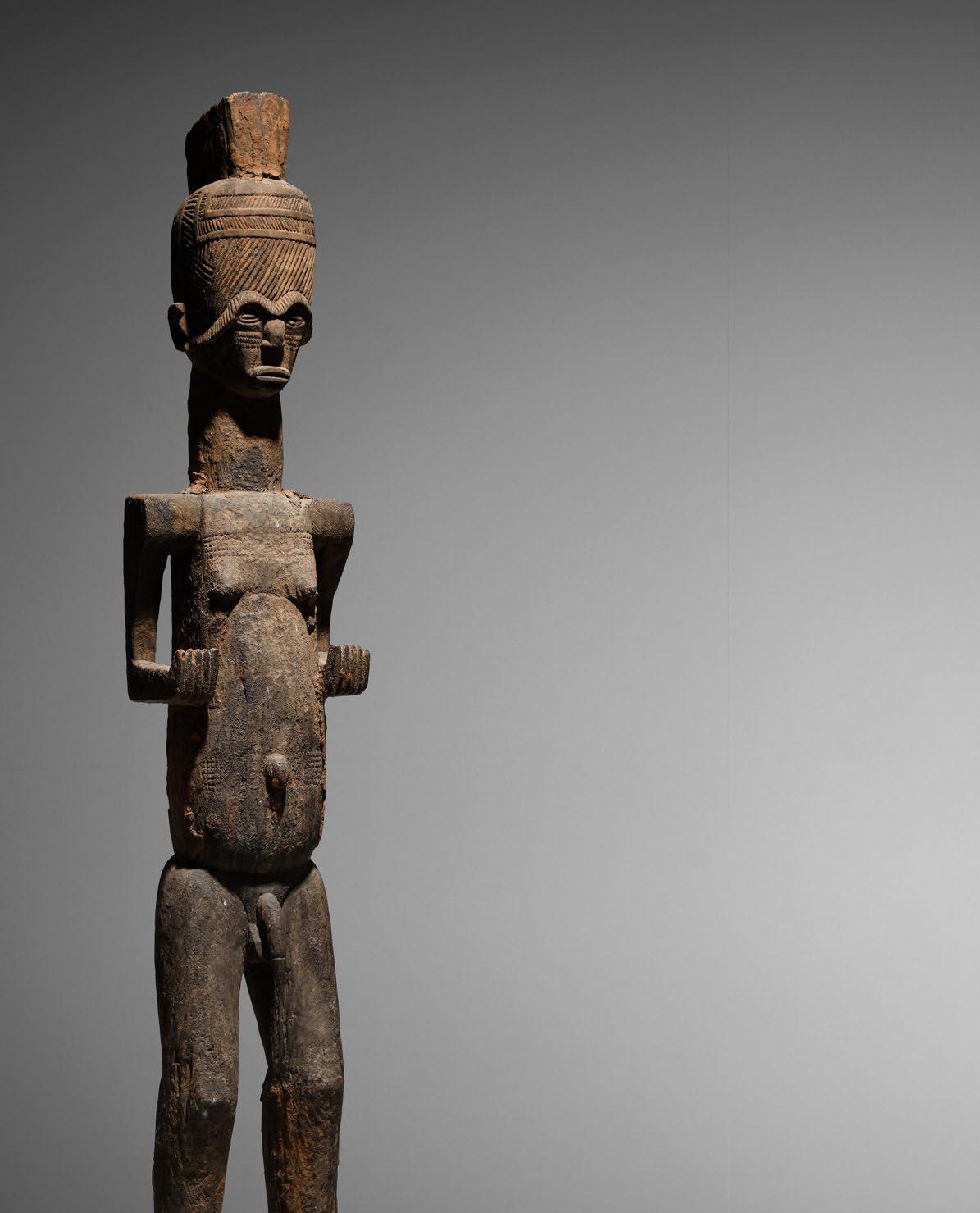
060 Nam Tchun Mo (Korean, 1961)
Beam - 2008
Mixed media on canvas, 120 x 160 cm
Signed, titled, and dated on verso
Provenance:
Art'Loft, Brussels
€ 35 000 - 50 000
With a certificate of authenticity by the artist dated 14 April 2016
"Nam Tchun-Mo’s use of monochromes, his relationship to nature, his obsession with mediums, and his repetitive gestures obviously originate in the principles of Dansaekhwa as set by Park Seo-Bo, one of the eminent members of this art movement from the 70s (alongside Ha Chong-Hyun and Chung Sang-Hwa), of which Nam Tchun-Mo seems to be a proud heir (as well as Lee Bae, as another example). But like all the artists of the second Dansaekhwa generation (meaning "monochrome" or "Korean monochrome" ), Nam Tchun-Mo broke free from the movement, never intending to reproduce or repeat its concepts. Instead, he pushes them further to open new fields of experimentation and perspectives within a very different contemporary framework, looking to turn his lines into landscapes."
Henri-François
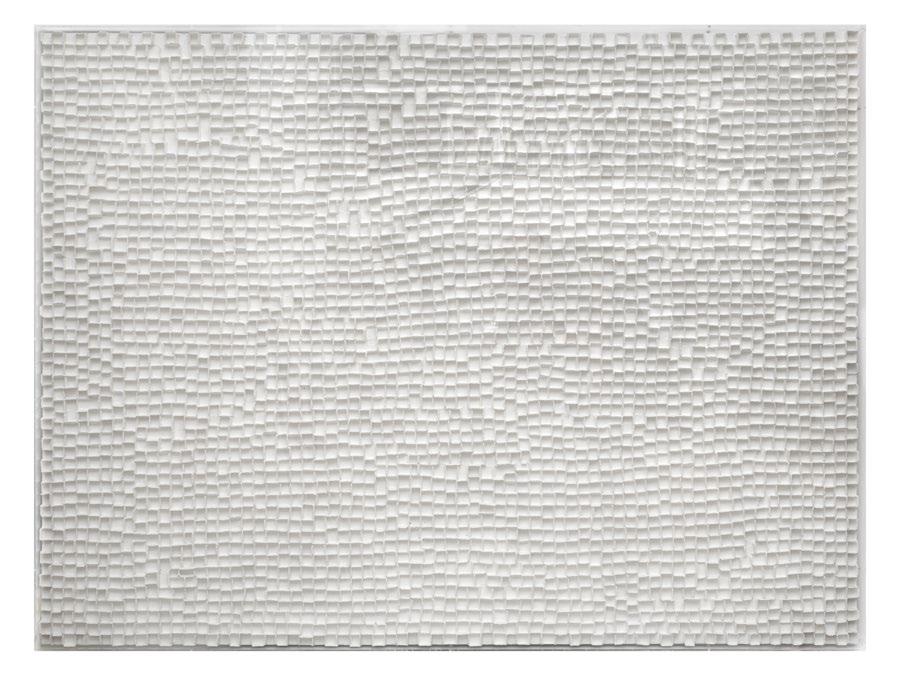 Debailleux, Nam Tchun-Mo. Master of lines, March 2020, introductory text to the exhibition at the Ceysson & Bénétière Gallery, Paris.
Debailleux, Nam Tchun-Mo. Master of lines, March 2020, introductory text to the exhibition at the Ceysson & Bénétière Gallery, Paris.
Brutalist Buffet - 1970s
Black tinted oak 224 x 72 x 52 cm
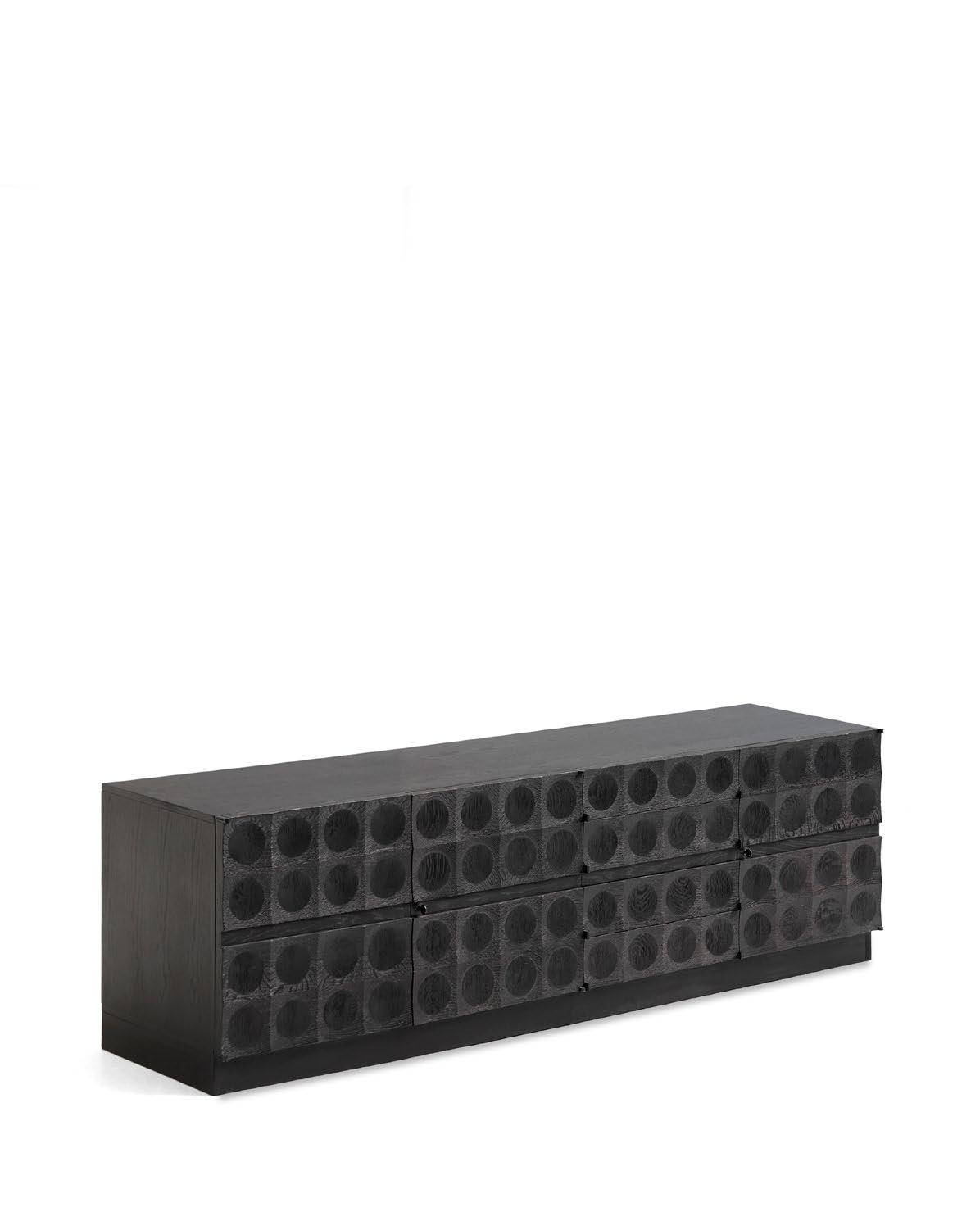
Provenance: Galerie Pierre Mahaux, Brussels
€ 3000 - 5000
Provenance: Samir Dallank collection, France Didier

€ 3000 - 5000
With a certificate from the Didier Claes Gallery (08.10.2011)
062 Batie / Bafo Janus Figure - Mupo Cameroon Wood, 11,4 cm Claes, Brussels063 . Carlo Mollino
(Italian, 1905 - 1973)
Untitled - 1963 - 1976
Two Polaroids
9,4 x 7,2 cm / 10,5 x 8,5 cm (each)
Provenance:
Private collection, Italy
Galerie Italienne, Paris (stamp on verso)
Exhibited:
Paris, Galerie Italienne, Carlo Mollino Polaroids - Clichés érotiques, 2011
€ 10 000 - 15 000
Architect, designer, writer, photographer, sportsman, and professor,… the talents of Carlo Mollino were only matched by his curiosity. Photography always played a central part in Mollino’s work, but the acquisition of a Polaroid camera in 1962 brought his output to a whole new level.
In his 1949 book on photography, "Il Messaggio dalla Camera Oscura", he wrote:
"On fragile sheets, between one pulping and another of today’s ephemeral life of paper, I encounter photographs, concrete poetry that ferries me into the domain of the ineffable as much as a consecrated painting or other canonical art forms; these photographs being ‘personal documents’ or fantasies of an impossible daily life."
It is interesting to note that this ephemeral quality, this intimacy of an imagined daily life can hardly be recognized in his carefully staged photographs of that period. 1962 turned out to be a pivotal year: he moved to a small villa in the hills above Turin, where he installed a studio dedicated to his photography and where he could receive his models who were usually prostitutes, away from curious onlookers. The Polaroid camera allowed him to express exactly what he so poignantly described in his book some 10 years before. The immediacy of the Polaroid conveyed a sense of carnal realism that was absent in his previous work. Capturing the fragility of the fleeting moment, the small format of the prints and their peculiar color palette further added to their delicate poetry, focusing on feminine complexity and seduction, but also tinged with a mild melancholy, and a keen sense of beauty. In the following eleven years, he would make over a thousand Polaroids that he kept secret. It was only in 1985 that they were discovered by Fulvio Ferrari and in 2002 a book by the same brought to the public eye this intimate work for the first time.
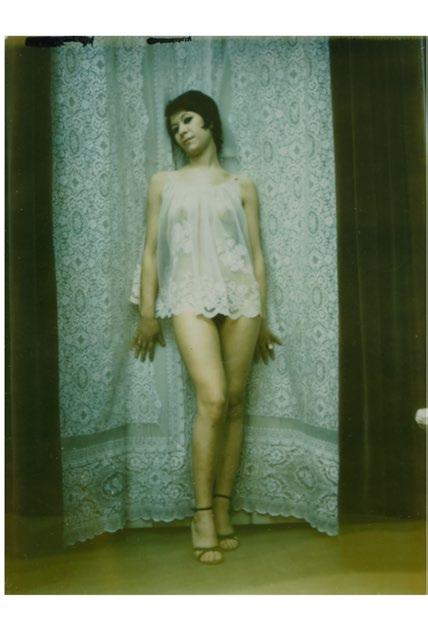

Low table "Goutte d'eau" - c.1970 Bronze and lacquered steel, 120 cm Ø Signed on the edge

Provenance:
Galerie Pierre Mahaux, Brussels
An exceptional version of Ado Chale’s signature piece, this "table goutte" (Waterdrop Table) dated c.1970 is one of the very first that Chale made. It comes with a certificate of authenticity by the artist, dated 5 November 2013.
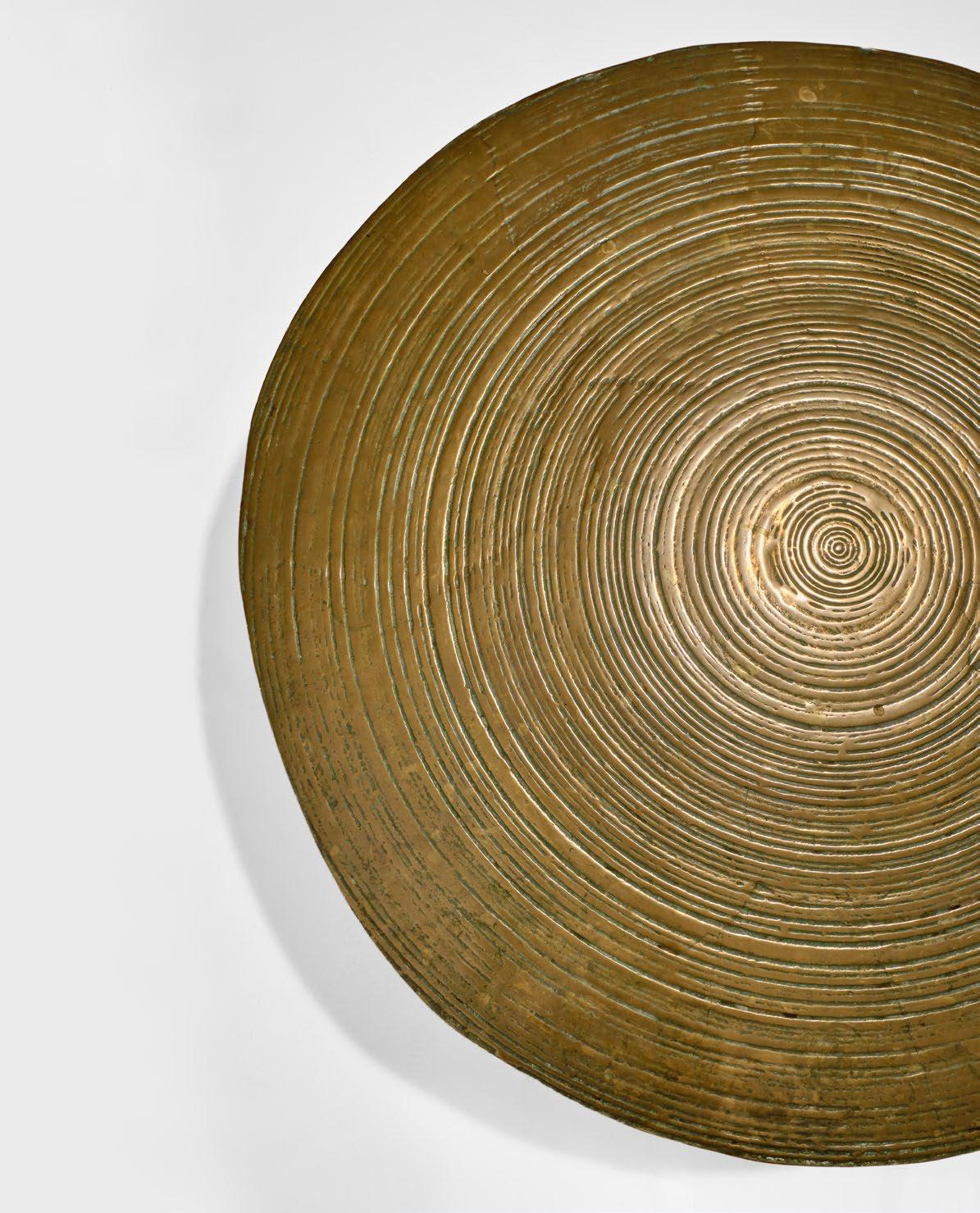
065 Ritsue Mishima (Japanese, 1962)
Waterflower - 2013 Blown glass, 52 cm Signature and date engraved underneath

Provenance: Galerie Pierre Marie Giraud, Brussels
€ 10 000 - 15 000
Unique
066 . Robert Mapplethorpe (American, 1946 - 1989)
Patti Smith - 1973
B/W Polaroid, 9,4 x 7,2 cm (image) - 10 x 8 cm (mount window)
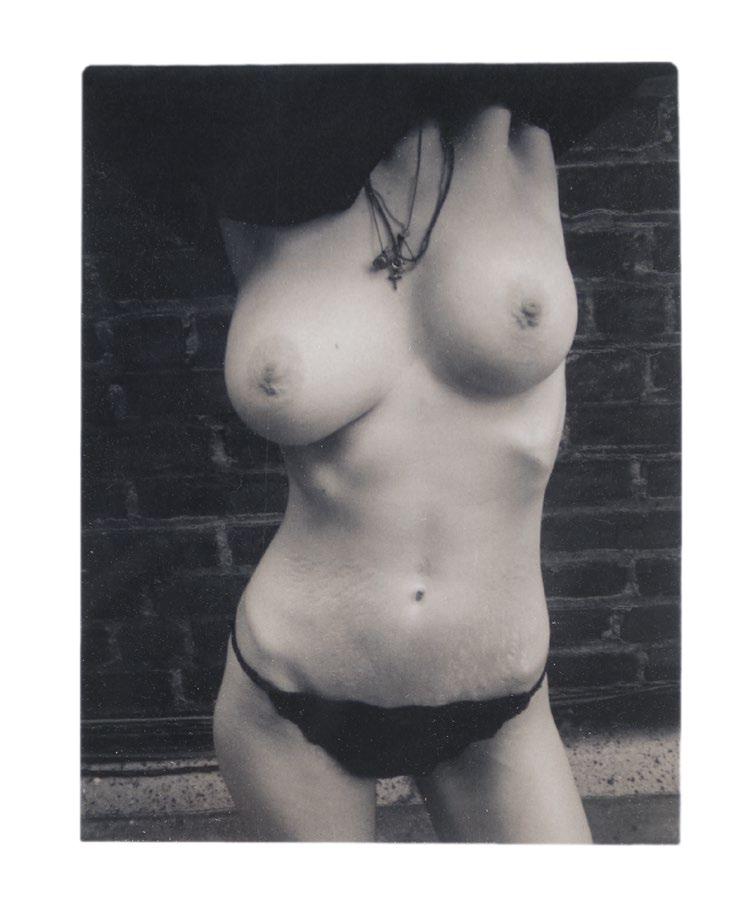
Provenance:
Robert Mapplethorpe Foundation
Galerie Xavier Hufkens, Brussels
Published:
Tokyo Metropolitan Museum of Photography, Love's BodyArt in the age of AIDS, 2 October 2010 - 5 December 2010, cat.60
€ 10 000 - 15 000
Referenced in the Robert Mapplethorpe archives under n° MAPP-212-1973
Provenance: Box Galerie, Brussels
€ 2000 - 3000
 067 Josef Sudek (Czech, 1896 - 1976)
Glass - 1950
Gelatin silver print 16 x 11,7 cm (image); 23,7 x 17,7 cm (sheet)
067 Josef Sudek (Czech, 1896 - 1976)
Glass - 1950
Gelatin silver print 16 x 11,7 cm (image); 23,7 x 17,7 cm (sheet)
068 Punu Charm
Gabon, late 19th - early 20th c. Wood, 11 cm

Provenance: Private colonial collection, France Max Itzikowitz Collection, Paris Galerie Jean-Baptiste Bacquart, Paris (2017)
Adrian Schlag Tribal Art Classics, Brussels
Published: Charlotte Grand-Dufay, Les Lumbu un art sacré. Bungeelë yi bayisi, Gourcuff Gradenigo/Galerie Bernard Dulon, Paris, 2016, p.194, fig.131
€ 4000 - 6000

Free Form Side Table - 1960s
Walnut wood, 54,5 x 76 x 39,5 cm
Powell Studio
Provenance:
Estate of Phillip Lloyd Powell, New Hope
Jérôme Sohier, Brussels
€ 15 000 - 20 000
After the Second World War, Phillip Lloyd Powell moved to the village of New Hope in Pennsylvania where he joined a community of craftsmen, including Paul Evans and George Nakashima. Throughout the 1950s and 1960s, Powell shared a studio with Evans with whom he often collaborated.
Powell’s signature pieces – such as the organic side table presented here – illustrate his ability to bring out the characteristics and unique shapes of the pieces of wood used.
Matthew Damon confirmed the authenticity of the table.

070 Bernd & Hilla Becher
(German, 1931 - 2007 / 1934 - 2015)
Grain Elevator, Sheldon, Illinois, USA - 1986

Silver gelatin print
91,5 x 73,5 cm (image size: 60 x 50 cm)
Signed, titled, dated, numbered 'C2' twice, and editioned '2/5' in pencil on verso
Provenance:
Douglas Udell Gallery, Vancouver
Sotheby's New York, 6 April 2011, lot 159
€ 12 000 - 18 000
Lady in a Rooming House Parlor, Albion, NY - 1963

Gelatin silver print, 22,4 x 21,3 cm
Provenance: Robert Miller Gallery, New York
€ 18 000 - 25 000
With a certificate of authenticity by Doon Arbus for the Estate of Diane Arbus dated 1 June 1995. This print is included in the archives of the estate under number 3638-12-2U-1114.
According to this certificate, this photograph was printed between 1963 and 1967. Very few prints were made during Diane Arbus' life.
071 Diane Arbus (American, 1923 - 1971)Provenance: Jérôme Sohier, Brussels
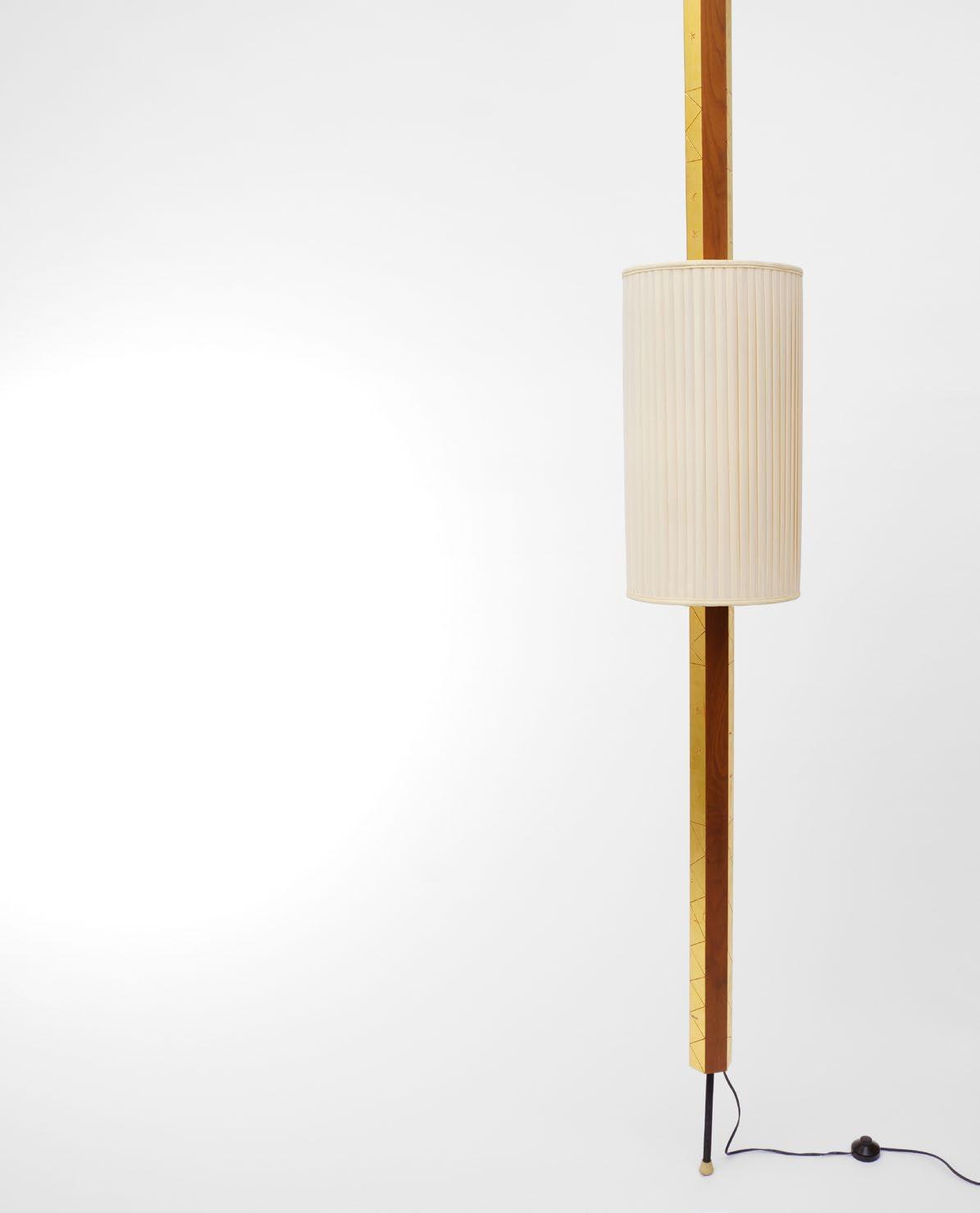
€ 8000 - 12 000
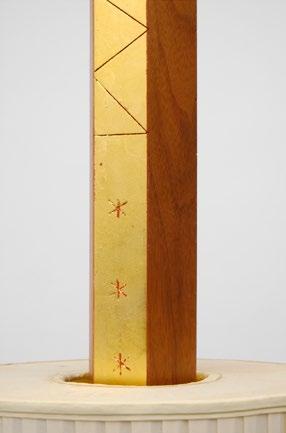 072 Phillip Lloyd Powell (American, 1919 - 2008) Floor Lamp - 2005
Gilt and lacquered walnut, linen, 282 cm Powell Studio
072 Phillip Lloyd Powell (American, 1919 - 2008) Floor Lamp - 2005
Gilt and lacquered walnut, linen, 282 cm Powell Studio
073 Bembe Figure
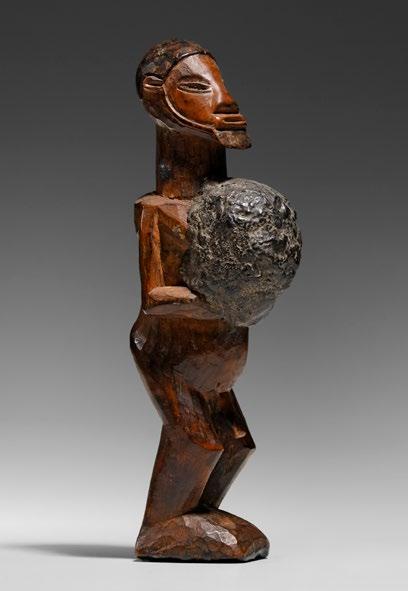
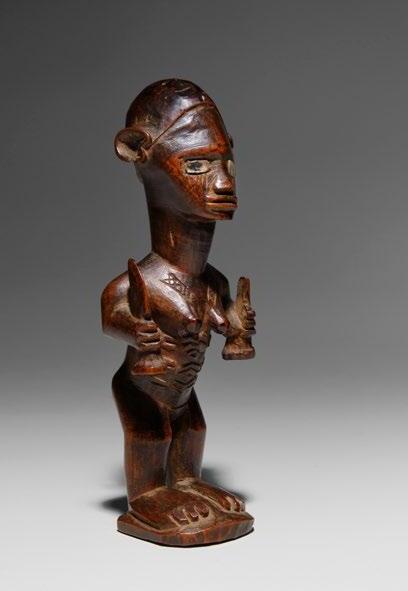
D.R. Congo Wood, 20 cm
Provenance: Renaud Riley Gallery, Brussels
€ 1500 - 2000
D.R. Congo Wood, 13,5 cm
Provenance: Roger Bourahimou, Brussels
€ 1500 - 2000
074 Bembe Figure075
Chess Painting N°114 - 2017 (Duchamp vs. Dake, Folkestone, 1933) Primer on linen, oak frame, 41 x 41 cm Titled, located, signed, and dated on verso
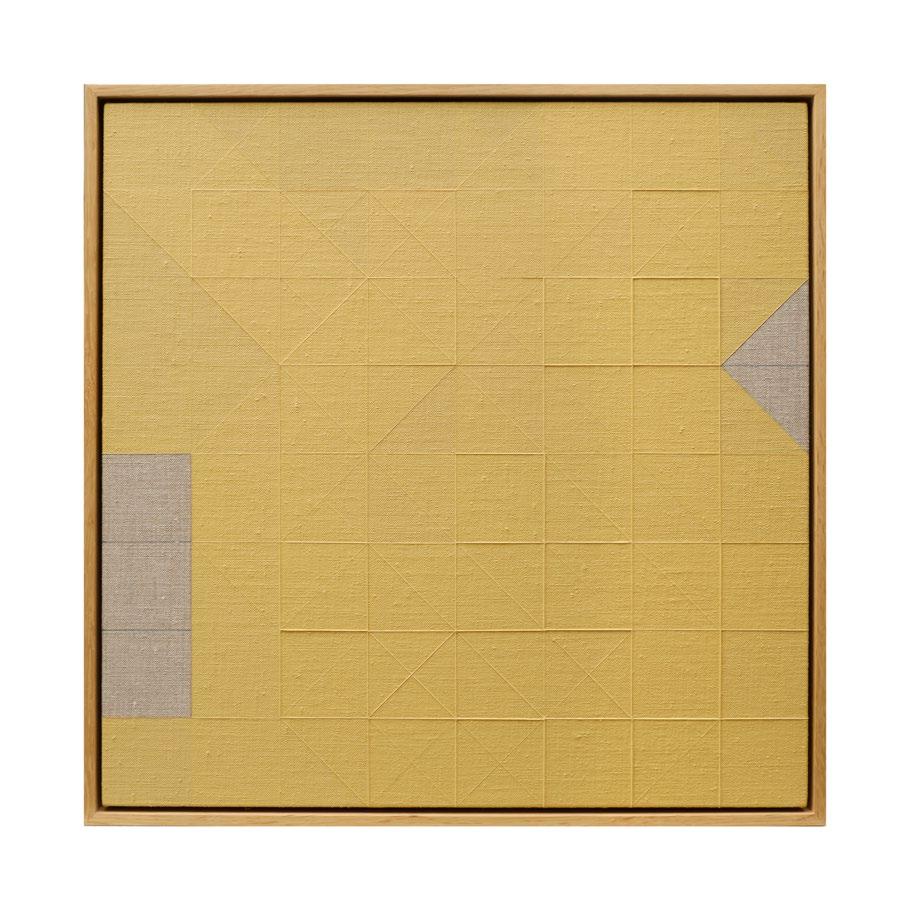
Provenance:
Benjamin Sebban Gallery, Brussels
Exhibited:
Brussels, Benjamin Sebban Gallery, Tom Hackney. A Game in a Game, September 2018
In 1923, after (un)finishing work on The Large Glass in New York, Marcel Duchamp ‘abandoned art’ and returned to Europe. He relocated to Brussels, spending a period of eight months immersed in the study of chess.
Since 2008 British artist Tom Hackney has been making work based on Marcel Duchamp’s chess activities. The exhibition A Game in a Game where the painting presented here was shown, showcased an ensemble of paintings, drawings, and sculptures that pivot on this art-historical moment.
. Tom Hackney (British, 1977)076 Luba Zimba
Chief's Stool - Kipona
D.R. Congo Late 19th c. Wood, 37 cm
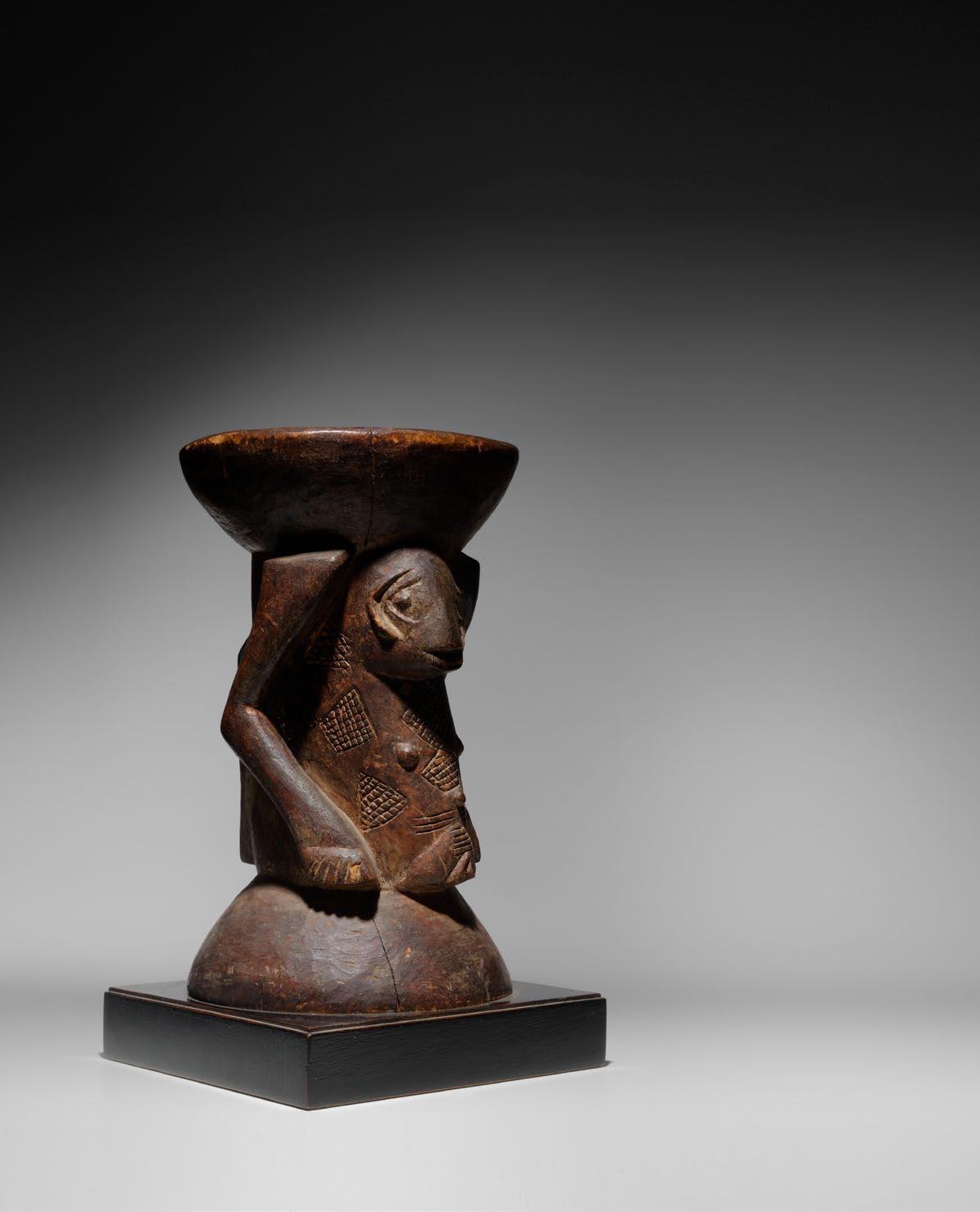
Provenance: Edouard d'Orjo de Marchevette (collected in situ in 1925) By descent
Didier Claes, Brussels
Exhibited: Art traditionnel: Exposition universelle et internationale de Bruxelles 1958
€ 2000 - 3000
077 Lane Staccato
American, 1970s
Mirror
Wood and mirrored glass, 124 x 49 cm
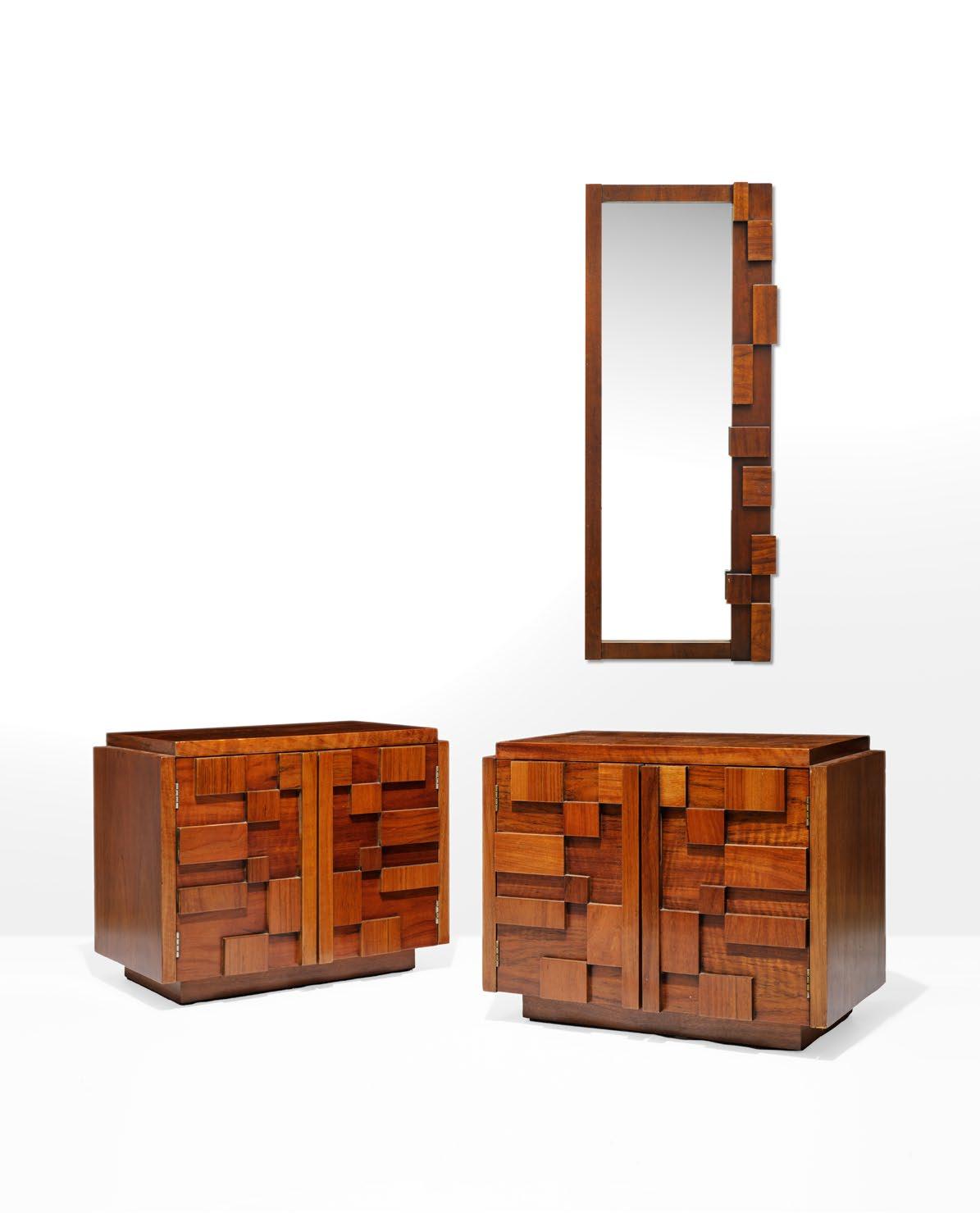
Bedside Tables
Wood, 56 x 42 x 70,5
€1200 - 2000
Tree I - Folkestone - 1986

Gelatin silver print
41,5 x 41,5 cm (image)
50 x 50 cm (sheet)
Provenance
Stefan de Jaeger Collection , Brussels
€ 600 - 800
078 . Marc Trivier (Belgian, 1960)Sudan Wood, 18,2 cm

Provenance: Renaud Riley Gallery, Brussels
€ 800 - 1200
079 Neckrest080 Bena Lulua Seated Figure
D.R. Congo Wood, 20,5 cm
Provenance: Pierre Dartevelle, Brussels Private collection
Didier Claes, Brussels
Published:
Bettina von Lintig, African Impressions. Tribal Art and Currents of Life, 5 Continents, Milan, 2011, p.71, pl.25
€ 10 000 - 15 000
Finely carved squatting figure with delicate scar decoration on the face.
In this Lulua sculpture, we recognize the stylistic influence of Luba, Kuba, and Tshokwe carvers. Figures like these are believed to protect from illness, but according to Constantine Petrides in "Luluwa. Central African Art Between Heaven and Earth" (Mercator Fonds, Brussels, 2018, p.93), these figures might also be related to the hunt.
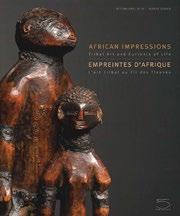
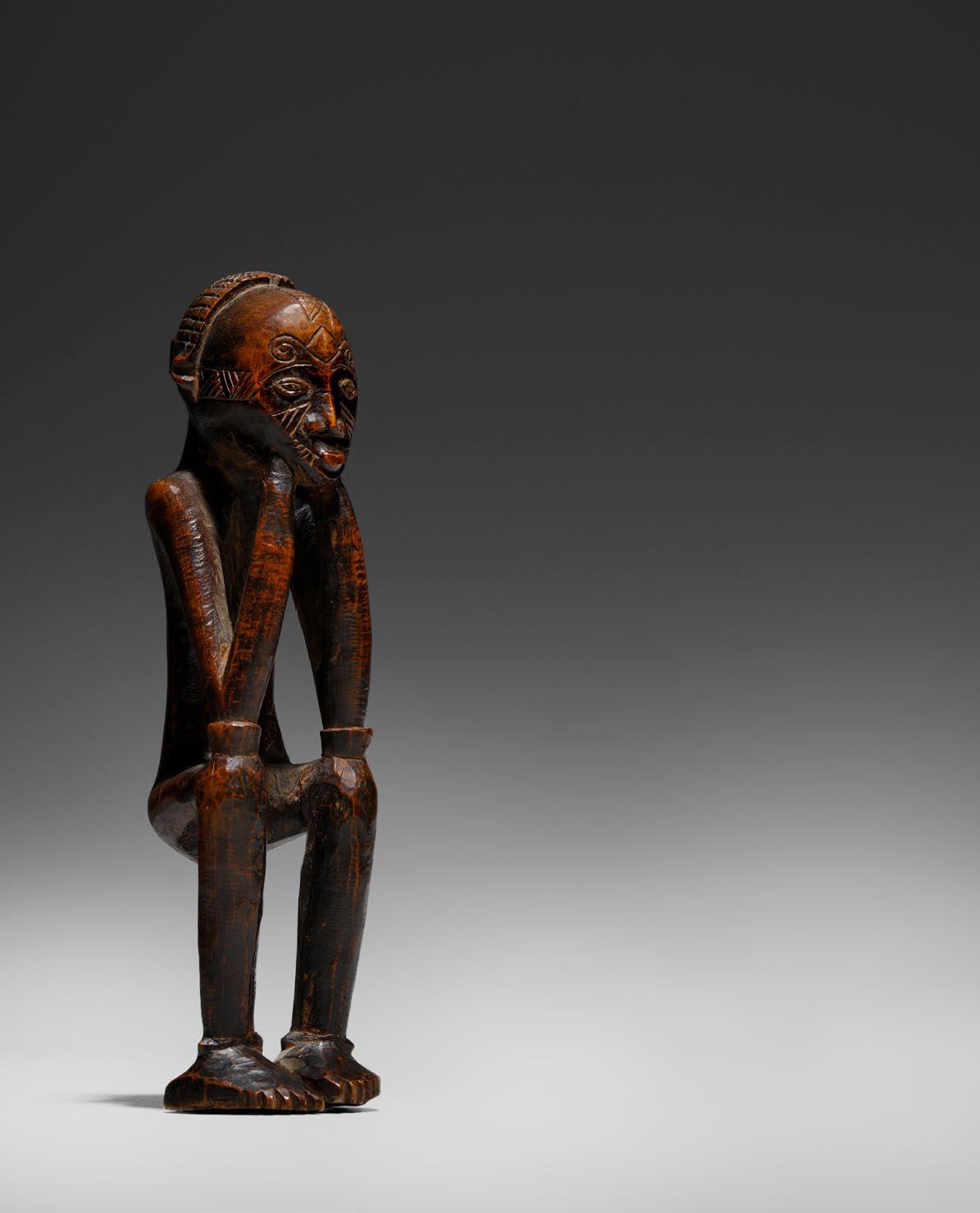
Untitled, Mexico - 1987
Oil on canvas mounted on board, 13 x 18 cm Signed and dated on verso: February 1987

Provenance: Private collection, Brussels (acquired directly from the artist)
€ 20 000 - 30 000
"I was profoundly under the spell of pre-Renaissance painting during my years in Italy: from Lorenzetti to Fra Angelico. Even to this day, my iconography is a combination of that imagery and the language of Mexican sign painting. This blend allowed me to find my own language to materialize images. I’ve never been that interested in a painterly style. My images are almost completely resolved by the time they make it to the canvas. Painting then, for me, is a very technical, craftlike process, not a creative one, since all I’m interested in is for the image to function on the canvas. I’m not concerned with reinventing a pictorial language. If the language of Mexican sign painters works for me, I’ll go for it."
François Alÿs in an interview with Carla Faesler for Bomb Magazine, July 2011
Untitled - 1955

Gouache on paper, 34,5 x 49,5 cm
Signed, located, and dated lower right: E/ville (Elisabethville)
Provenance:
Schiller Art Gallery, Brussels (2014)
€ 2000 - 3000
082 Sylvestre Kaballa (Congolese, 1920)(American, 1980)
Untitled Black Double Curve - 2019
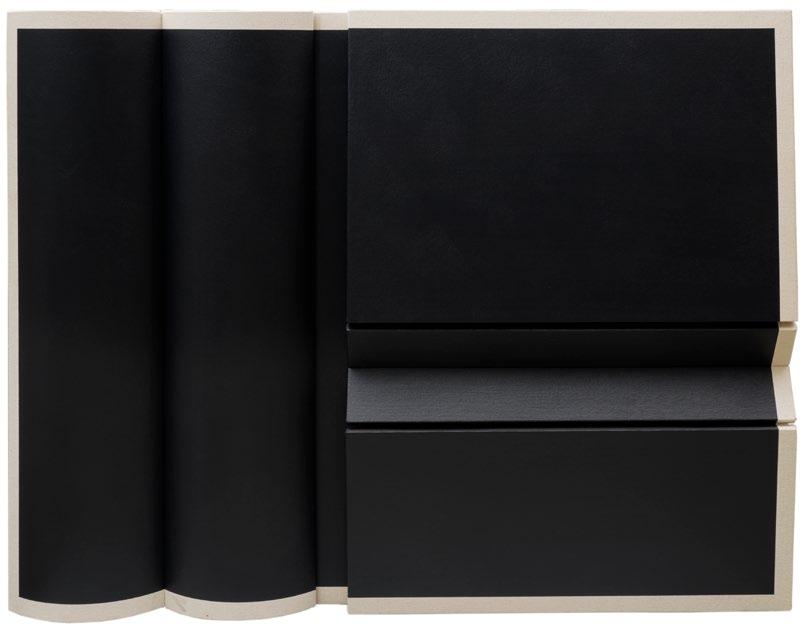
Acrylic paint on canvas on panel
105 x 140 cm
Signed and dated on verso
Provenance:
Acquired directly from the artist
€ 8000 - 12 000
Robert Moreland is a minimalist sculptor/painter living and working in Los Angeles. The artist explores line, color, and 3-dimensionality in a manner that has roots in early minimalism. Not merely experimenting with shaped canvasses or geometric painting alone, he folds the 2-dimensional plane to see how line and color are disrupted by actual volume. Like the creators of the 1960s "painting objects" , Moreland operates in that unconventional space between painting and sculpture.
083 Robert William Moreland084 . Turning Side Table

Japan - early 20th c.
Wood, 71 cm x 49 cm Ø
Provenance: Japanese private collection Didier Delville Oriental Art, Brussels
€ 1000 - 1500
085 Boa Mbole Figure
D.R. Congo
Wood, 76 cm
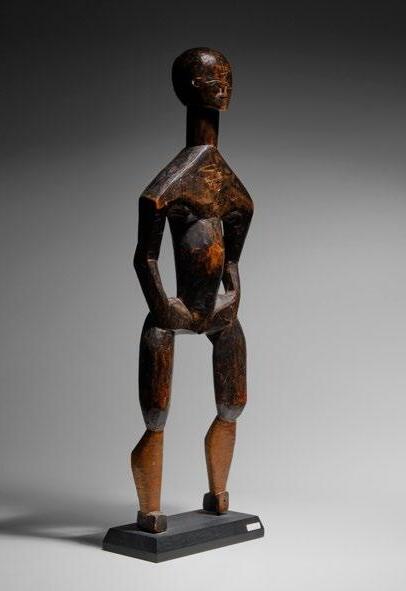
Provenance: Pierre Dartevelle, Brussels
€ 4000 - 6000
D.R. Congo
Late 19th c.
Wood and brass tacks, 142 cm
Provenance:
Edouard d'Orjo de Marchevette (acquired in 1925)
By descent
Didier Claes, Brussels
Exhibited:
Art traditionnel: Exposition universelle et internationale de Bruxelles 1958
€ 6000 - 8000
Scepters had many uses among the Luba: diviners used them to trace signs on the ground that needed to be interpreted, for kings they were an attribute of their authority, warlords displayed them as sacred signs protecting them from their enemies in the midst of battle, and court historians used them as mnemonic aids to commemorate founding events and the history of genealogies.
The upper end of this non-figurative scepter is adorned with a triangular paddle decorated with incised waffle motifs in triangles and squares. At the center of the shaft, an openwork knot in wood bears a rich brass tack decoration. The iron point at the bottom enabled land chiefs to mark the boundaries of their possessions on the ground. It also allowed the scepter to be driven into the ground on certain occasions, attesting to the ruler's power.
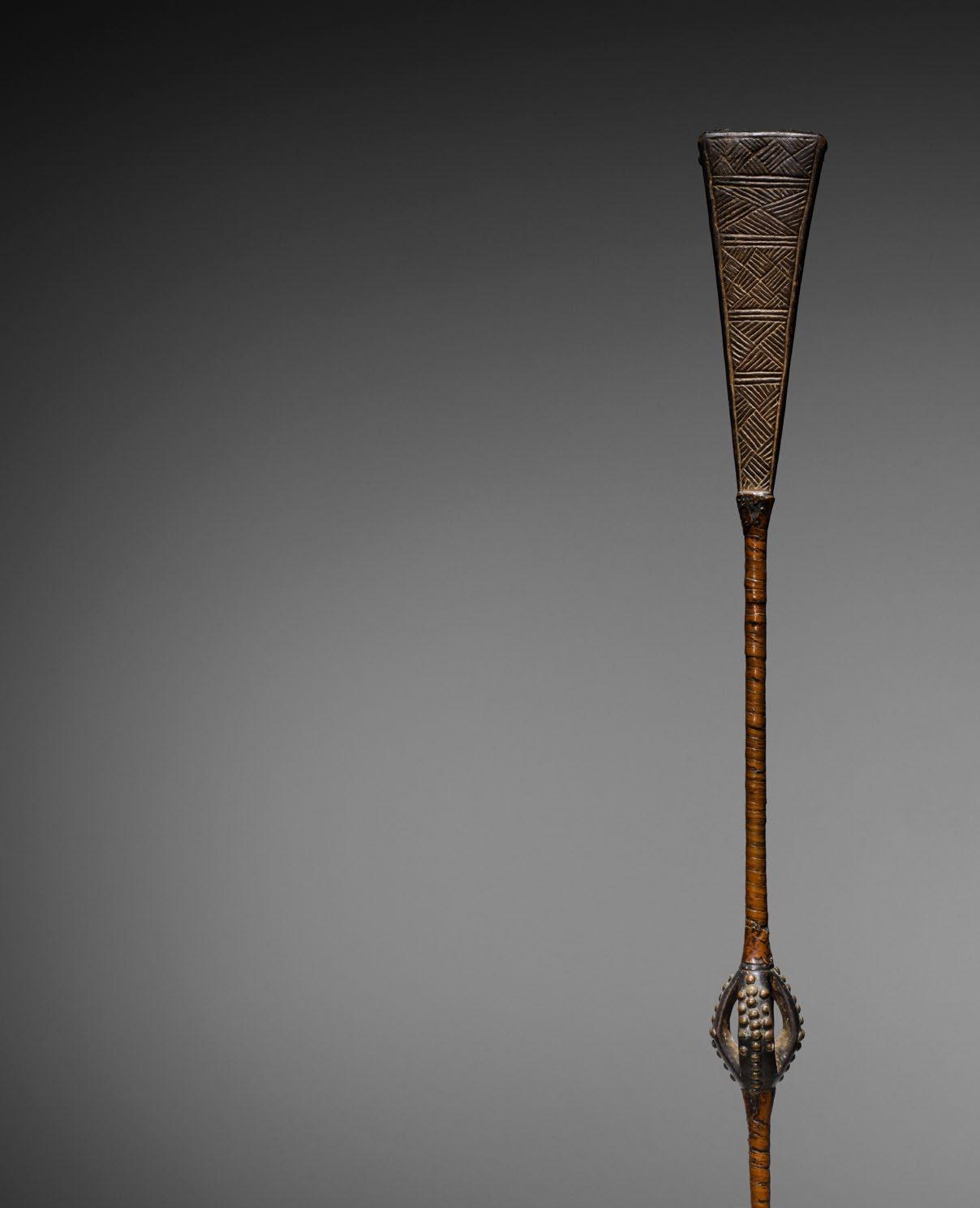
(Japanese, 1937)
Untitled - 2013
Canvas and vinyl glue, 200 x 136 x 26 cm
Provenance:
Cour Carrée, Paris
€ 30 000 - 50 000
With a certificate of authenticity from the artist dated 11 April 2013.
As a preeminent member of the second-generation Gutai Movement in Japan, Takesada Matsutani gained international renown during the 1970s for his paintings that incorporated thick bulbs, blisters, and folds, made of vinyl glue and inflated by air, that covered the canvas. True to the basic principles of the Gutai movement, this unusual material played the predominant role in Matsutani's work, but he managed to add an extra dimension: the volumes blown literally into shape by fans in his works evoke organic, sensual forms, sometimes taking on an erotic character.
In 1966 Matsutani received a grant from the French Government to work for six months in Paris, and eventually, he stayed, spending his time now between Paris and Nishinomiya in Japan.
His works can be found in the collections of the Centre Pompidou and the Institut National d'Histoire de l’Art (INHA) in Paris, the National Museum of Art in Tokyo, and the Victoria & Albert Museum in London, among others.
In 2019 a retrospective of his work was organized at the Centre Pompidou in Paris.
087 . Takesada Matsutani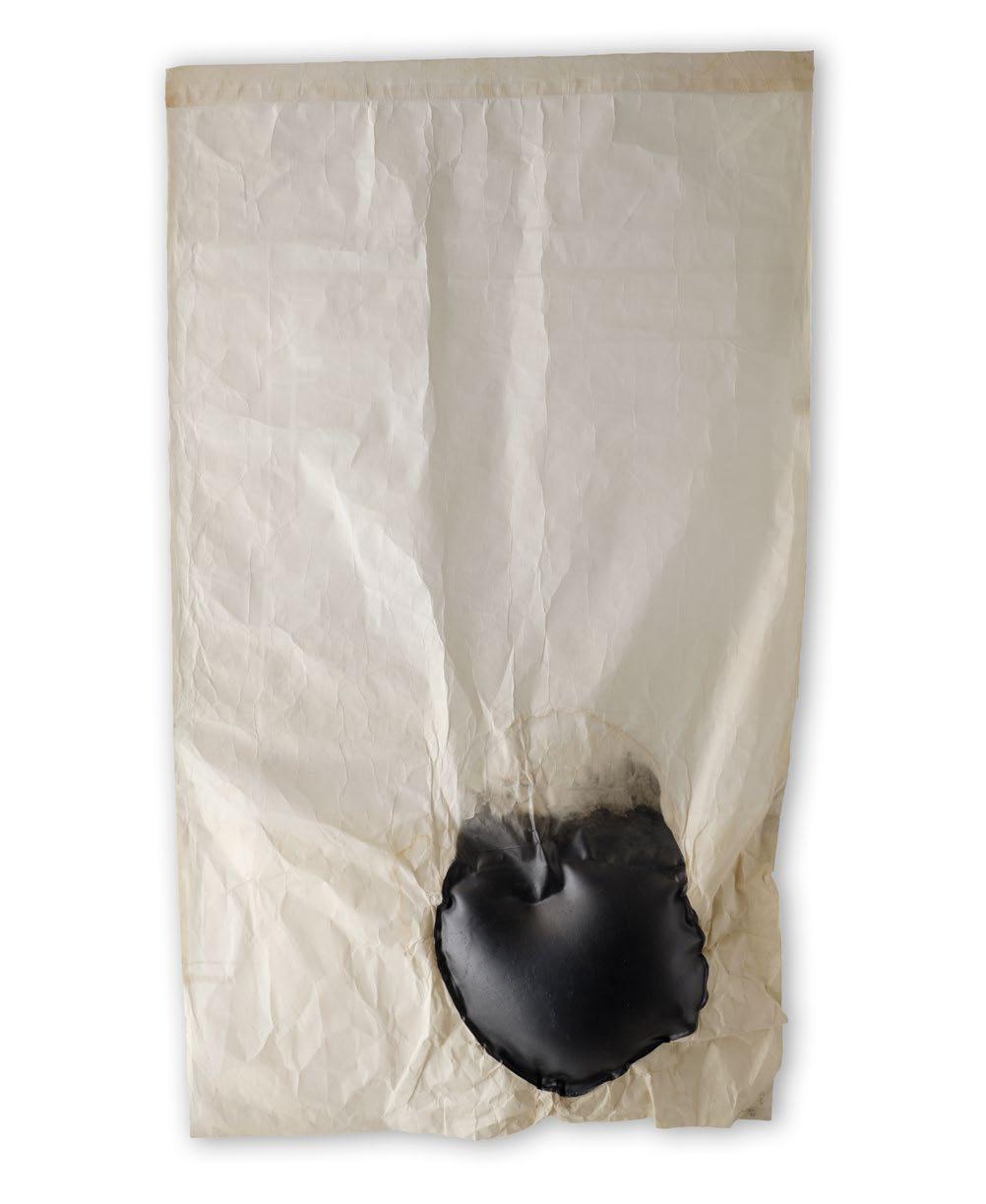
Lieve II - 1987
Gelatin silver print, 40 x 40 cm
Signed, titled, and dated lower left
Provenance:
Stefan de Jaeger Collection, Brussels
Literature:
Martin Germann, Dirk Lauwaert, Dirk Braeckman [exhibition catalog, M - Museum Leuven / De Appel Amsterdam], Roma Publications, Amsterdam, p.226 (ill.)
€ 2000 - 3000
A 110 x 110 cm print of "Lieve II" belongs to the collection of the Museum of Fine Arts in Houston (inv. 91.418)
 088 Dirk Braeckman (Belgian, 1958)
088 Dirk Braeckman (Belgian, 1958)
(Danish, 1916 - 1994 / 1907 - 1989)
Pair of "Clam" Chairs - 1944
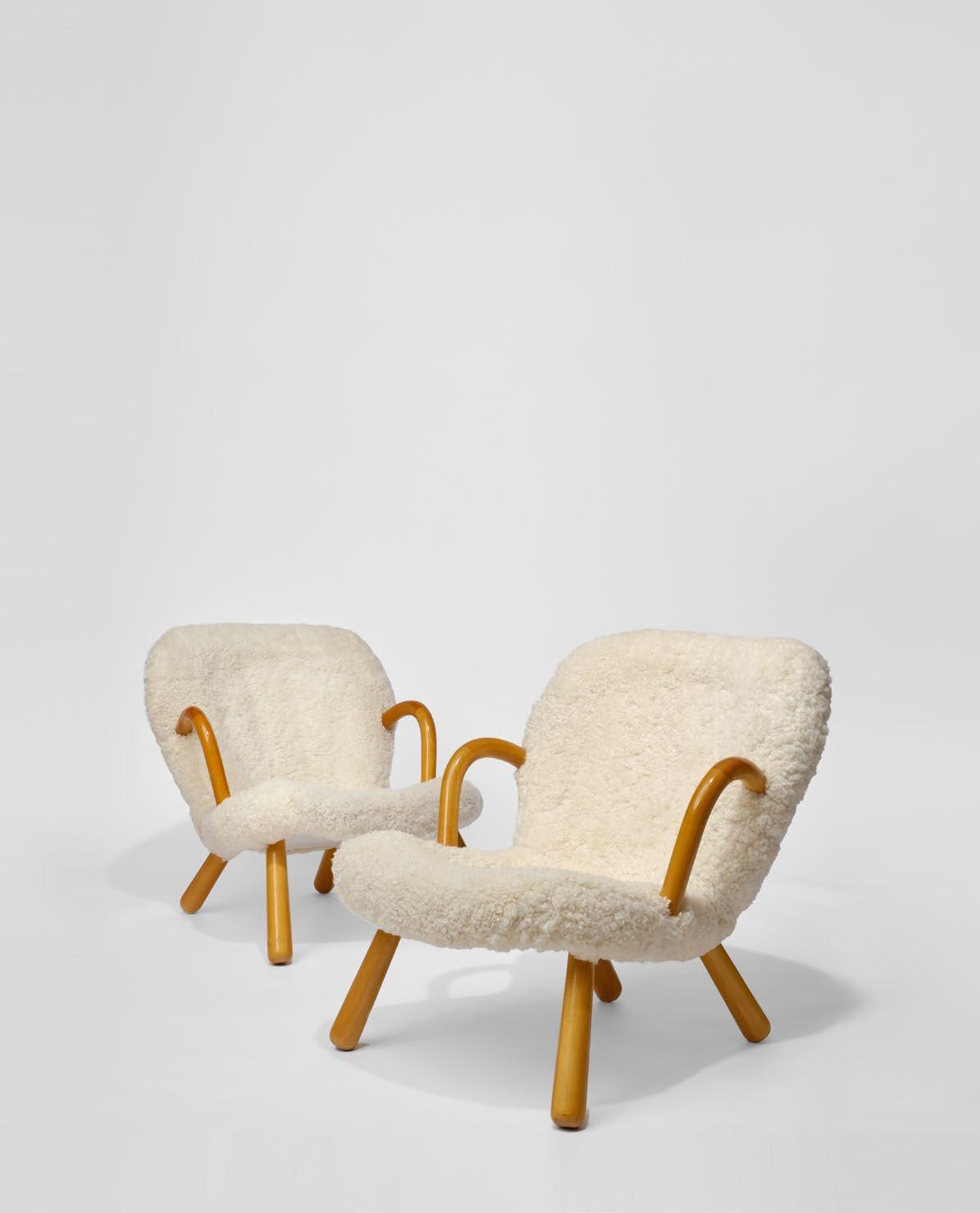
Wood and sheepskin upholstery, 90 x 70 x 85 cm
Manufactured by Madsen & Schubell, Denmark
Provenance:
Galerie Pierre Mahaux, Brussels
€ 10 000 - 15 000
The Clam Chair has a rather perplexing history and has been attributed to several designers before, the latest being the Danish architect Philip Artcander (1916 - 1994). However, recent research revealed that the "Clam" is the model that in fact started the story of Madsen & Schubell. Arnold Madsen designed the chair in 1944 in his small basement workshop in Gothersgade, Copenhagen.
This chair has a characteristic organic shape with soft curves, perched on club-shaped beech legs. The name comes from the shape of the seat and back that together form the silhouette of an open clam. The round armrests complement the overall round feel of the chair. The seat is slightly raised towards the front, while the back is tilted back to provide great sitting comfort. The seat and back are covered in cappuccino-colored sheepskin, adding to the soft and cozy feel of this "Clam" . Interestingly, Hans Schubell invented the special connecting piece of this chair, formed from only one piece of wood. The rest of the seat and backrest were glued to this single piece.
In 1944, the chair was already exhibited in conjunction with the presentation of the newly opened furniture store NY FORM A/S in Copenhagen, which sold the leading design of the day. In 1953, Madsen & Schubell sold the license for the chair to the Norwegian company Vik and Blindheim.
090 Suku
D.R. Congo, Kwango Region
Heavy wood, 71 cm
Provenance:
Robert Jacobsen, (1912 - 1993), Copenhagen
Jacques Ulmann (†1970), Paris
By descent
Michel Gaud, Saint-Tropez
Sotheby's, London, 29 November 1993, lot 120
Bernard Fraissine, Rodez
Olivier Castellano Art Tribal, Paris
Published:
Arts primitifs dans les ateliers d'artistes [exhibition catalog], Musée de l'Homme, Paris, 1967, cat.105 (ill.)

Exhibited: Paris, Musée de l'Homme, Arts primitifs dans les ateliers d'artistes, 27 April - 30 September 1967, cat.105 (ill.)
Nürnberg, Kunsthalle, Magie und Abstraktion. Primitive Kunst aus dem besitz moderner Künstler, 26 January - 10 March 1968, cat.50
€ 30 000 - 50 000
The representation of a hermaphroditic figure, hands resting on a belly swollen by pregnancy, is common among the Suku. The function of these statues may be linked to the fertility rites that accompany circumcision ceremonies.
The Danish sculptor Robert Jacobsen lived in Paris from 1947 to 1969, and between 1951 and 1959 he acquired the better part of his collection of African art. This Suku figure was included in the wonderful exhibition Arts primitifs dans les ateliers d'artistes at the Musée de l’Homme in Paris in 1967.


091 . Kristin McKirdy (Canadian, 1958)
Three Balls - 2009
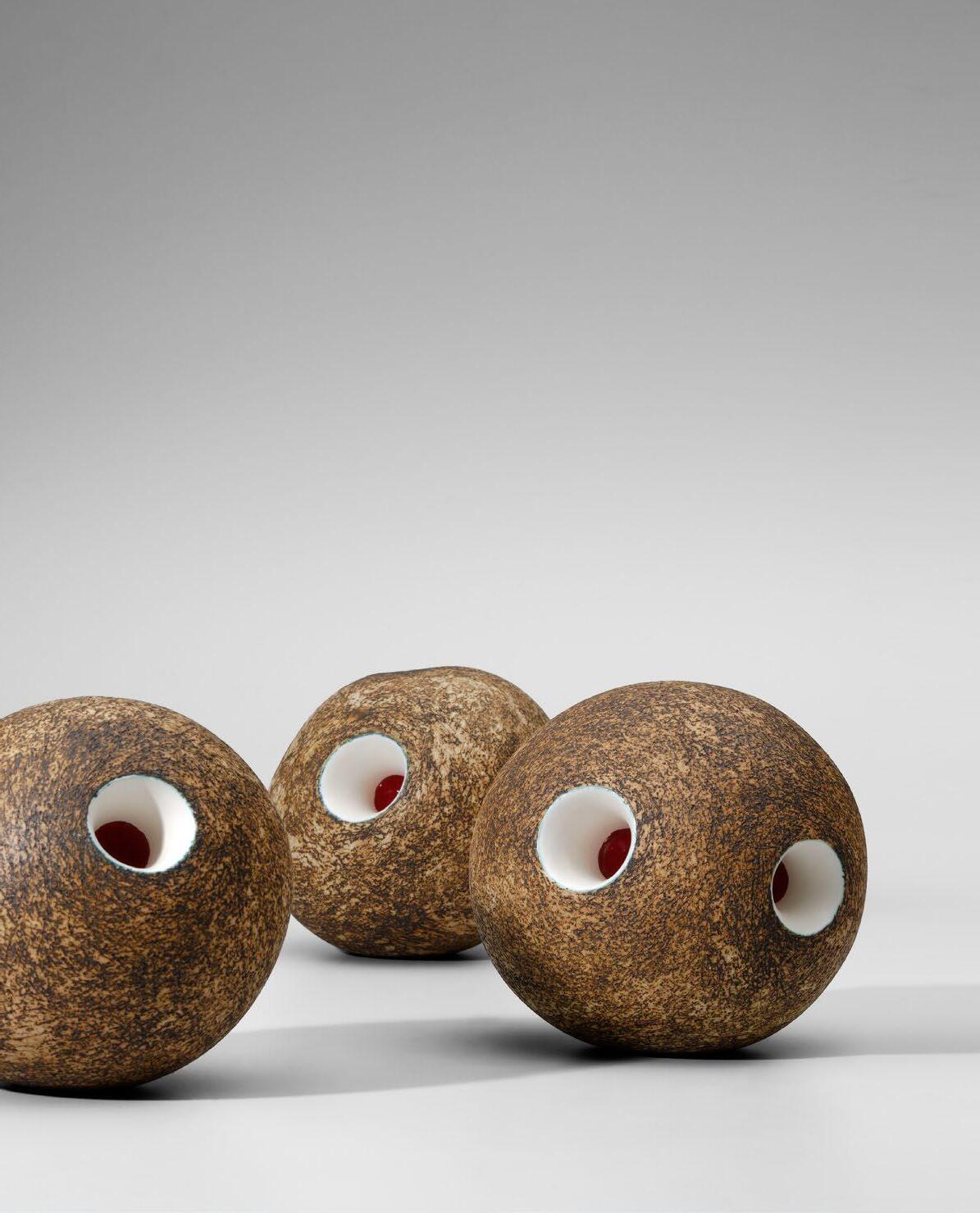
Glazed terracotta
Provenance: Pierre Marie Giraud, Brussels
€ 1500 - 2000
Topanga Canyon - 2002 from the series Eden Chromogenic print, 120 x 100 cm

Signed on verso
Ed. 2/10
Provenance: Box Galerie, Brussels
€ 2000 - 3000
092 Christophe Bourguedieu (French, 1961)093 Peter Halley
(American, 1953)
Red Prison - 2012
Acrylic on canvas, 81,5 x 81,5 cm
Signed and dated on verso
Provenance:
Boon Gallery, Knokke
€ 40 000 - 60 000
Certificate by the artist, dated 8 November 2018
Certificate by Klaus Steinmetz, Costa Rica, dated 2018
Halley's paintings explore both the physical and psychological structures of social space; he connects the tradition of geometric abstraction –influenced by artists such as Barnett Newman and Ellsworth Kelly – to the actualities of urban space and the digital landscape.
In 1980, Halley moved to New York and the city had a lasting influence on his distinct painting style. He was fascinated by the city's intensity, scale, and three-dimensional urban grid -the "geometricization of space that pervaded the 20th century."
These particular geometric icons, which he developed in the early 1980s became the basis of Halley's painting for the decades to come. Halley derived his language not just from the urban grid but from the gridded networks permeating all facets of the contemporary "media-controlled, post-industrial world."
In addition to urban structures, Halley drew influence from the pop themes and social issues associated with New Wave music. He took the modernist grid of previous abstract painting and amplified its colors and impact in accordance with the postmodern times. He employed new colors and materials with specific connotations such as fluorescent Day-Glo paint, which has an uncanny glow that recalls the artificial lights of postmodern society and the bright government-issued signs that mark streets and workers' clothing.
Halley also began to employ Roll-a-Tex, a textural additive that gives his "cells" and "prisons" a tactile, architectural quality, as Roll-a-Tex is most often used as surfacing in buildings such as suburban homes and motels. The postmodern, commodity-like color and texture, not to mention the thickness, of Halley's canvases entered them into the art-historical conversation surrounding painting and objecthood.
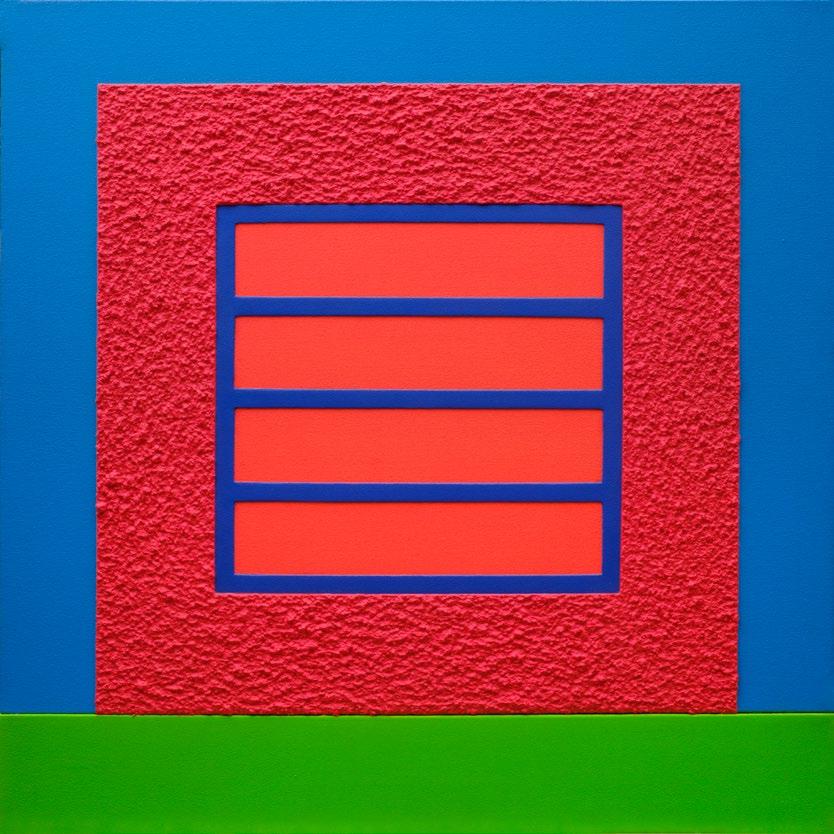
Koschlag - 2000
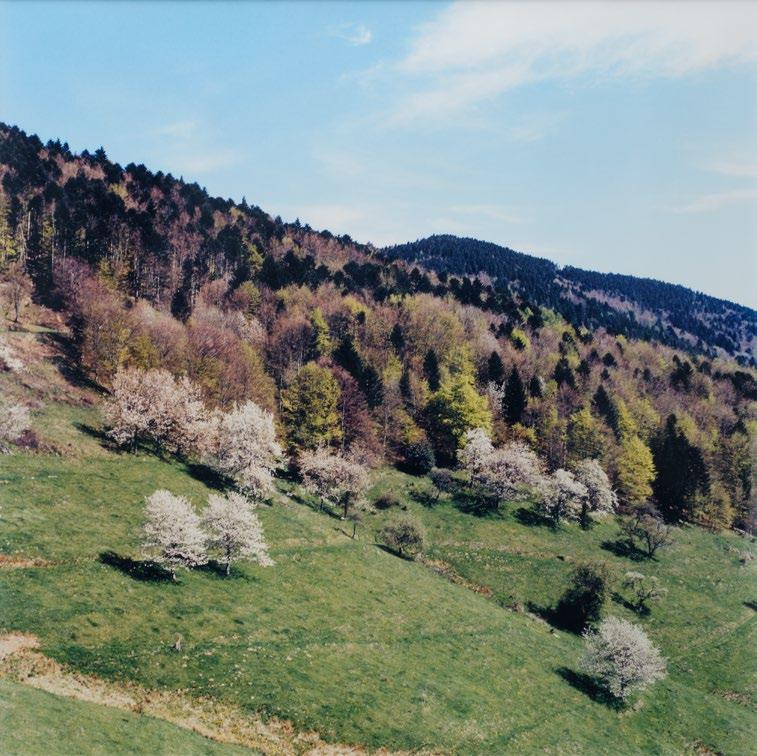
Photograph, 59,5 x 59,5 cm
Photographer's stamp on verso, inscribed in pencil
with title, number "1/6" and date
€ 1000 - 1500
094 Franck Christen (French, 1971)
Terracotta, 26 to 28 cm high
Provenance: Ad De Bruyn Antiques, The Netherlands
€ 4000 - 6000
With two thermoluminescence reports by Kotalla Laboratory, estimating these sculptures to be more or less 2000 years of age.
096 Nobuyoshi Araki
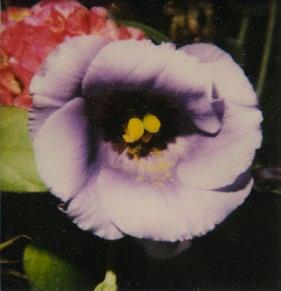

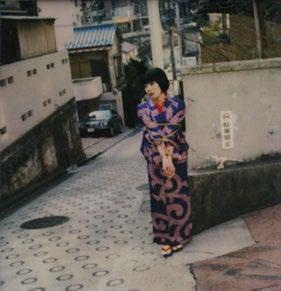
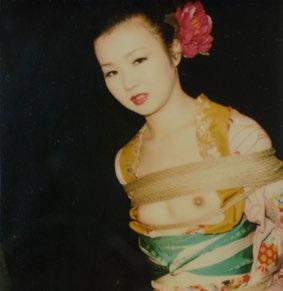


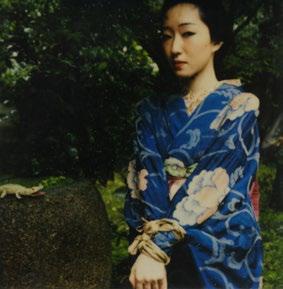
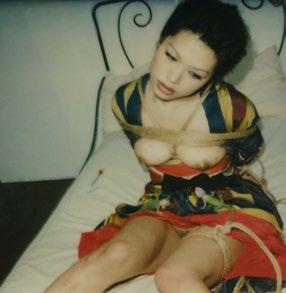

(Japanese, 1940)
Untitled - 2007
9 Polaroids, 11 x 9,5 cm (each)
Provenance: Galerie Kamel Mennour, Paris (label on versos)
€ 4000 - 6000

Painted wood and metal
107 x 76 x 50 cm
Provenance: Newel Gallery, New York
€ 2000 - 3000
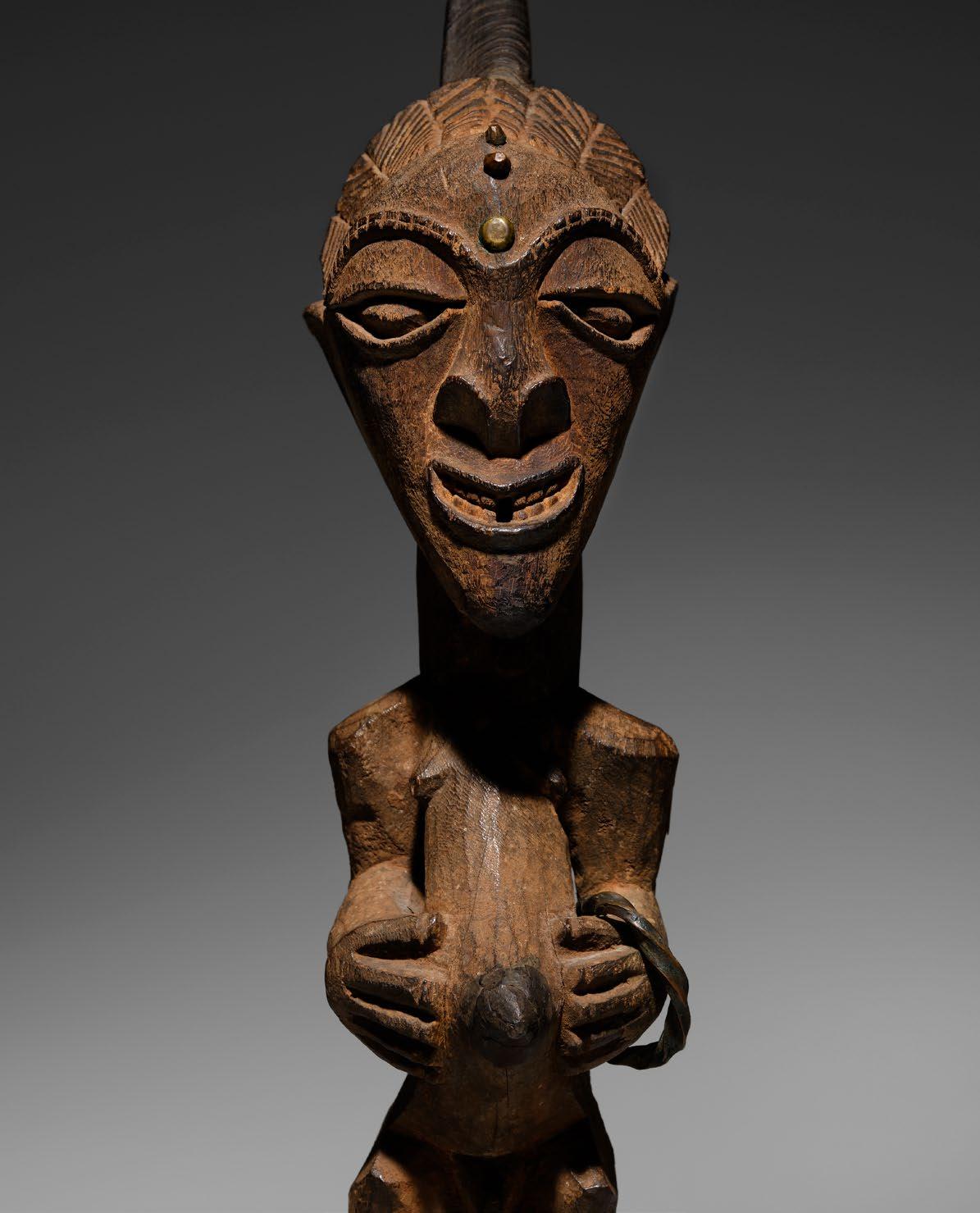
D.R. Congo
Wood, horn, and metal, 71 cm
Provenance:
Mr. and Mrs. Nathan Cummings, Chicago
Allen Frumkin, Allan Frumkin Gallery, New York
Sold to the Art Institute of Chicago, 1961 (inv.1961.912)
Christie's Paris, 19 June 2013, lot 71
Private Collection, Bordeaux
Published:
Robbins, W., African Art in American Collections, New York, 1966, p.215, cat.308
The Art of Black Africa, A Survey of African Sculpture from collections in the Midwest, The Flint Institute of Arts, 8 February - 5 April 1970, cat.134
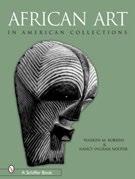
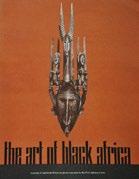

€ 40 000 - 60 000
Mankishi (plural of Nkisi) should be regarded as containers for holding potent medicines, which when activated protect families, individuals, or communities from various ills. As vehicles for controlling life forces, these power figures are perhaps the most important objects among the Songye. The emphasis on the abdomen in these figures has been suggested to indicate their importance in aiding fertility.
Mankishi were always the fruit of a close collaboration between a sculptor and nganga or healer, the latter imbuing the effigy with magical charges and power. The distinct features of this Nkisi, with its inverted pear-shaped head, crescent-shaped open eyelids, and especially the mouth with bared teeth allow us to situate the sculpture presented here as belonging to what François Neyt described in his authoritative study on Songye sculpture (Mercatorfonds, Antwerp, 2004) as the Second Western Tradition that can be found in the region of the northern Milembwe, the Belande, and the Eki.
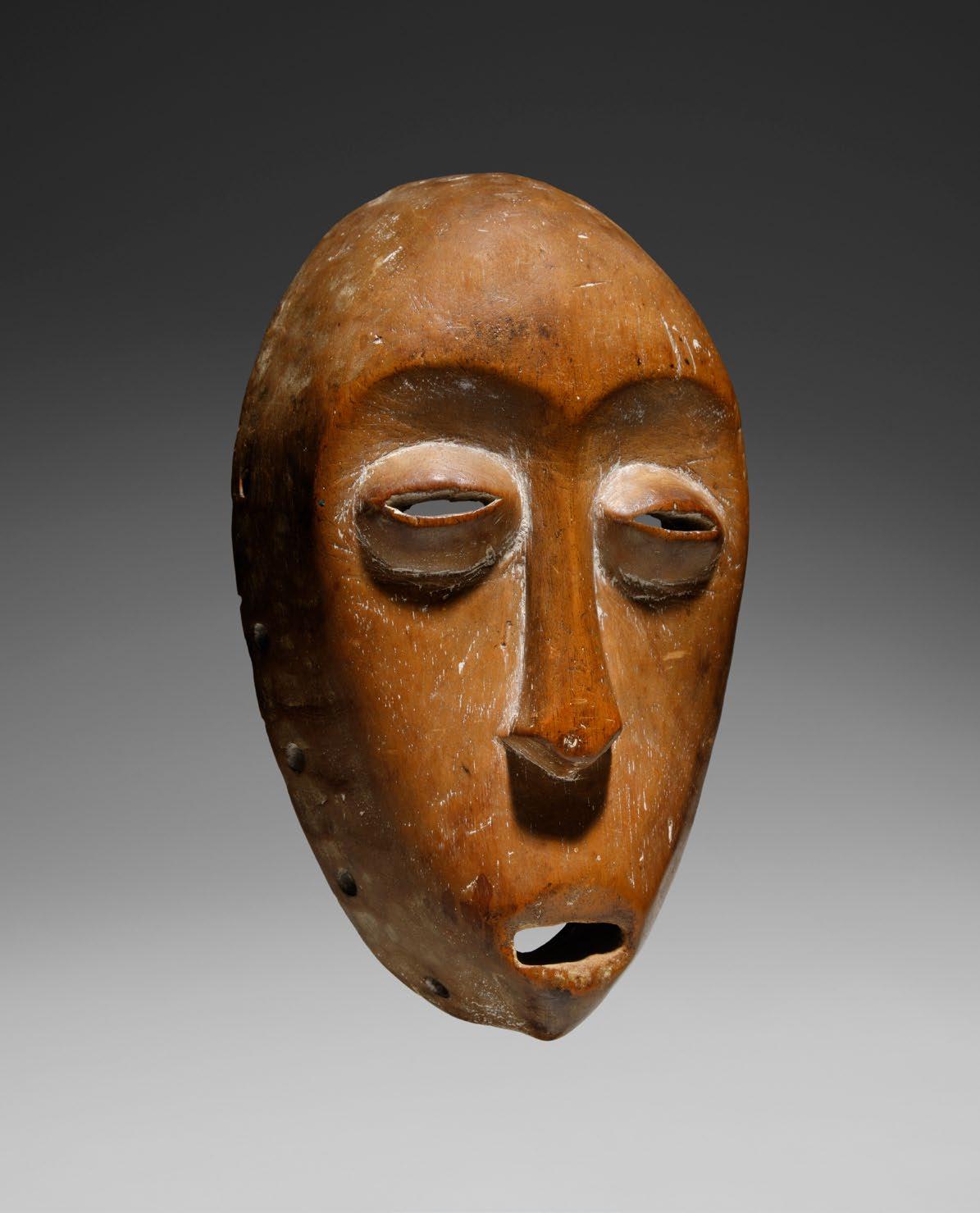
099 Lega Mask
D.R. Congo Wood, 22,5 cm
Provenance: Wilhelm Krohn, Eckernförde Max and Berthe Kofler-Erni Collection, Basel Sotheby's, Paris, Arts d'Afrique et d'Océanie, 5 December 2007, lot 71 Didier Claes, Brussels
Published:
René S. Wassing, African Art. Its Background and Traditions, L. Amiel Publisher, 1968, p.235, cat.13 (ill.)
René S. Wassing, L'Art de l'Afrique Noire, Office du Livre, Fribourg, 1969, p.243, cat.13 (ill.)
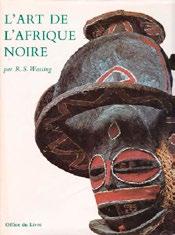
Elsy Leuzinger, Die Kunst von Schwarz-Afrika [exhibition catalog], Verlag Aurel Bongers, Recklinghausen, 1970, cat. X 9 (ill.)

Elsy Leuzinger, The Art of Black Africa, Studio Vista Publishers, London, 1972, p.345, fig. X9
Exhibited:
Kunsthaus Zürich, Die Kunst von Schwarz-Afrika, 31 October 1970 - 17 January 1971, p.328, cat. X 9 (ill.)
€ 20 000 - 30 000
Wooden mask that played its role during the final stages of the initiation rites by the Bwami. Its type is known under the name lukwakongo and belonged to members of the highest level of the superior rank, just before the supreme rank. The presence of kaolin in the crevices of the mask is directly linked to the use of these objects, which are coated with a new layer of kaolin at each new initiation rite and then wiped off.
These masks were also used to illustrate sung aphorisms that dealt with the moral code of the Bwami. Each mask expresses one (or several) type(s) of character or value, through certain formal traits pointed out by the initiate.
Despite their apparent simplicity and the great economy of means employed by the sculptors, Lega objects evoke a rich and complex symbolism secretly transmitted through them from one generation of initiates to the next.
€ 800 - 1200
 100 . Untitled Sculpture
Italy, circa 1960
Glazed ceramic, 38 cm
Marked underneath "S"
100 . Untitled Sculpture
Italy, circa 1960
Glazed ceramic, 38 cm
Marked underneath "S"
Dayak Figure - 1996
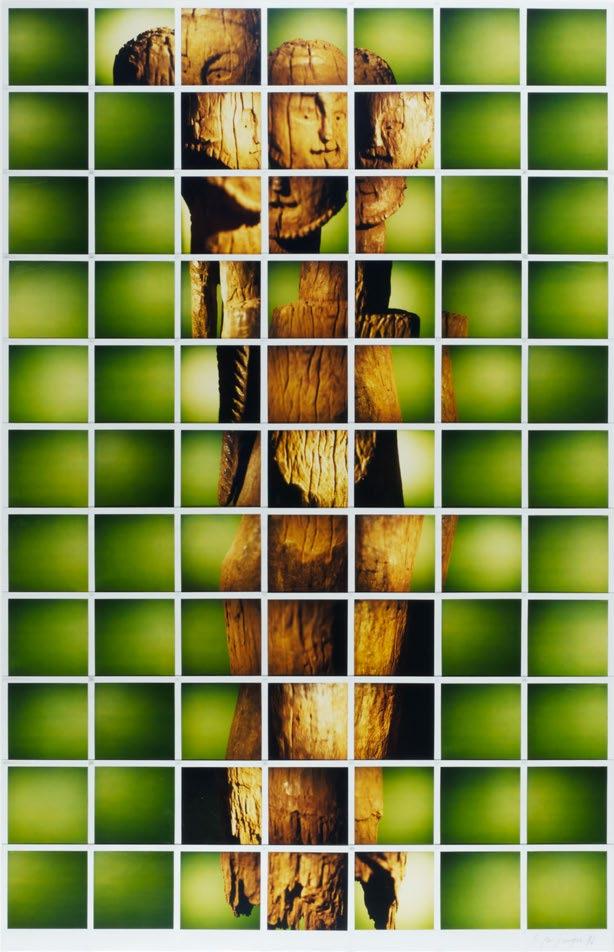
77 Polaroids
96 x 58,5 cm
Signed and dated lower right
€ 1500 - 2000
101 . Stefan de Jaeger (Belgian, 1957)Relief - 1995
Wood, 63 x 63 x 11 cm

Signed and dated, with dimensions, on verso
€ 2000 - 3000
102 Joao Carlos Galvao (Brazilian, 1941)(Finnish, 1914 - 1999)
8 Domus Chairs - 1946 Wood, 58 × 54 × 79 cm
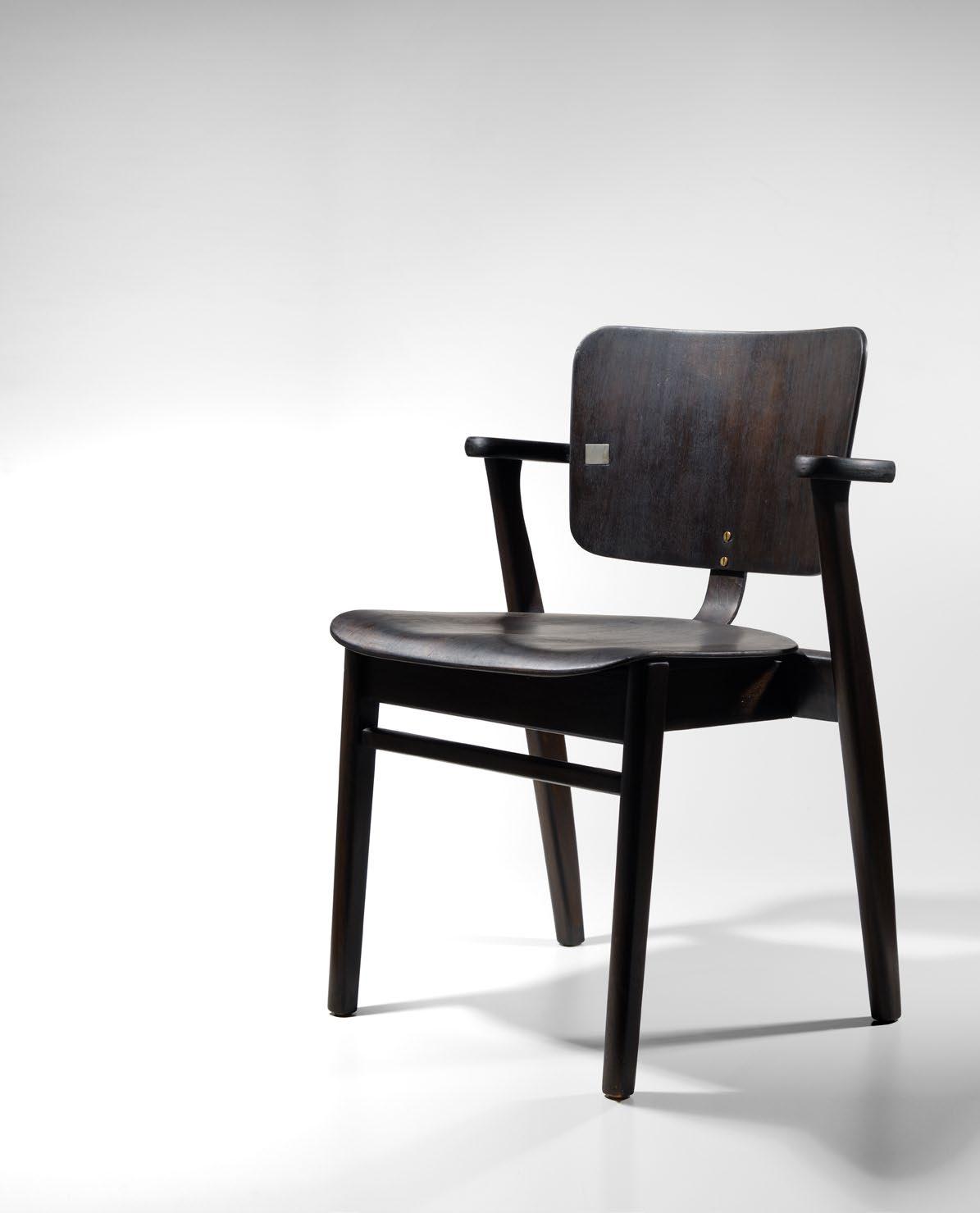
€ 2000 - 3000
The Domus Chair was designed in 1946 by Ilmari Tapiovaara as part of a series of furniture for the Domus Academica student housing complex in Helsinki. Comfortable enough to allow sitting for long periods of time, the Domus Chair achieved great success internationally, becoming known as "The Finn Chair." The characteristic short arms mean that the Domus Chair can be pulled close to a table, perfect for studying at a desk and dining, while offering the necessary support and comfort.
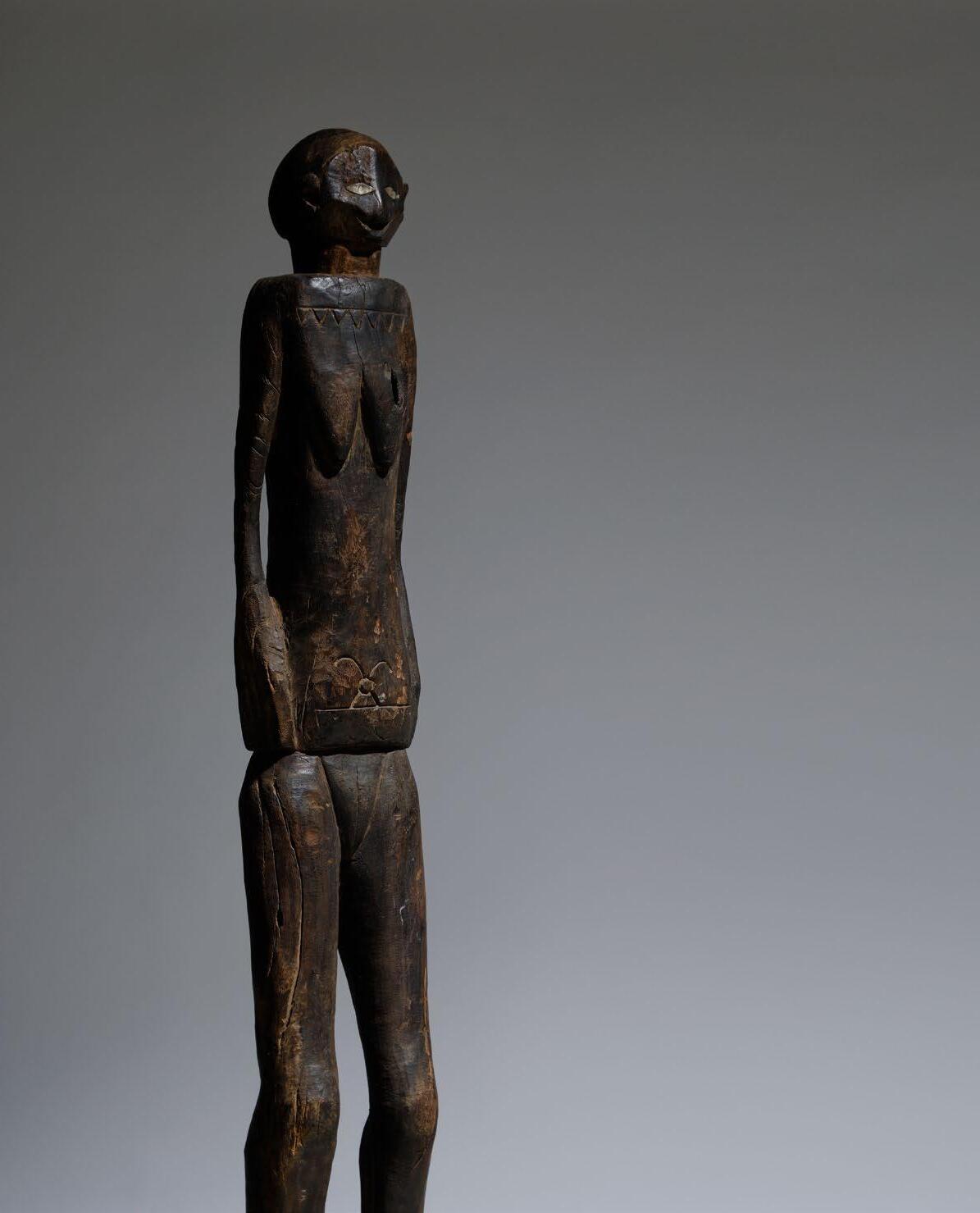
Sudan
Wood and metal, 169 cm
Provenance:
David Henrion collection, Brussels
Private collection, Brussels
Didier Claes, Brussels
Published:
Paul Matharan e.a., Arts d'Afrique. Voir l'Invisible, Editions Hazan, Paris, 2011, p.136, cat.149 (ill.)
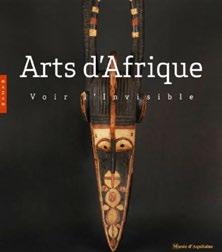
Exhibited:
Bordeaux, Musée d'Aquitaine, Arts d'Afrique. Voir l'Invisible, 22 March - 21 August 2011, cat.149
€ 10 000 - 15 000
The Dinka live in southeastern Sudan in the Bahr al-Ghazal region, where they form a major ethnic group.
This large female statue retains the shape of the wooden trunk from which it was carved, sharing its typology with the sculpted posts that can be found throughout this whole sub-region.
The face is beautifully stylized and naturalistic, with diamond-shaped, metallic eyes, a half-open mouth, and delicately sculpted ears. The cylindrical torso is engraved with geometric motifs, and the legs are oversized and very characteristic of the style.
These sculptures are essentially funerary monuments erected in front of a carved stone mound after the death of an important figure.
Full Moon Jar
Korea, early 20th c. Porcelain, 39 cm
Provenance:
Didier Delville Oriental Art, Brussels (acquired in Fukuoka, Japan)
€ 1000 - 1500
This traditional type of jar is named after its round shape and white color: "dal hangari" literally meaning "moon jar" . The particularity of this type of vase – besides the coloration that imitates the color of the moon - is that the base is smaller than the mouth, creating an illusion that it is almost floating in the air. It was mainly used for storage of rice, soy sauce, or alcohol.

(Belgian, 1961 - 1999)
Untitled - 1991
Oil on canvas, 190 x 175 cm
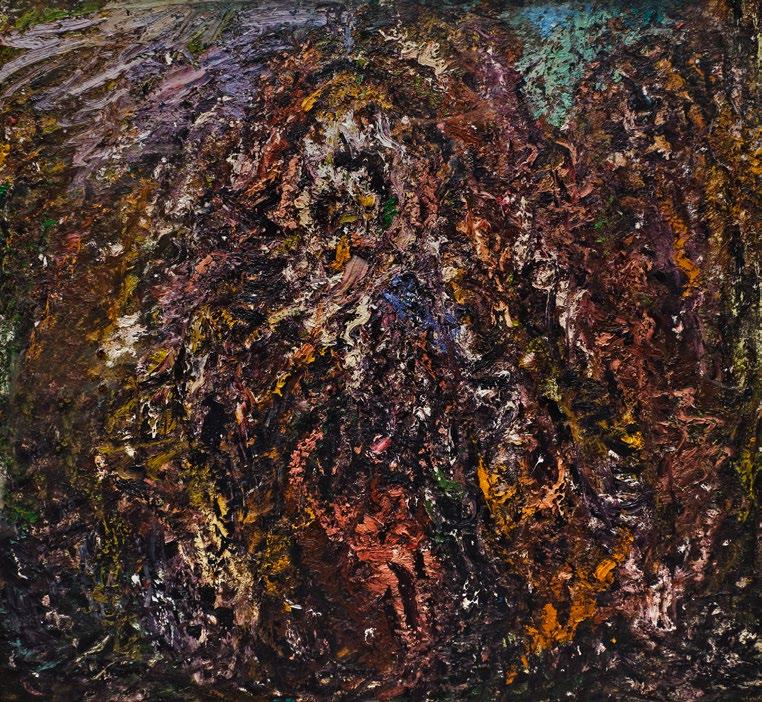
Initialed and dated on verso
Provenance:
Collection Levy, Brussels
Published:
Pierre Sterckx, Laurent Busine, Michel Frère: Peintures [exhibition catalog], Palais des Beaux-Arts, Charleroi, 1995, p.62, cat.15
Exhibited:
Charleroi, Palais des Beaux-Arts, Michel Frère: Peintures, 4 February - 26 March 1995, cat.15 (label on verso)
€ 20 000 - 30 000
106 . Michel FrèreLarus Argentatus? - 2001
C-print
35,5 x 40,5 cm (mount window)
51 x 57 cm (framed)

Ed.: 1/20
Titled, numbered and signed on verso
Provenance:
Galerie Nordenhake, Berlin
€ 1000 - 1500
107 . Esko Männikkö (Finnish, 1959)€ 3000 - 5000

€ 1000
1500
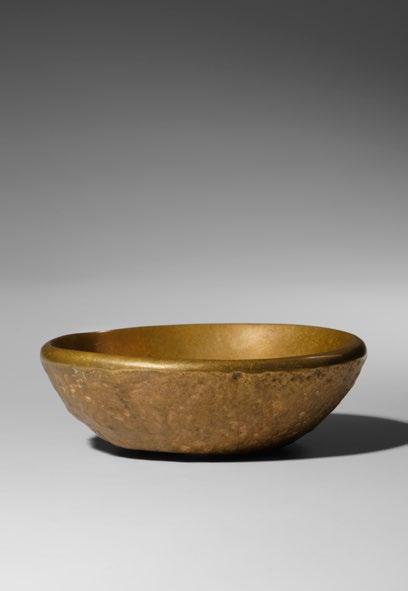 108 Sergio Rodrigues (Brazilian, 1927 - 2014)
Large "Eleh" bench - 1965 Wood and brass, 42 x 210 x 72 cm
109 Ado Chale (Belgian, 1928)
Pin-Tray (vide-poche) Brass, 15 cm Signature engraved alongside the inner rim
-
108 Sergio Rodrigues (Brazilian, 1927 - 2014)
Large "Eleh" bench - 1965 Wood and brass, 42 x 210 x 72 cm
109 Ado Chale (Belgian, 1928)
Pin-Tray (vide-poche) Brass, 15 cm Signature engraved alongside the inner rim
-
Papoua New Guinea
East Sepik Province; middle Sepik River
Iatmul or Sawos People
Granite, 106 cm; 115 cm incl. base
Provenance:
Odette and René Delenne Collection, Brussels (1950's)
Jolika collection of John and Marcia Friede, Rye / San Francisco / New York
Published:
John and Marcia Friede, New Guinea Art. Masterpieces of the Jolika Collection of Marcia and John Friede, Fine Arts Museum of San Francisco/ 5 Continents Editions, San Francisco, 2005, p.85, cat.9 (ill.)
Very few carved monoliths from the Sepik region are known, and it is generally accepted that they hail from the Lake Chambri-Korosameri River area.
As described in "Stones in Swamps: remains of a mythical past in the Sepik Area" by Markus Schindlbeck (1), very little published information exists on the stone monoliths that can be found in the Sepik region.

In his article, he mentions Adolf Roesicke (1881-1919) who was the first European to visit the mountains or villages of Chambri and Aibom. In the village of Angerman Roesicke photographed a monolith with a face on it in 1913. In reply to his question, he was told that it had not been made by any man from Angerman, that it had not been carved with an axe but created by sagi, the ancestors.
According to Deborah Gewertz (2) who did fieldwork in the Sepik region during the 1970s and onwards, the Chambri operated six quarries. These were inhabited by particular ancestors and supervised by one of the respective ancestor’s descendants. Each Chambri man had access to the stone resources. The Chambri were thus agents in this distribution of stones. There are more than 125 stones on Chambri Island. They are considered dwelling places of ancestral spirits and bear names. Further, according to Gewertz (pp. 185-186), they served to mark the burial places of a clan’s headhunting victims and are repositories of the respective clan’s strength. Sometimes they are ceremonially decorated to vindicate the stones’ potency.
(1) Markus Schindlbeck, "Stones in swamps: remains of a mythical past in the Sepik area", in Journal de la Société des Océanistes, 146 | 2018, 213-225.
(2) Deborah Gewertz, Sepik river societies. A historical ethnography of the Chambri and their neighbors, Yale University Press, New Haven, London, 1983
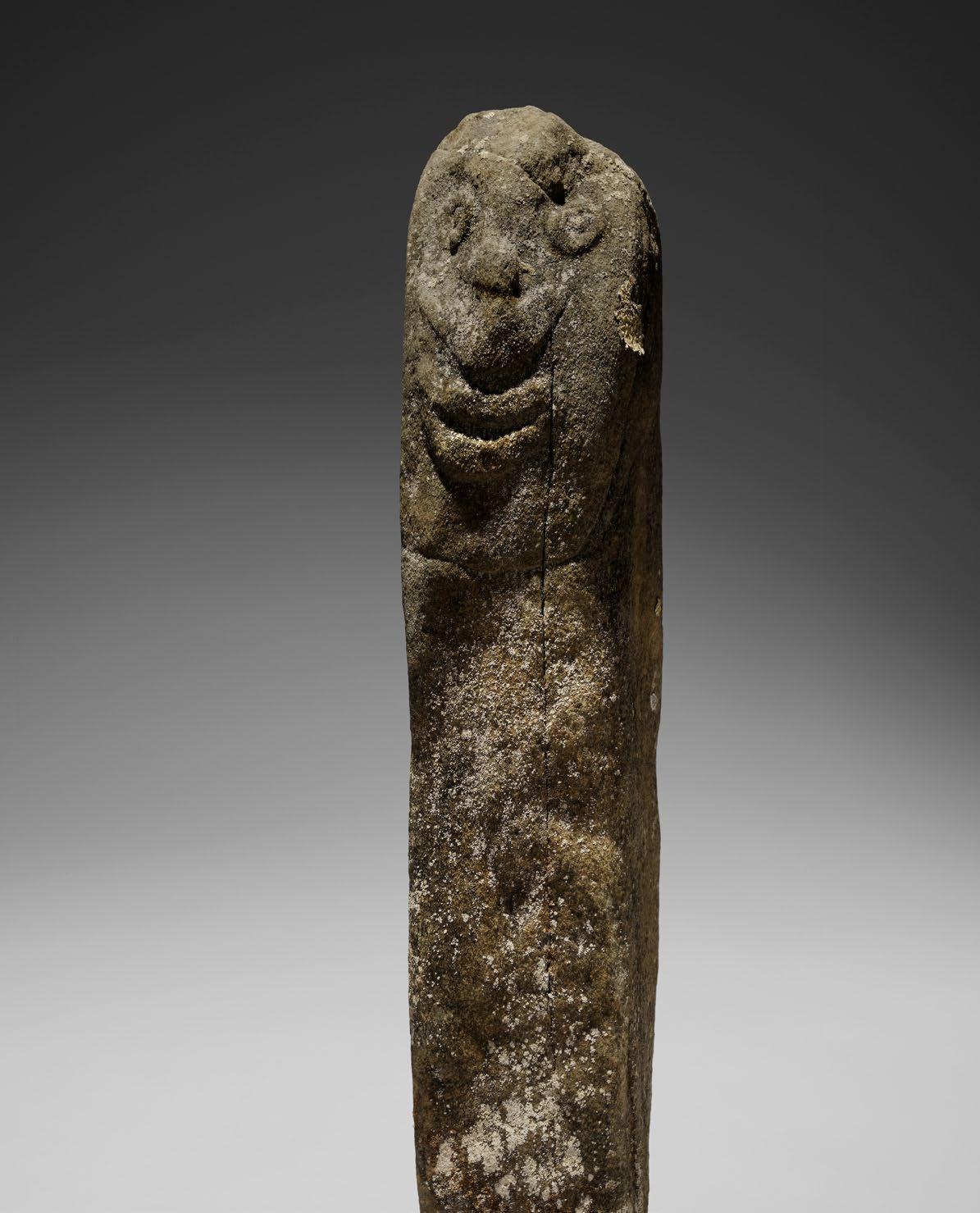
Sulawesi, Indonesia Wood, pigment and beads, 25 cm

€ 1500 - 2000
Tall Vase - 1960s
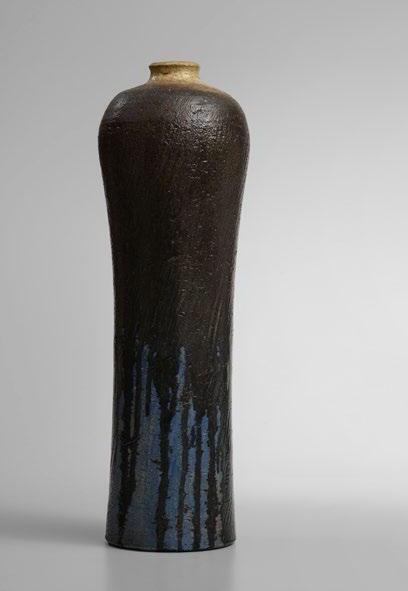
Glazed ceramic, 59 cm
Numbered, signed and inscribed "ITALY" underneath
€ 800 - 1000
112 Marcello Fantoni (Italian, 1915 - 2011) 111 . Toraja HeadUntitled - 2006 (ZS1)
C-Print and light box, 120 x 80 cm
Provenance:
Galerie Kamel Mennour, Paris
€ 2000 - 3000
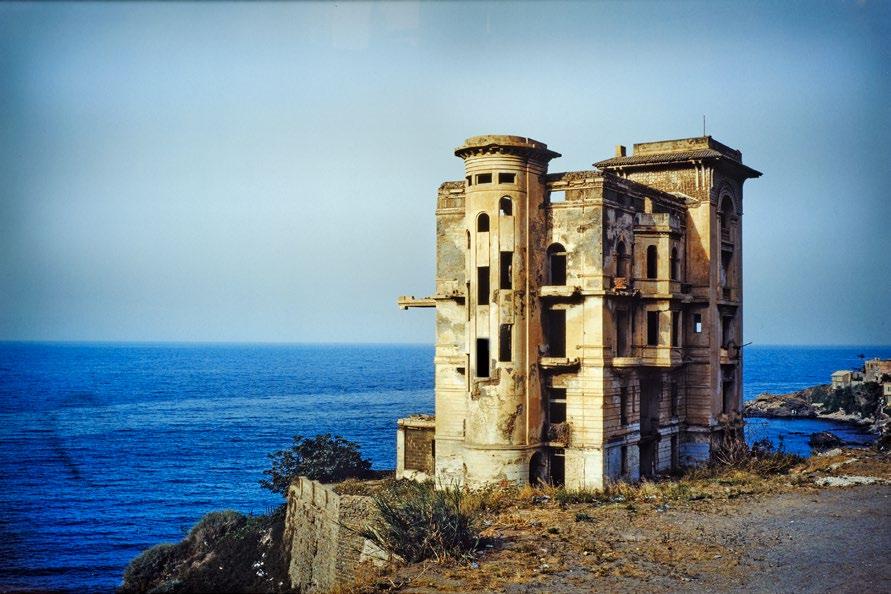 113 Zineb Sedira (Franco-Algerian, 1963)
113 Zineb Sedira (Franco-Algerian, 1963)
114
Papua New Guinea Polychromed wood, 62 cm
Provenance: Marcia and John A. Friede - Jolika Collection, Rye / San Francisco / New York Marc Assayag, Montreal
€ 2000 - 3000
Sculpture of a cassowary bird. This peculiar bird is related to the ostrich and emu and is easily recognizable by its "casque" , a hornlike protuberance on top of its head. In Abelam culture, the cassowary took a central place. It was the mythical cassowary from which came all food: it brought all the yam varieties, a staple in Abelam cuisine.

115
Nagaland, India
Fur, shells, feathers, and vegetal fibers 44 x 60 cm (Display box: 85,5 x 91 x 12,7 cm)

Provenance: Renaud Riley Gallery, Brussels
€ 1000 - 1500
Untitled - 2019
Acrylic, oil stick, and stitched canvas on canvas
178 x 178 cm

Signed and dated on verso
Provenance: Acquired directly from the artist
€ 6000 - 8000
116 Taylor Anton White (American, 1978)117
Cranach Series - 2008
Chromogenic print mounted on aluminum 205 x 78 cm
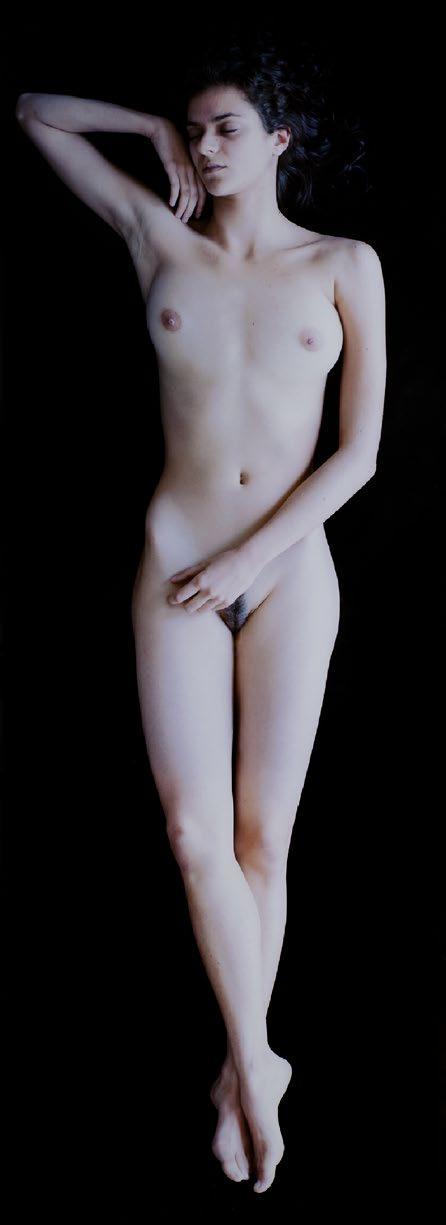
Provenance:
Box Galerie, Brussels
Literature:
Rudi Ekkart, Carla van de Puttelaar: Brushed by Light [exhibition catalog], Luxembourg, Musée national d'histoire et d'art, 20 March 2020 - 30 August 2020, p.61 (ill.)
€ 3000 - 5000
Vase - 1960s
Glazed ceramic, 41 cm
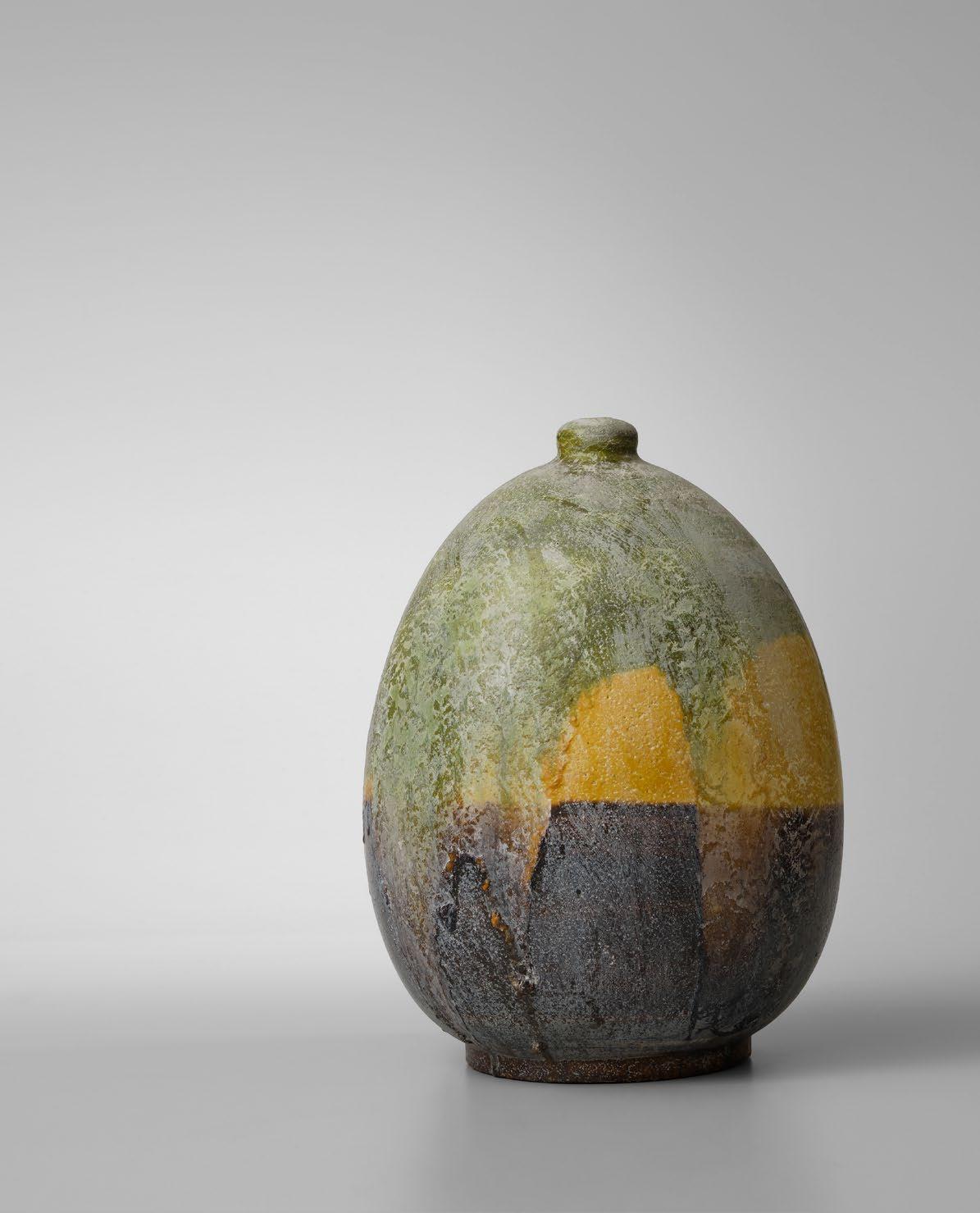
Signed, numbered and inscribed "ITALY" underneath
€ 600 - 800
Taking part in auctions constitutes unconditional acceptance of these Conditions of Sale. 1. Auctions and state of the objects
a) The objects at auction are put up for auction by Native on behalf and in the name of the person who has deposited them ("Vendor").
Adjudication is made in favor of the highest bidder in Euros acknowledged by Native at the time of the auction ("Buyer") and the Sales Contract between the depositor and the Buyer is concluded by this adjudication.
The object being sold is released to the Buyer only against payment in cash or bank transfer. To be accepted as a means of payment, cheques must be cleared by the bank on which they are drawn before the object auctioned can be released.
b) Objects are put in the auction in the state in which they are found at the time of the auction. Subject to point 1c. below, any guarantee for material damage or legal damages is excluded.
The objects are on display during the event. The descriptions shown in catalogs, advertisements, brochures or any other article or document issued by Native are given purely by way of illustration. They in no way commit the liability of Native. Consequently, Native guarantees neither the accuracy of the explanatory notes contained in the catalog, nor the origin, date, age, cultural background or provenance of the objects put up for auction. It is the depositor who is solely liable for the explanatory notes in the catalog. Native agrees to reproduce them in the catalog only in its capacity as an agent for the depositor.
c) Native freely states that it is prepared to cancel the auction on behalf of the depositor and refund only the hammer price, commission and VAT if an object sold should prove, within 1 year from the date of the auction, to be a modern intentional fake. By modern intentional fake is to be understood a reproduction which it can be proved has been made with the intention of deceiving others whether in respect of origin, date, age, cultural background or source, without this having been shown in the catalog.
The condition for this refund is that the Buyer sends an immediate claim by registered letter to Native as soon as the defect has come to light and at the latest by 1 year from the date of the auction and that he immediately return the fake object in the same state as on the day of the auction and exempt of any third-party claim. The Buyer must provide proof that the object auctioned is a fake compared with the description in the catalog and that the object is identical to the item auctioned. Any other claim by the Buyer is excluded.
d) Buyers must, at their own expense, come and collect the objects auctioned within 10 working days from the end of the auction during opening times at Native, namely from Monday to Friday 10:00 to 16:30. If sufficient time is available, objects will be released after each session. In accordance with point 1, handover will be against payment in cash for lots up to € 2 999.
During the abovementioned period, Native is liable for the loss, theft, damage or destruction of the objects auctioned and paid for, although only up to the amount of the price of the auction, commission and VAT. On the expiry of this period, Native’s liability ceases. If the objects auctioned are not withdrawn within 10 working days, they will be stored at the expense and risk of the Buyer.
e) Each Buyer is personally responsible for the item awarded to him at auction. Proof of powers of attorney may be required from persons acting as third-party representatives or as an organ of a corporate body. The representative is jointly and severally liable to the person represented for meeting all commitments.
2. Hammer price, premium, risk transfer, ownership transfer, payment, invoicing, VAT, importing and exporting
a) In addition to the hammer price, the Buyer owes a supplement ("premium") on the hammer price. Premium is 25% of the hammer price. In case of bidding through an internet platform, an extra premium will be added by those. Premium for drouot.com is 1,5% on the hammer price, for liveauctioneers.com 5%.
The Buyer must also pay Belgian VAT (21%) calculated only on the premium.
For lots where the Vendor is a non-resident of the EU (lots indicated by ‡), the Buyer will pay an import tax of 6% in addition to the bid price plus legal costs. The amount of this tax will be reimbursed on presentation of proof of export outside the E.U.
b) Ownership of the object auctioned passes to the Buyer once the hammer has come down finally. Until full payment of the hammer price, premium and VAT, Native reserves a right of retention and lien on all objects in its keeping. The release of the auctioned object to the Buyer is not made until after full payment of the hammer price, premium and VAT.
c) An auctioned object must be paid for within 7 days after the auction. If the Buyer
remains in default on payment 30 days after the auction, any sum due at that time will, as of right and without any formal notification being necessary, be subject to interest on arrears of 10% per annum. Moreover, in the event of non-payment by the final deadline, any sum due will be increased as of right by a flat-rate indemnity of 15%, without prejudice to Native’s right to seek full reparation of the damage suffered. In addition, if the payment due by the Buyer does not take place or is not made in time, Native can, as it chooses and in the name of the depositor, either continue to demand that the sales contract be executed or, without being bound to set a fixed time, waive the right to require execution of the sales contract and claim damages for nonexecution or even renounce the contract. The Buyer is liable in respect of Native and the depositor for all damages resulting from non-payment or late payment.
d) According to the law of 30 June 1994 on authors’ rights, the Buyer shall pay in addition to the hammer price an Artist Resale Right (droit de suite) of 4% on the part of the hammer price from 0 € to 50,000 €, of 3% on the part of the hammer price from 50,001 € to 200,000 €, of 1% on the part of the hammer price from 200,001 € to 350,000 €, of 0.5% on the part of the hammer price form 350,001 € to 500,000 € and of 0.25% for the last part of the hammer price above 500,001 €. The resale right ceases when the artist has been deceased for more than 70 years.
e) The exporting of any object from Belgium and the importing into a third country may be subject to particular authorisations. The Buyer is responsible for obtaining all necessary export or import licenses. Refusal of these authorisations or any delays after they have been obtained will in no case be grounds for a cancellation of the sale or a delay in payment.
3. Registration and attendance at the Sale
a) The submission of a bid or an absentee bid unconditionally and irrevocably binds the bidder. The bidder remains bound to his offer until this becomes the subject of a higher bid or is rejected by Native. Double bids become the subject of an immediate new call to bid; in cases where there is doubt, the senior auctioneer decides the matter by drawing lots.
b) Bidders who are not personally known to Native are bound to give legitimate proof of identity before the beginning of the auction. Native reserves the right to request proof of the bidder’s solvency. If this latter document is not available, Native is authorised to demand the immediate payment of a cash deposit equal to 10% of the auction price or the lodging of a guarantee. If this deposit is not paid or guarantee lodged, Native is authorised on behalf of the depositor to cancel the auction.
c) Native is free to reject a bid without giving reasons. Similarly, it is within its rights to hold an auction without selling or withdraw objects from the auction. Native reserves the right to refuse any person access to its commercial premises or forbid any person from taking part in one of its auctions.
d) Bids from interested parties who do not wish to attend the auction personally will be taken into consideration if they communicate such a wish in writing 24 hours before the start of the auction.
Interested persons can bid by telephone if they have not announced their wishes in writing at least 24 hours before the start of the auction. Native accepts bids by telephone for lots whose lowest estimate reaches at least € 1,000.
Native disclaims all responsibility for offers that have not been taken into account as well as for bids made by telephone which may not have been taken into account.
The rules set down in point 3b with respect to providing proof of identity and solvency also apply to persons bidding by telephone or in writing. For bidders who place their offer via the Internet, in other words an absentee bid, point 3b applies only in respect of solvency.
Native cannot be held responsible in the event of dysfunction of the platforms used to bid online. The user must read and accept, without reservation, the conditions of use of this platform.
4. Miscellaneous
The auction is held under the joint authority of a huissier de justice (Court bailiff). Any liability on the part of Native arising from acts attributable to the huissier involved is excluded.
b) The foregoing stipulations are an integral part of each individual sales contract concluded at sales by auction. Amendments to them are in no way binding unless Native has given its agreement to them in writing.
c) Any dispute on the validity, interpretation and execution of these Conditions of Sale and any dispute on the conducting of the auctions will be subject to Belgian law, with the exception of (a) the stipulations of the Vienna Convention on international sales contracts and (b) the rules of referral to Belgian international private law.
d) Only the courts and tribunals of Brussels are competent to rule on any disputes.
La participation aux enchères emporte l’acceptation inconditionnelle aux présentes conditions de vente.
1. Enchères et état des objets
a) Les objets d’enchères sont mis aux enchères par Native pour le compte et au nom de celui qui les a déposés ("vendeur").
L’adjudication a lieu au plus offrant en Euros reconnu par Native lors de la vente aux enchères ("Acheteur") ; le contrat de vente entre le déposant et l’Acheteur est conclu par cette adjudication.
L’objet de la vente n’est remis à l’Acheteur que contre un paiement en espèces ou transfert bancaire. Pour être admis comme moyens de paiement, les chèques doivent être confirmés par la banque tirée avant la délivrance de l’objet adjugé.
b) Les objets sont mis aux enchères dans l’état dans lequel ils se trouvent au moment de l’adjudication. Sous réserve du point 1c. ci-dessous, toute garantie pour dommages matériels ou juridiques est exclue.
Les objets sont visibles pendant l’exposition. Les descriptions figurant dans les catalogues, annonces, brochures ou tout autre écrit émanant de Native ne sont données qu’à titre purement indicatif. Elles n’engagent en aucun cas la responsabilité de Native. Par conséquent, cette dernière ne garantit ni l’exactitude des notices explicatives reprises dans le catalogue, ni l’origine, la date, l’âge, le cercle de culture ni la provenance des objets mis aux enchères. Les notices explicatives reprises dans le catalogue relèvent de la seule responsabilité du déposant. Native n’accepte de les reproduire dans le catalogue qu’en tant qu’intermédiaire de ce dernier.
c) Native se déclare librement disposée à annuler l’adjudication au nom du déposant et à rembourser uniquement le prix de l’adjudication, la commission et la TVA, si un objet vendu devait s’avérer, dans un délai de 1 an à compter de la date de l’adjudication, être le résultat d’un faux intentionnel moderne. Il faut entendre par faux intentionnel moderne une reproduction dont il est prouvable qu’elle a été faite dans l’intention de tromper fallacieusement autrui, que ce soit en ce qui concerne l’origine, la date, l’âge, le cercle de culture ou la source, sans que cela ressorte du catalogue.
La condition de ce remboursement est que l’Acheteur adresse une réclamation immédiate, sous pli recommandé adressé à Native, dès la découverte du vice et au plus tard dans un délai de 1 an à compter de la date de l’adjudication, et qu’il restitue immédiatement l’objet falsifié à Native dans le même état que le jour de l’adjudication et exempt de toute prétention de tiers.
L’Acheteur doit fournir la preuve que l’objet adjugé est un faux par rapport à la description du catalogue et que l’objet est identique à la chose adjugée. Toute autre prétention de l’Acheteur est exclue.
d) Les Acheteurs doivent venir chercher, à leurs propres frais, les objets adjugés dans les 10 jours ouvrables qui suivent la clôture de la vente aux enchères, pendant l’horaire d’ouverture de Native, soit du lundi au vendredi de 10:00 à 16:30. Si le temps à disposition est suffisant, les objets seront délivrés après chaque séance. Conformément au point 1., la remise a lieu contre paiement.
Pendant le délai précité, Native est responsable de la perte, du vol, de l’endommagement ou de la destruction des objets adjugés et payés, à concurrence toutefois du montant du prix de l’adjudication, de la commission et de la TVA. À l’expiration de ce délai, la responsabilité de Native cesse. Si les objets adjugés ne sont pas retirés dans les 10 jours ouvrables, ils seront entreposés aux frais et aux risques de l’Acheteur.
e) Chaque Acheteur répond personnellement de l’adjudication qui lui a été faite. La preuve de pouvoirs de représentation peut être exigée de personnes qui agissent comme représentants pour le compte de tiers ou comme organe d’une personne morale. Le représentant répond solidairement avec le représenté de l’accomplissement de tous les engagements.
2. Prix de l’adjudication, commission, transfert des risques, transfert de la propriété, paiement, facturation, TVA, importation et exportation
a) Outre le prix d’adjudication, l’Acheteur est débiteur d’un supplément ("commission") sur le prix d’adjudication. La commission est de 25% du prix d’adjudication.
En cas d'enchère via une plateforme internet, une commission supplémentaire sera ajoutée par celle-ci. Pour drouot.com cette commission s'élève à 1,5% sur le prix marteau, pour liveauctioneers.com à 5% sur le prix marteau. L’acheteur doit également s’acquitter de la TVA belge (21%) calculée uniquement sur la commission.
Pour les lots dont le vendeur est non-résident de l’ E.U (lots signalés par ‡) l’adjudicataire paiera une taxe importation de 6% en sus de l’adjudication, plus les frais légaux. Le montant de cette taxe sera remboursé sur présentation de la preuve d’exportation hors E.U.
b) La propriété de l’objet adjugé passe à l’Acheteur dès l’adjudication. Jusqu’au complet paiement du prix de l’adjudication, de la commission et de la TVA, Native se réserve un droit de rétention et de gage sur tous les objets sous sa garde. La délivrance de l’objet adjugé à l’Acheteur n’intervient qu’après complet paiement du prix de l’adjudication, de la commission et de la TVA.
c) Un objet adjugé doit être payé dans les 7 jours dès la clôture de la vente aux enchères. Si l’Acheteur est resté en défaut de paiement 30 jours après l’adjudication, toute somme due à
ce moment portera, de plein droit et sans mise en demeure préalable, un intérêt moratoire de 10% par an. En outre, en cas de non paiement à l’échéance, toute somme due sera majorée de plein droit d’une indemnité forfaitaire de 15%, sans préjudice du droit de Native de postuler la réparation intégrale du dommage subi.
En outre, si le paiement dû par l’Acheteur n’a pas lieu ou n’intervient pas à temps, Native peut, à son choix et au nom du déposant, soit continuer à exiger l’exécution du contrat de vente, soit sans être tenu d’impartir un délai renoncer au droit de demander l’exécution du contrat et réclamer des dommages et intérêts pour cause d’inexécution ou encore se départir du contrat. L’Acheteur est responsable vis-à-vis de Native et du déposant de tous les dommages découlant du non-paiement ou du paiement tardif.
d) Conformément à la loi du 30 juin 1994 sur les droits d'auteur, l'acheteur doit payer en plus du prix d'adjudication un droit de suite de 4 % sur la partie du prix d'adjudication comprise entre 0 € et 50 000 €, de 3 % sur la partie du prix d'adjudication comprise entre 50 001 € et 200 000 €, de 1 % sur la partie du prix d'adjudication comprise entre 200 001 € et 350 000 €, de 0,5 % sur la partie du prix d'adjudication comprise entre 350 001 € et 500 000 € et de 0,25 % sur la dernière partie du prix d'adjudication comprise entre 500 001 € et 500 000 €. 5% sur la partie du prix d'appel de 350.001 € à 500.000 € et de 0,25% pour la dernière partie du prix d'appel au-delà de 500.001 €. Le droit de suite s’éteint lorsque l’artiste est décédé depuis plus de 70 ans.
e) L’exportation de tout objet hors de la Belgique et l’importation dans un pays tiers peuvent être sujettes à des autorisations particulières. L’Acheteur est responsable de l’obtention de toutes les autorisations requises à l’exportation ou à l’importation. Le refus de ces autorisations, ou tous retards consécutifs à leur obtention, ne justifiera en aucun cas l’annulation de la vente ni un retard de paiement.
3. Enregistrement et participation à la vente
a) La remise d’une enchère ou d’un ordre d’achat " absentee bid ’ lie inconditionnellement et irrévocablement l’enchérisseur. L’enchérisseur demeure lié à son offre jusqu’à ce que celle-ci fasse l’objet d’une surenchère ou qu’elle soit écartée par Native. Les enchères doubles font l’objet d’un nouvel appel immédiat ; dans les cas douteux, la direction des enchères tranche par tirage au sort.
b) Les enchérisseurs qui ne sont pas personnellement connus de Native sont tenus de se légitimer avant le début de la vente aux enchères. Native se réserve le droit d’exiger une preuve de la solvabilité de l’enchérisseur. Si ce dernier document fait défaut, Native est habilitée à exiger le paiement immédiat d’un acompte en espèces équivalent à 10% de l’adjudication ou le dépôt d’une garantie. À défaut du versement de cet acompte ou du dépôt de cette garantie, Native est autorisée au nom du déposant à annuler l’adjudication.
c) Native est libre d’écarter une enchère sans indication des motifs. De même, elle est en droit d’adjuger sans vente ou de retirer des objets de la vente aux enchères. Native se réserve le droit de refuser à toute personne l’accès à ses locaux commerciaux ou d’interdire à toute personne de participer à l’une de ses ventes aux enchères.
d) Les offres d’enchères émanant d’intéressés qui ne souhaitent pas assister personnellement à la vente aux enchères seront prises en considération par écrit jusqu’à 24 heures avant le début de la vente aux enchères.
Les personnes intéressées peuvent enchérir par téléphone si elles se sont annoncées par écrit au minimum 24 heures avant le début des enchères. Native accepte les enchères par téléphone pour des lots dont l’estimation basse atteint au moins 1000 €.
Native décline toute responsabilité pour les offres n’ayant pas été prises en considération ainsi que pour les enchères téléphoniques qui n’auraient pas été prises en compte.
Les normes prévues au point 3b. concernant la légitimation et la preuve de la solvabilité s’appliquent également aux enchérisseurs par téléphone et par écrit. Pour les enchérisseurs, qui donnent leur offre via Internet dans le cadre d’un ordre d’achat (absentee bid), le point 3b. ne s’applique qu’en ce qui concerne la solvabilité.
Native ne peut être responsable en cas de dysfonctionnement des plateformes utilisées pour enchérir en ligne. L’utilisateur doit prendre connaissance et accepter, sans réserve, les conditions d’utilisation de cette plateforme.
4. Divers
a) La vente aux enchères se déroule sous l’autorité conjointe d’un huissier de justice. Toute responsabilité de Native du fait d’actes imputables à l’huissier instrumentant est exclue.
b) Les dispositions qui précèdent font intégralement partie de chaque contrat individuel de vente conclu à l’occasion des ventes aux enchères. Leurs modifications n’ont de portée obligatoire que si Native leur a donné son accord écrit.
c) Tout litige relatif à la validité, l’interprétation et l’exécution des présentes conditions de vente et tout litige relatif au déroulement des enchères sera soumis au droit belge, à l’exception (a) des dispositions de la Convention de Vienne concernant les contrats de vente internationale et (b) des règles de renvoi du droit international privé belge.
d) Seuls les cours et tribunaux de Bruxelles sont compétents pour connaître d’éventuels litiges.
Deelname aan de veiling veronderstelt de onvoorwaardelijke aanvaarding van onderhavige voorwaarden.
1. Veiling en staat van de kavels
a) De ter veiling aangeboden kavels worden door Native geveild voor rekening en in naam van de persoon die ze hiervoor heeft afgeleverd ("verkoper’).
De toewijzing gebeurt aan diegene die tijdens de veiling door Native als hoogste bieder in euro wordt erkend ("koper’) en geldt als verkoopovereenkomst tussen de verkoper en de koper.
Het verkochte lot wordt alleen aan de koper geleverd tegen contante betaling of betaling per bankoverschrijving. Om als betaalmiddel te worden geaccepteerd, moeten cheques door de bank van de debiteur worden bevestigd voordat het geveilde item wordt geleverd.
b) De kavels worden geveild in de staat waarin zij zich op het moment van de veiling bevinden. Onder voorbehoud van hierna vermeld punt 1c. is elke garantie voor materiële of juridische schade uitgesloten.
De kavels kunnen worden bezichtigd tijdens de tentoonstelling. De beschrijvingen in de catalogi, advertenties, brochures of andere geschriften afkomstig van Native hebben een louter indicatieve waarde en stellen Native geenszins aansprakelijk. Native biedt dus geen garantie met betrekking tot de juistheid van de beschrijvingen in de catalogus, de oorsprong, de datum, de leeftijd, de cultuur of de afkomst van de geveilde kavels. Alleen de verkoper is aansprakelijk voor de in de catalogus opgenomen beschrijvingen. Native neemt deze beschrijvingen alleen in zijn catalogus op als tussenpersoon van de verkoper.
c) Native verklaart vrijelijk bereid te zijn de veiling namens de inbrenger te annuleren en alleen de hamerprijs, commissie en BTW terug te betalen indien binnen 1 jaar na de datum van de veiling blijkt dat een verkocht object een moderne opzettelijke vervalsing is. Onder moderne opzettelijke vervalsing wordt verstaan een reproductie waarvan kan worden aangetoond dat deze is gemaakt met de bedoeling anderen te misleiden met betrekking tot herkomst, datering, ouderdom, culturele achtergrond of bron, zonder dat dit uit de catalogus blijkt.
Voorwaarde voor deze terugbetaling is dat de koper onmiddellijk na de ontdekking van het gebrek en uiterlijk binnen een termijn van 1 jaar te rekenen vanaf de datum van de verkoop aangetekend klacht bij Native indient, en dat hij het nagemaakte kavel onmiddellijk aan Native terugbezorgt in de staat waarin het zich op de dag van de verkoop bevond en vrij van elke aanspraak van derden. De koper moet het bewijs leveren dat het verkochte kavel een vervalsing is ten opzichte van de beschrijving in de catalogus en dat het kavel wel degelijk het verkochte kavel is. Elke andere vordering van de koper is uitgesloten.
d) De koper dient op eigen kosten en binnen een termijn van 10 werkdagen na het afsluiten van de veiling de gekochte stukken af te halen. Dit kan tijdens de openingsuren van Native: van maandag t/m vrijdag van 10:00 tot 16:30. Indien er voldoende tijd is kunnen de aangekochte loten na de veiling overhandigd worden mits contante betaling en indien de prijs lager is dan € 3 000.
Tijdens de hierboven vermelde termijn is Native aansprakelijk voor verlies, diefstal, beschadiging of vernieling van de verkochte en betaalde goederen. Deze aansprakelijkheid beperkt zich tot maximaal het bedrag van de verkoop, de commissie en de btw. Na deze termijn eindigt de aansprakelijkheid van Native. Indien de verkochte kavels niet zijn afgehaald binnen een termijn van 10 werkdagen, worden zij bewaard op kosten en voor risico van de koper.
e) Elke koper is persoonlijk verantwoordelijk voor het hem in de veiling toegewezen voorwerp. Van personen die optreden als vertegenwoordiger van een derde of van een rechtspersoon kan een bewijs van volmacht worden vereist. De vertegenwoordiger is samen met de vertegenwoordigde persoon hoofdelijk aansprakelijk voor het nakomen van alle verplichtingen.
2. Hamerprijs, commissie, risico-overdracht, eigendomsoverdracht, betaling, facturatie, btw, import en export
a) Naast de prijs van de verkoop is de koper ook een toeslag ("commissie’) op de hamerprijs verschuldigd. De commissie bedraagt 25 % van de hamerprijs. Indien geboden wordt via een internet platform zal een extra commissie aangerekend worden door deze. Voor drouot.com bedraagt deze commissie 1,5 % op de hamerprijs, voor liveauctioneers.com 5%.
De koper is eveneens de Belgische btw (21 %) op de commissie verschuldigd.
Voor kavels waarvan de verkoper niet-ingezetene is van de E.U. (kavels aangeduid met ‡) betaalt de koper een invoertaks van 6 % op de hamerprijs, plus de wettelijke kosten.
Het bedrag van deze taks wordt terugbetaald op vertoon van het bewijs van export buiten de E.U.
b) De eigendom van het verkochte kavel gaat over op de koper vanaf het ogenblik van de verkoop. Tot op het ogenblik van de volledige betaling van de hamerprijs, de commissie en de btw, kan Native pandrecht en retentierecht inroepen voor de stukken die het in bewaring heeft. Het overhandigen van het aan de koper verkochte kavel vindt pas plaats na volledige betaling van de hamerprijs, de commissie en de btw.
c) Een verkocht kavel moet binnen de 7 dagen na sluiting van de veiling betaald zijn. Indien
de koper 30 dagen na de verkoop nalaat te betalen, worden alle bedragen die op dat ogenblik verschuldigd zijn van rechtswege en zonder voorafgaande ingebrekestelling verhoogd met een verwijlinterest van 10 % per jaar. Bij niet-betaling op de vervaldag wordt elk verschuldigd bedrag bovendien van rechtswege verhoogd met een vaste vergoeding van 15 %, ongeacht het recht van Native om de volledige vergoeding van de geleden schade te eisen.
Indien de door de koper verschuldigde betaling niet of niet tijdig plaatsvindt, kan Native bovendien naar eigen keuze en in naam van de verkoper hetzij de uitvoering van de verkoopovereenkomst eisen, hetzij - zonder daarom gehouden te zijn tot het toekennen van een termijn - afstand doen van het recht om uitvoering van de verkoopovereenkomst te eisen en schadevergoeding vragen voor niet-naleving van het contract, hetzij afzien van het contract. De koper is aansprakelijk ten opzichte van Native en de verkoper voor alle schade ingevolge niet-betaling of laattijdige betaling.
d) Overeenkomstig de wet van 30 juni 1994 betreffende het auteursrecht betaalt de koper bovenop de hamerprijs een volgrecht (droit de suite) van 4% over het gedeelte van de hamerprijs van 0 € tot 50.000 €, van 3% over het gedeelte van de hamerprijs van 50.001 € tot 200.000 €, van 1% over het gedeelte van de hamerprijs van 200.001 € tot 350.000 €, van 0,5% over het gedeelte van de hamerprijs van 350.001 € tot 500.000 € en van 0,25% voor het laatste gedeelte van de hamerprijs boven 500.001 €. 5% op het gedeelte van de hamerprijs van 350.001 € tot 500.000 € en van 0,25% voor het laatste gedeelte van de hamerprijs boven 500.001 €. Het volgrecht dooft uit wanneer de artiest sedert meer dan 70 jaar is overleden.
e) Voor export van een kavel buiten België en import in een ander land kunnen bijzondere vergunningen vereist zijn. De koper is verantwoordelijk voor het verkrijgen van alle vereiste export- of importvergunningen. Niet-toekenning of vertraging door de laattijdige toekenning van de nodige vergunning vormt geen geldige reden voor annulatie van de verkoop of uitstel van betaling.
3. Inschrijving en deelname aan de verkoop
a) Het uitbrengen van een bod of het doorgeven van een aankooporder "absentee bid’ is onvoorwaardelijk en onherroepelijk bindend voor de bieder. De bieder blijft gebonden door zijn bod tot er een hoger bod gedaan wordt of het bod door Native verworpen wordt. In geval van een dubbel bod wordt onmiddellijk opnieuw afgeroepen; bij twijfel beslist de directie van de veiling door loting.
b) Bieders die niet persoonlijk bij Native bekend zijn, dienen zich bij aanvang van de veiling te legitimeren. Native behoudt zich het recht voor een bewijs van kredietwaardigheid van de bieder te vragen. Indien dit document niet kan worden voorgelegd, is Native gemachtigd onmiddellijk betaling van een contant voorschot van 10 % van de toewijzing of een borg te eisen. Bij afwezigheid van voorschot of borg is Native gemachtigd om de verkoop in naam van de verkoper te annuleren.
c) Native mag naar eigen inzicht een bod verwerpen zonder verklaring van zijn beslissing. Bovendien heeft Native het recht om kavels te gunnen zonder verkoop of uit de veiling terug te trekken. Native behoudt zich het recht voor aan personen toegang tot de handelslokalen of deelname aan de veiling te weigeren.
d) Personen die niet persoonlijk aan de veiling wensen deel te nemen, kunnen hun bod schriftelijk uitbrengen tot 24 uur voor de aanvang van de veiling.
Ook telefonisch bieden is mogelijk, indien de telefonische bieder zich ten minste 24 uur voor de aanvang van de veiling schriftelijk heeft aangemeld. Native aanvaardt telefonische biedingen voor kavels waarvan de waarde op minstens 1000 euro is geschat.
Native weigert elke aansprakelijkheid voor biedingen die niet in aanmerking zijn genomen of indien geen rekening werd gehouden met een telefonisch bod.
De criteria vermeld in punt 3b met betrekking tot de legitimatie en het bewijs van kredietwaardigheid zijn ook van toepassing voor personen die hun bod per telefoon of schriftelijk uitbrengen. Voor bieders die hun bod via de website uitbrengen in het kader van een aankooporder (absentee bid), geldt alleen de vermelding in punt 3b met betrekking tot de kredietwaardigheid.
Native kan niet aansprakelijk worden gesteld voor eventuele storingen van de platforms die worden gebruikt om online te bieden. De gebruiker moet de gebruiksvoorwaarden van dit platform lezen en zonder voorbehoud aanvaarden.
4. Varia
a) De veiling vindt plaats onder medetoezicht van een deurwaarder. Native weigert elke aansprakelijkheid met betrekking tot daden die toe te schrijven zijn aan de instrumenterende deurwaarder.
b) Voormelde bepalingen maken integraal deel uit van elk individueel verkoopcontract dat ter gelegenheid van een veiling gesloten wordt. Wijzigingen aan deze voorwaarden zijn slechts bindend indien Native zich hiermee schriftelijk akkoord heeft verklaard.
c) Voor geschillen over de geldigheid, interpretatie en uitvoering van onderhavige verkoopvoorwaarden en het verloop van de veiling, is het Belgische recht van toepassing, met uitzondering van (a) de bepalingen van de Conventie van Wenen met betrekking tot internationale verkoopovereenkomsten en (b) de regels die verwijzen naar het Belgische Internationale Privaatrecht.
d) In geval van geschil zijn alleen de rechtbanken van Brussel bevoegd.
Nicolas Paszukiewicz
Sébastien Hauwaert
Gilles Marquenie
PHOTOGRAPHY BY
Nicolas Paszukiewicz
Sébastien Hauwaert
Printed by Snel Grafics
Auction 25
21 October 2023 - Brussels
Ruysbroeck Galerij 5
Galerie de Ruysbroeck 5
Brussel 1000 Bruxelles
T +32(0)2 514 04 42
info@native - auctions.com
VAT BE0835 325 693
NAME
ADRESS
ADRESS FOR INVOICING
I have read and accept the conditions of sale of Native. Please bid on my behalf for the following lots up to the hammer price mentionned on this form. These bids are to be executed as cheaply as is permitted by other bids.
If any bid is successfull, I agree to pay in addition to the hammer price the buyer’s premium and the VAT mentionned in the conditions of sale.
Please attached a copy of the identity card or passport to this form.
Lot number Title
EMAIL TEL BANK IBAN BIC/SWIFT
VAT NUMBER
DATE
SIGNATURE
Hammer price (excluding buyer’s premium and VAT)
www.native-auctions.com